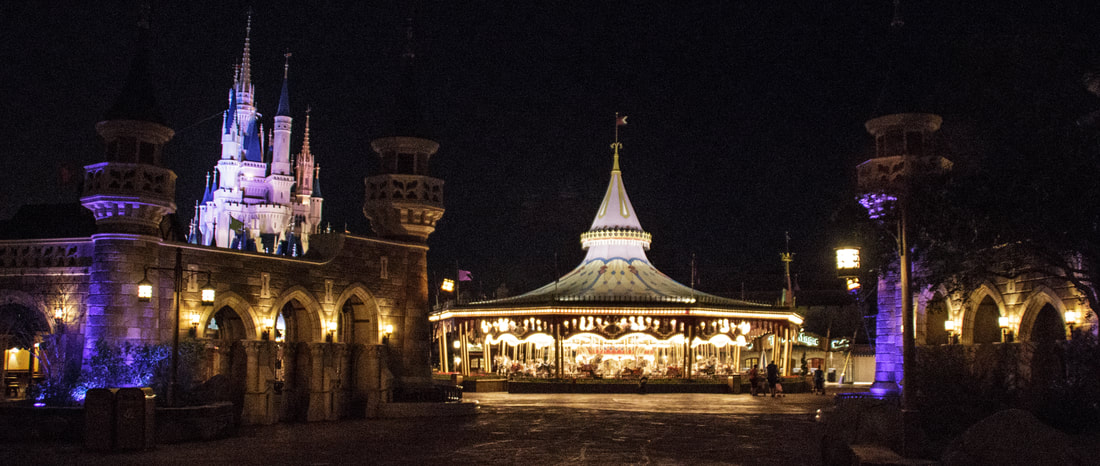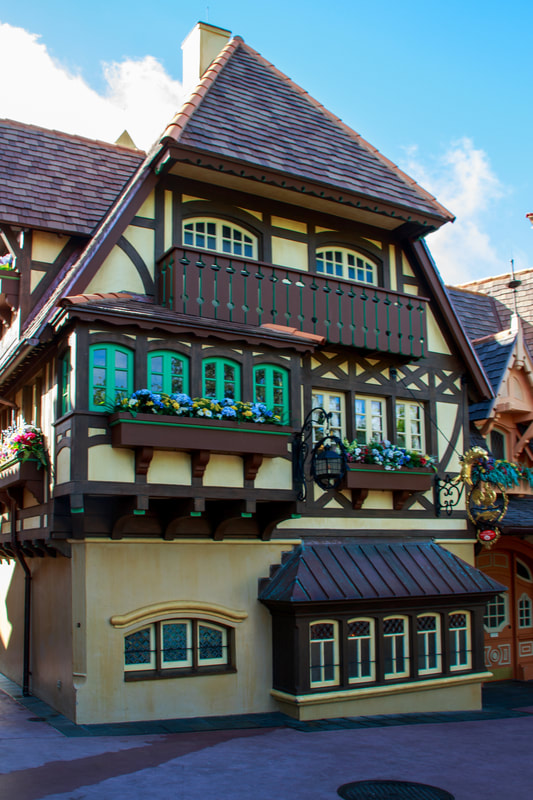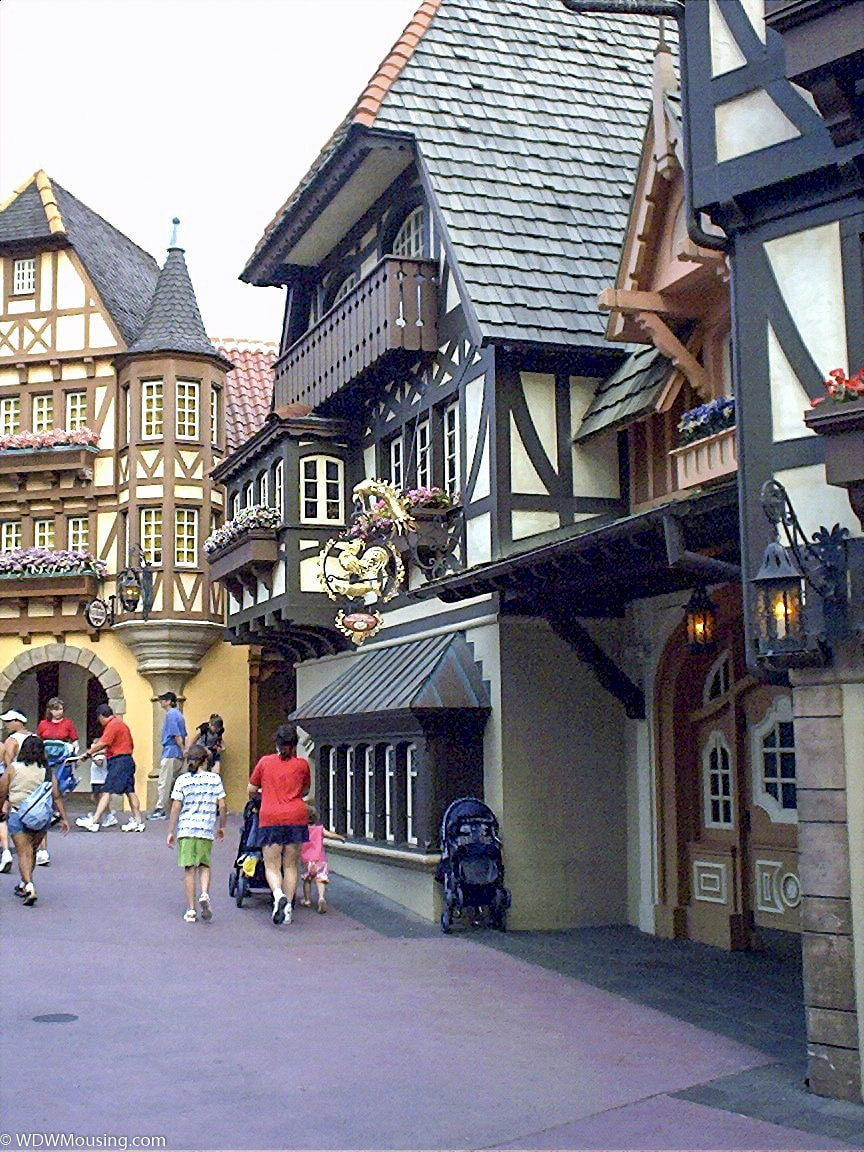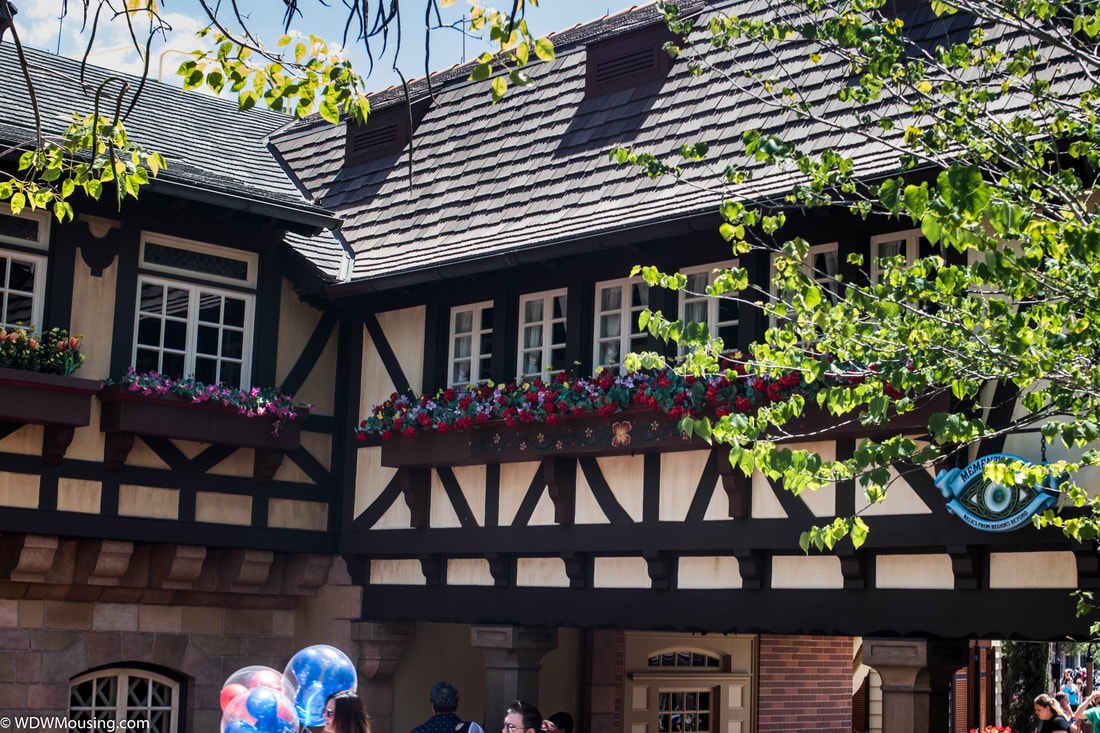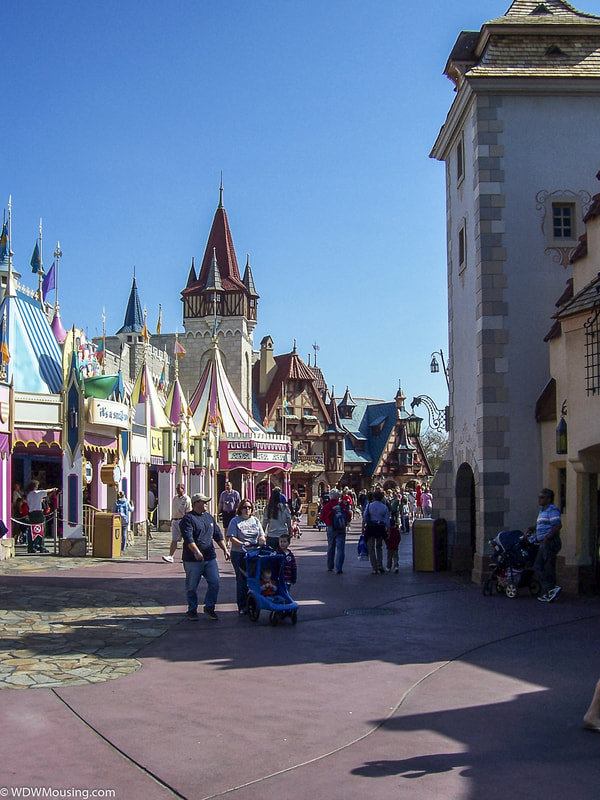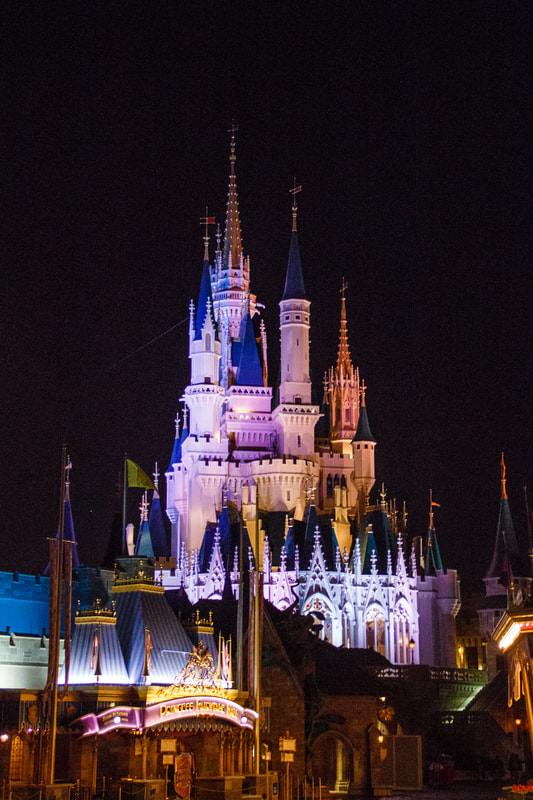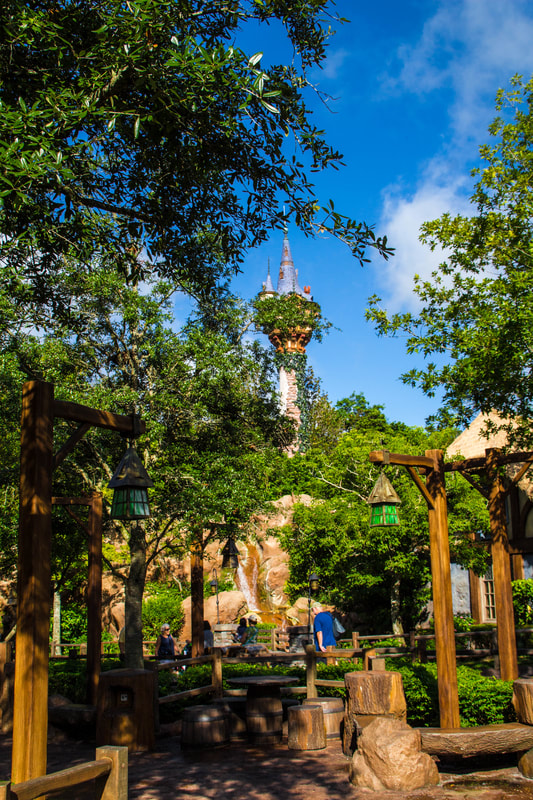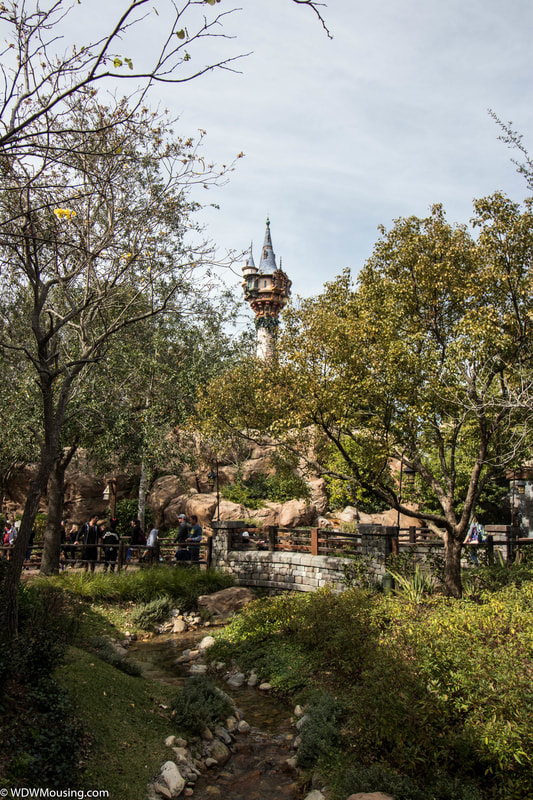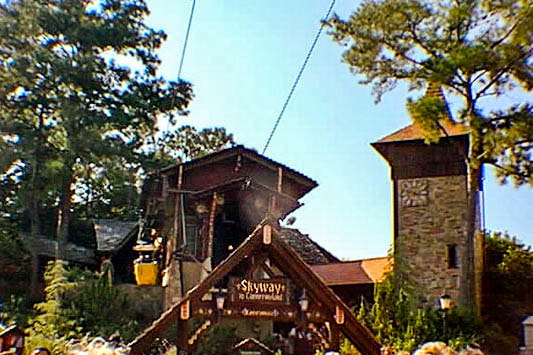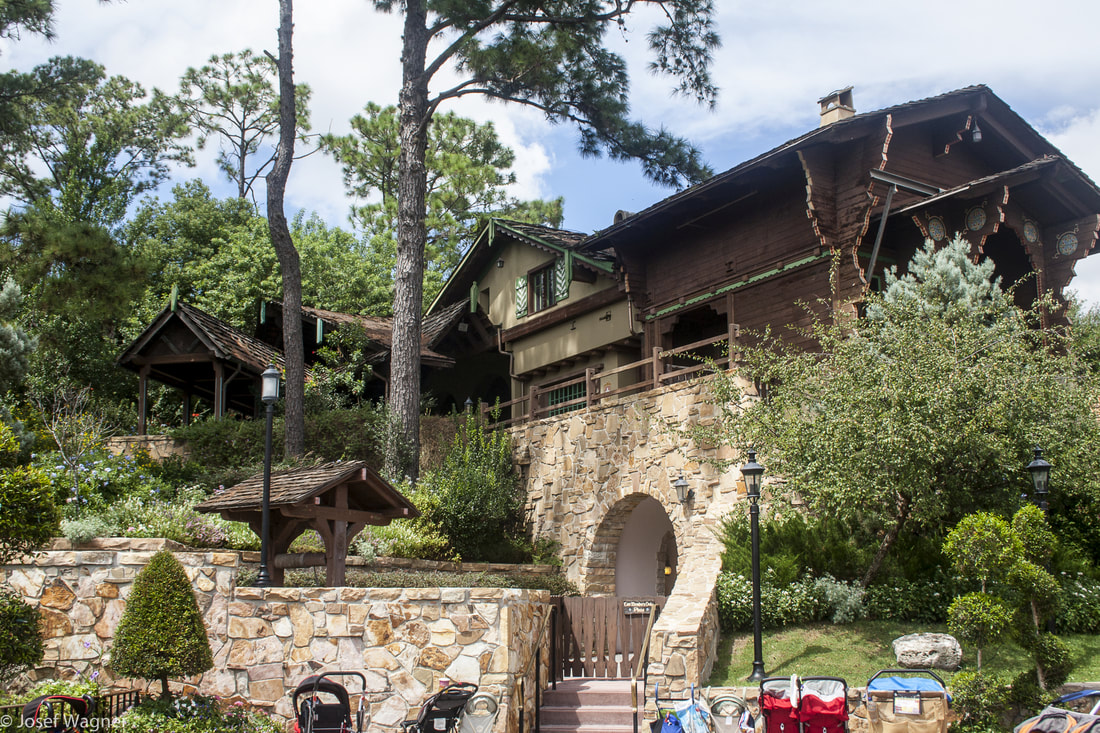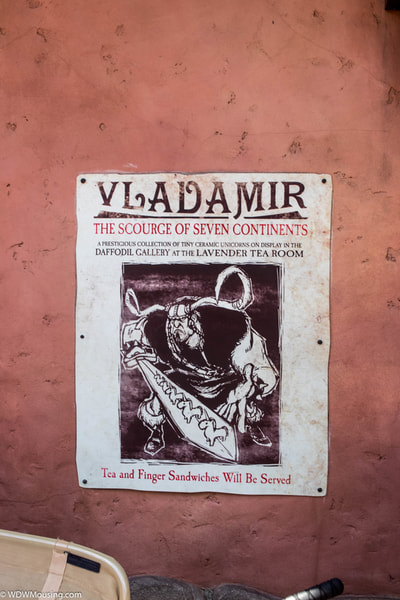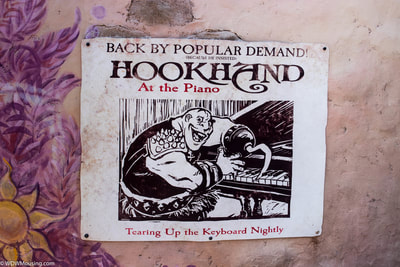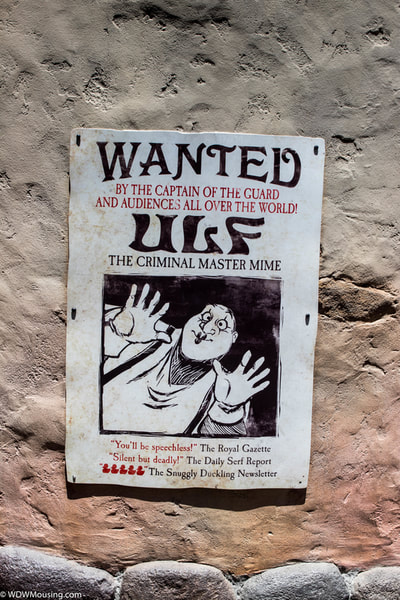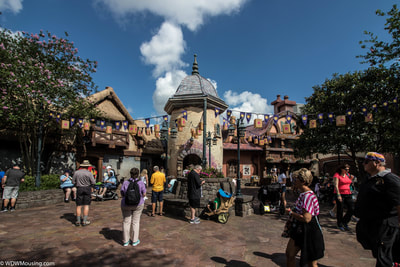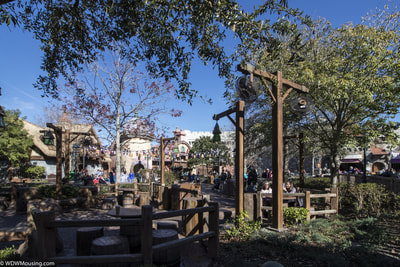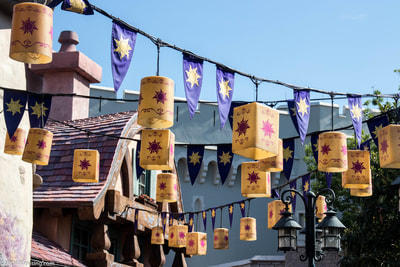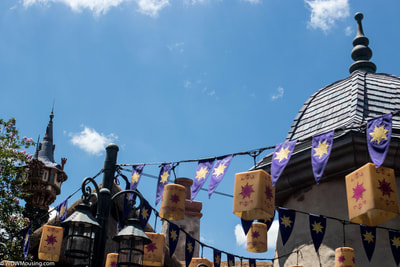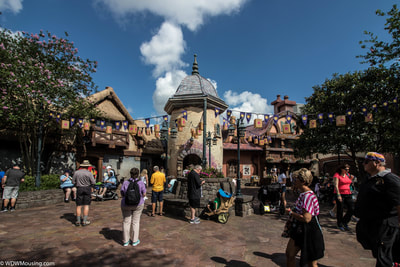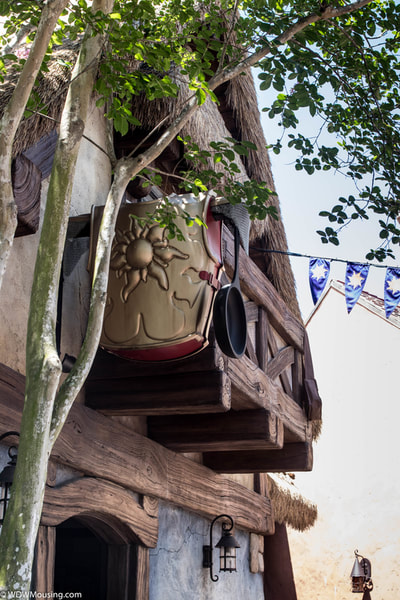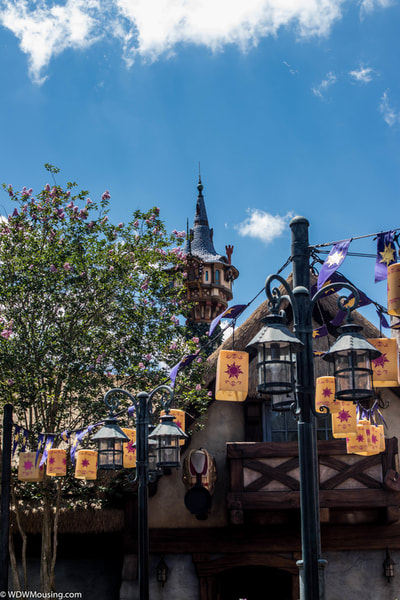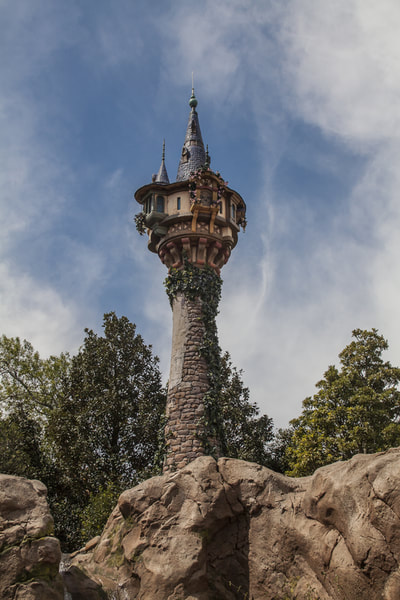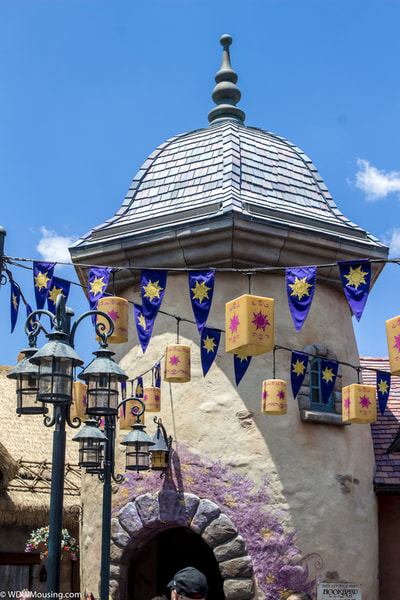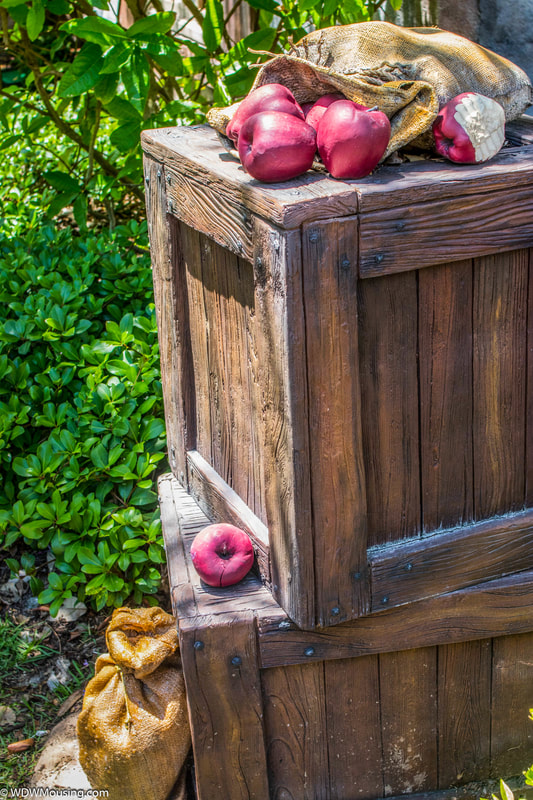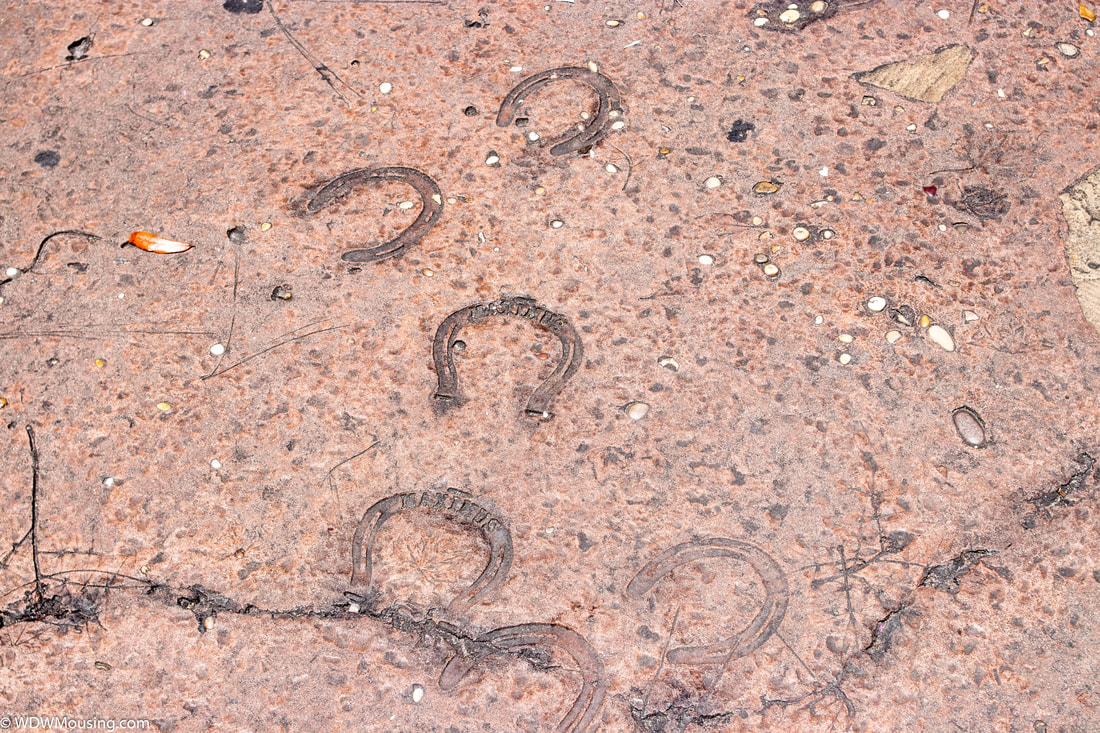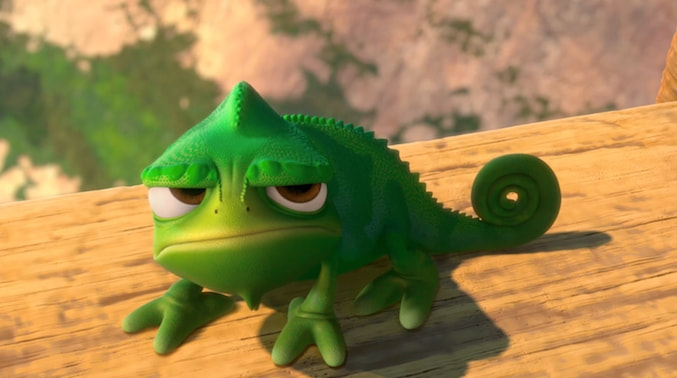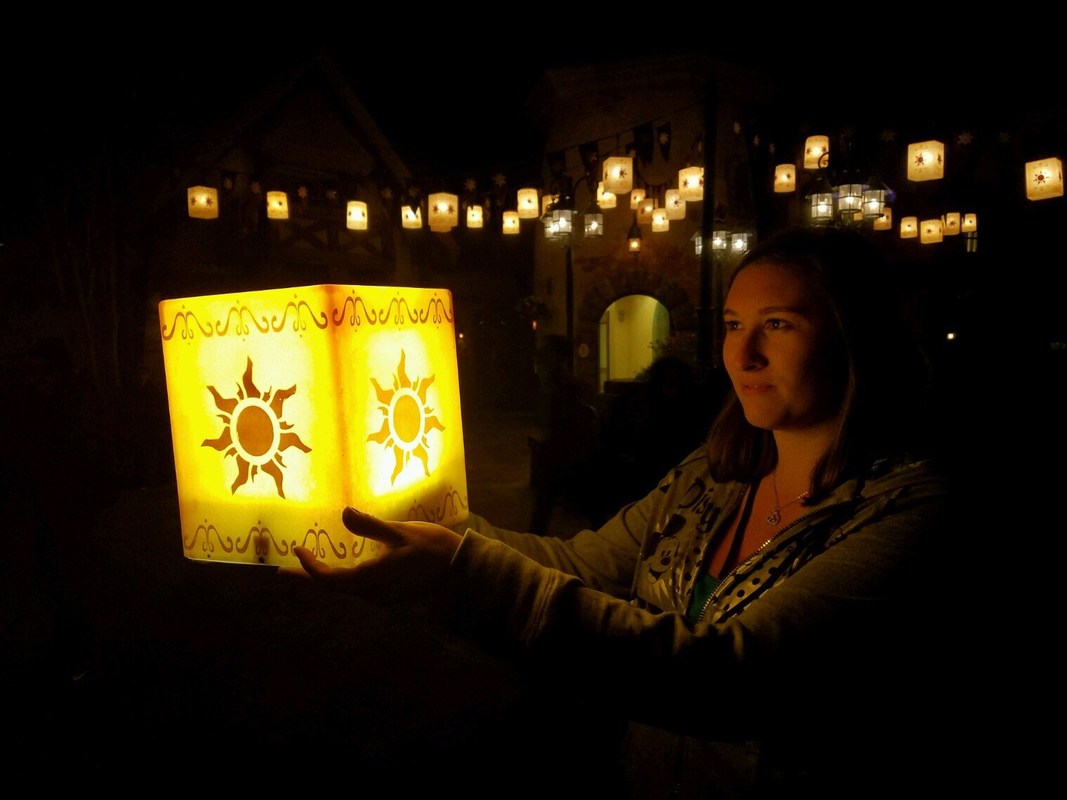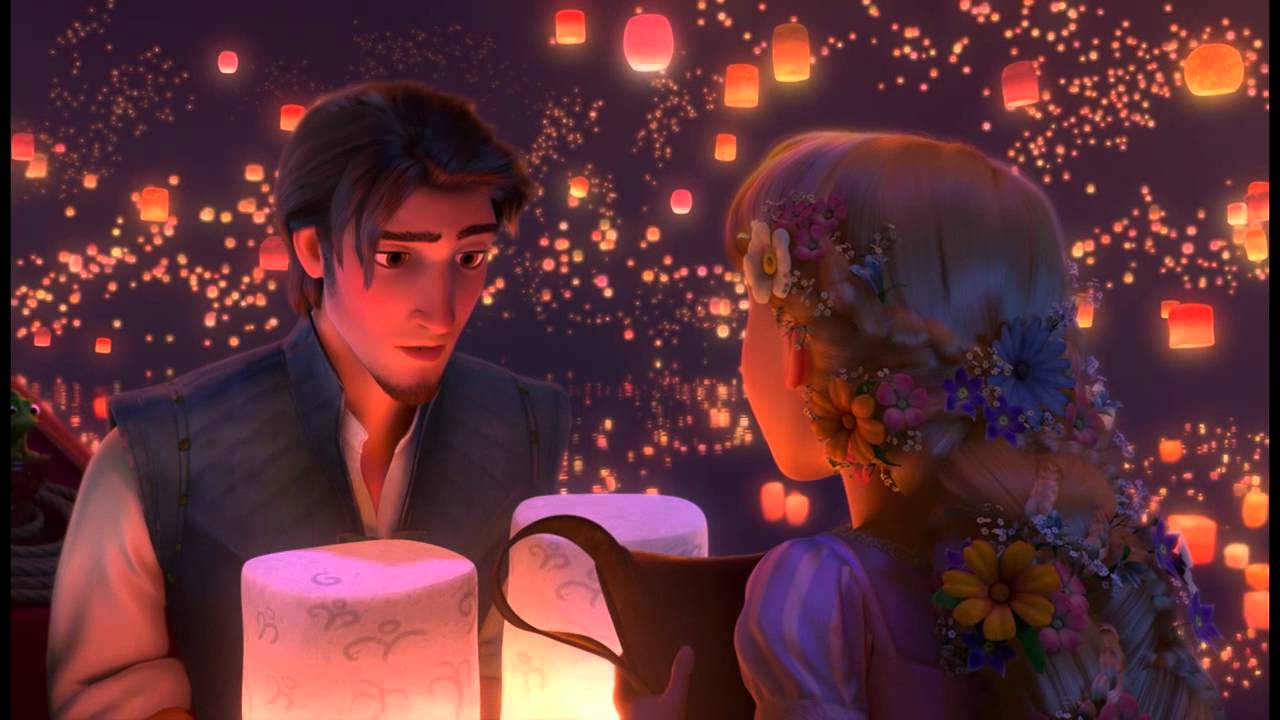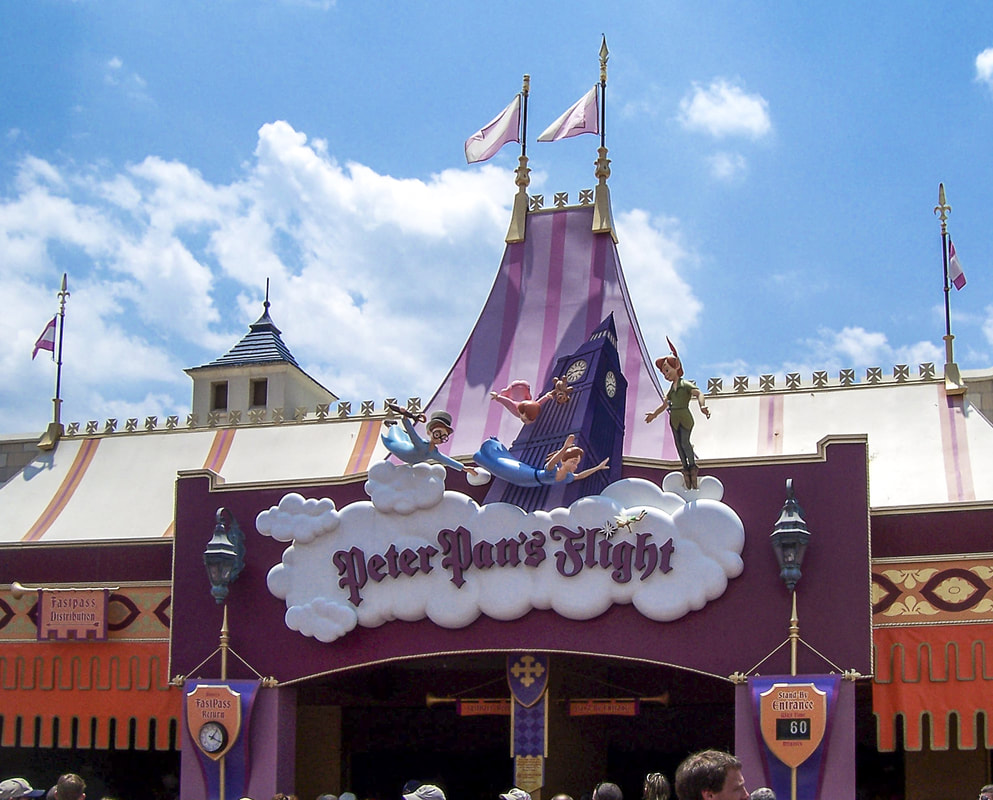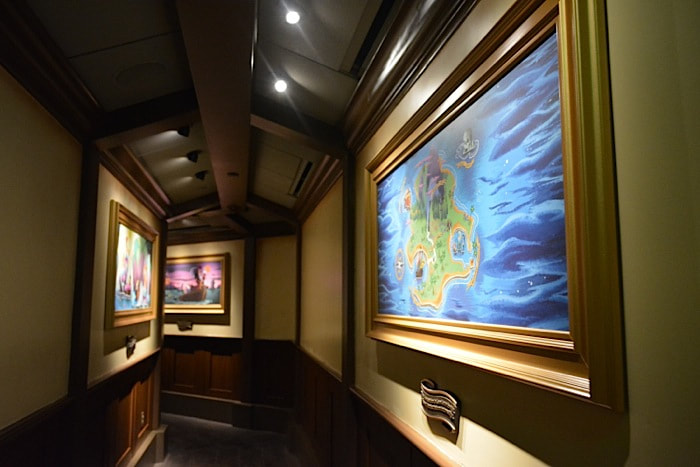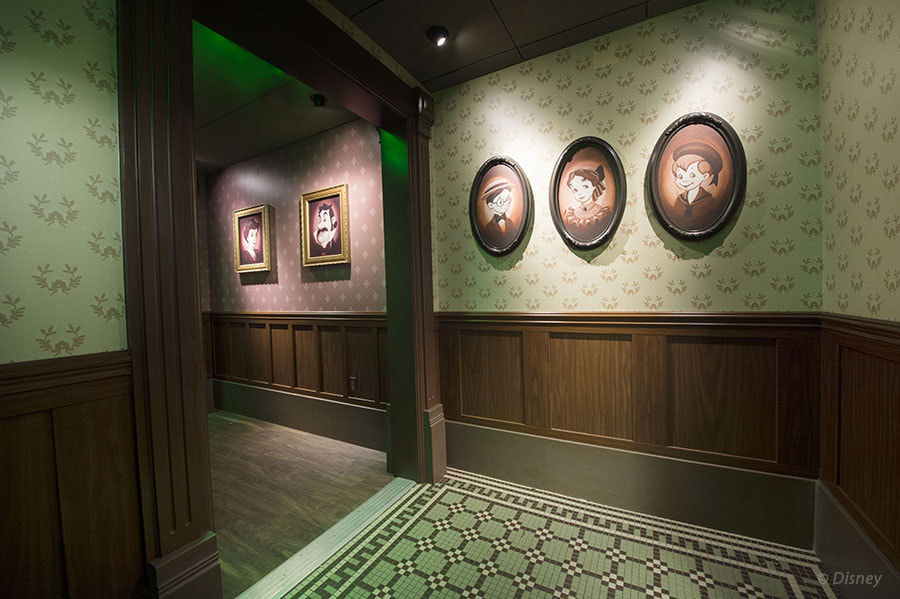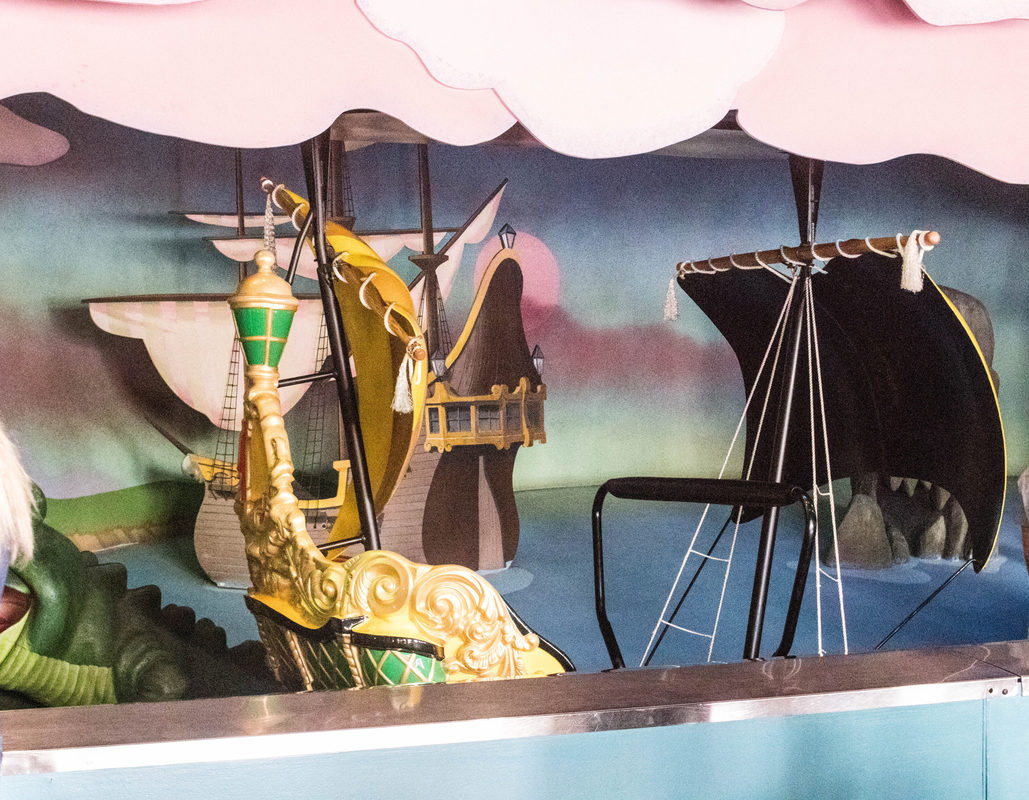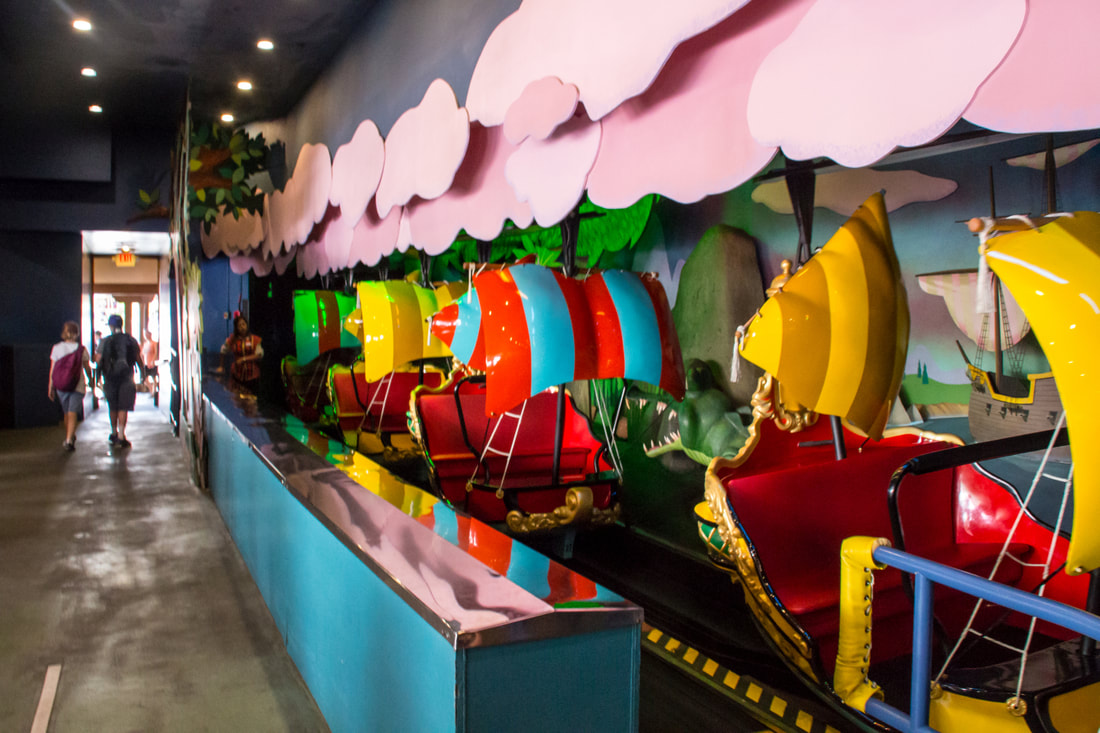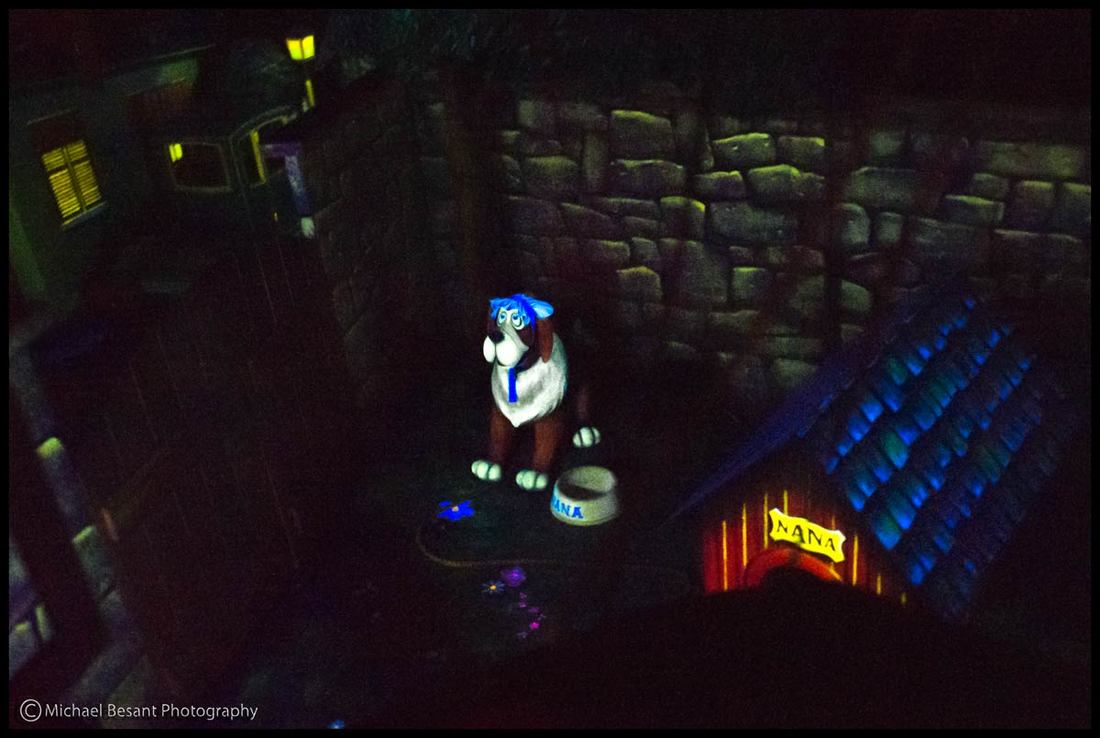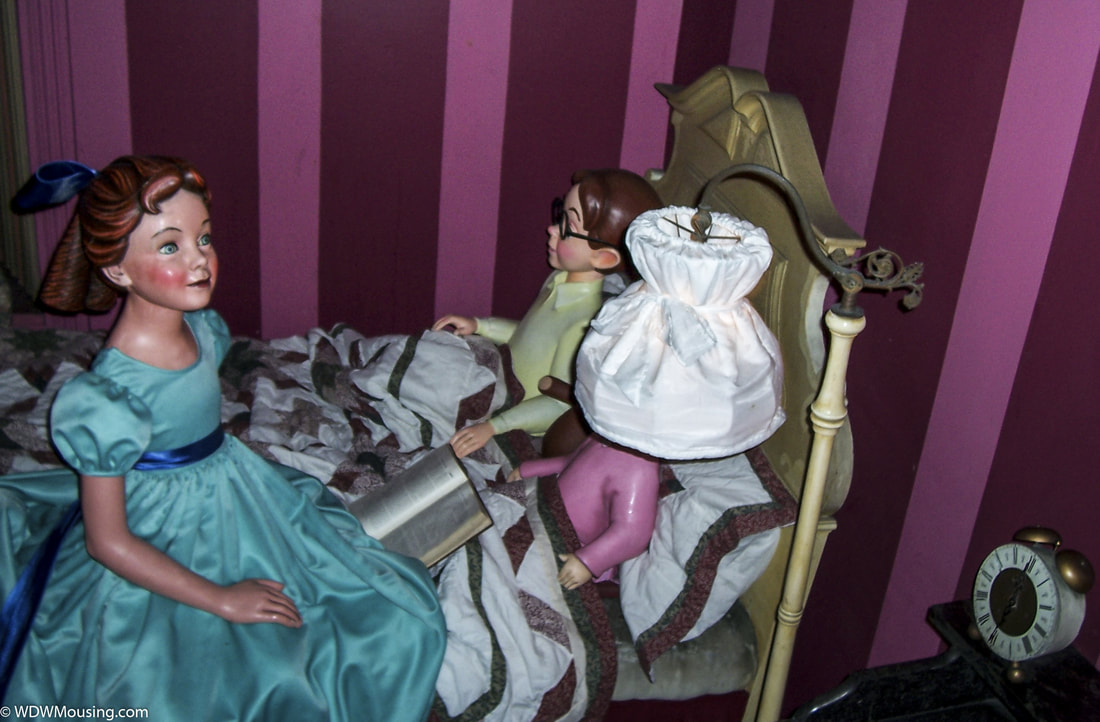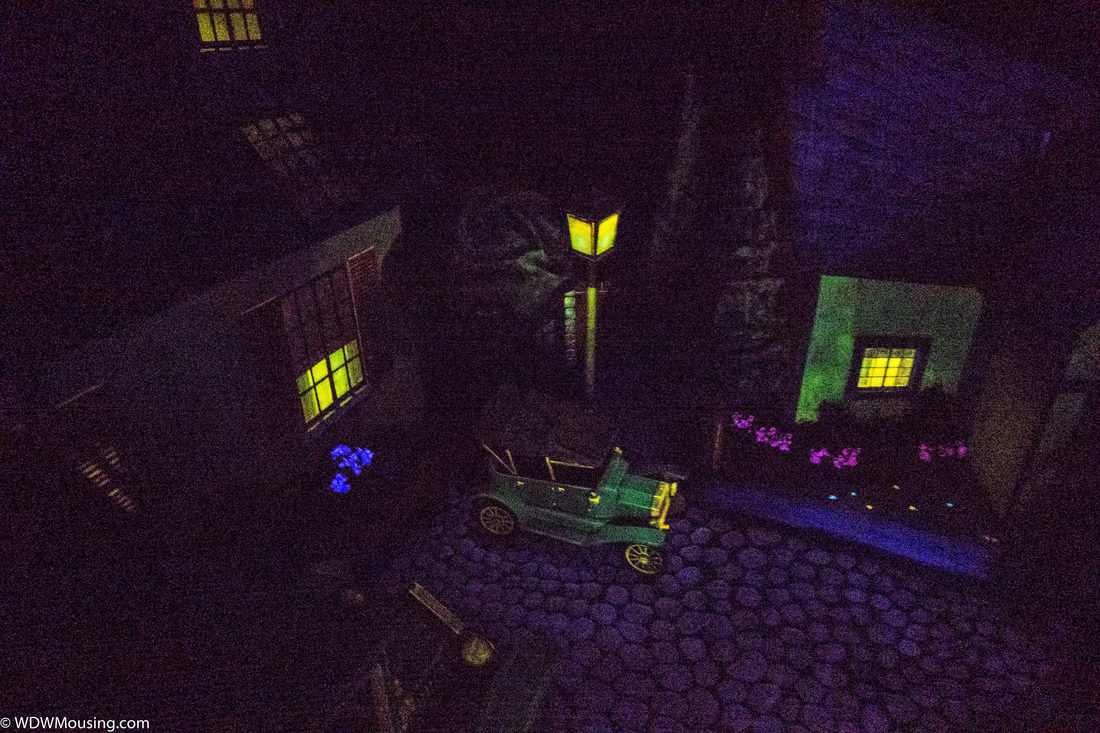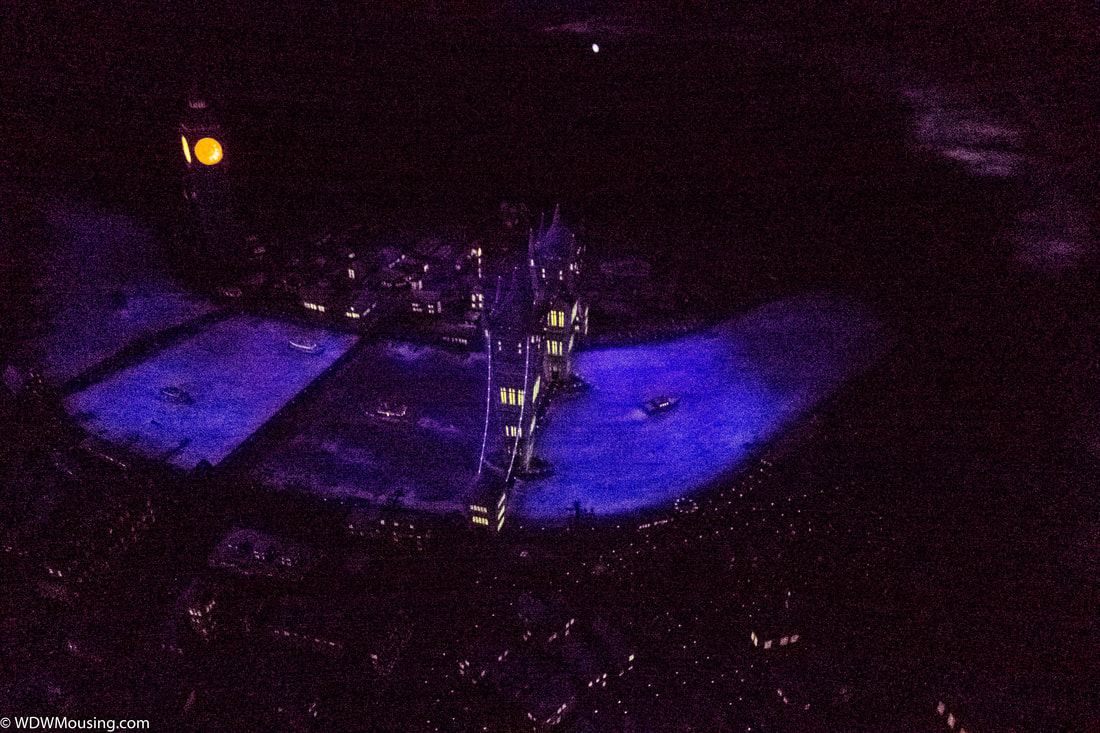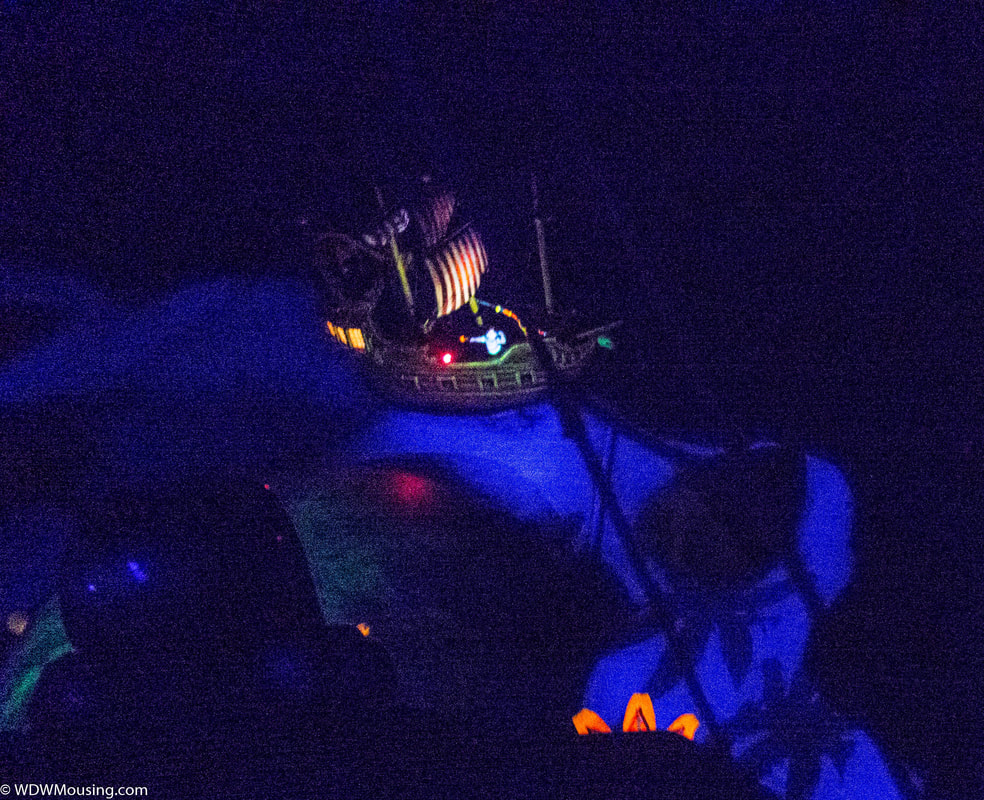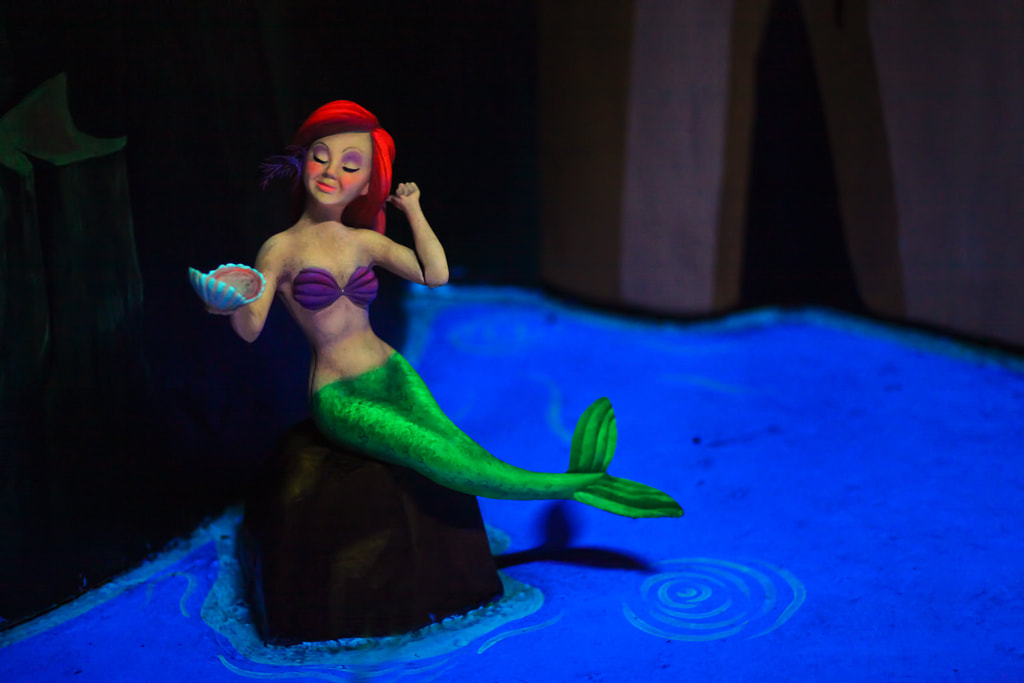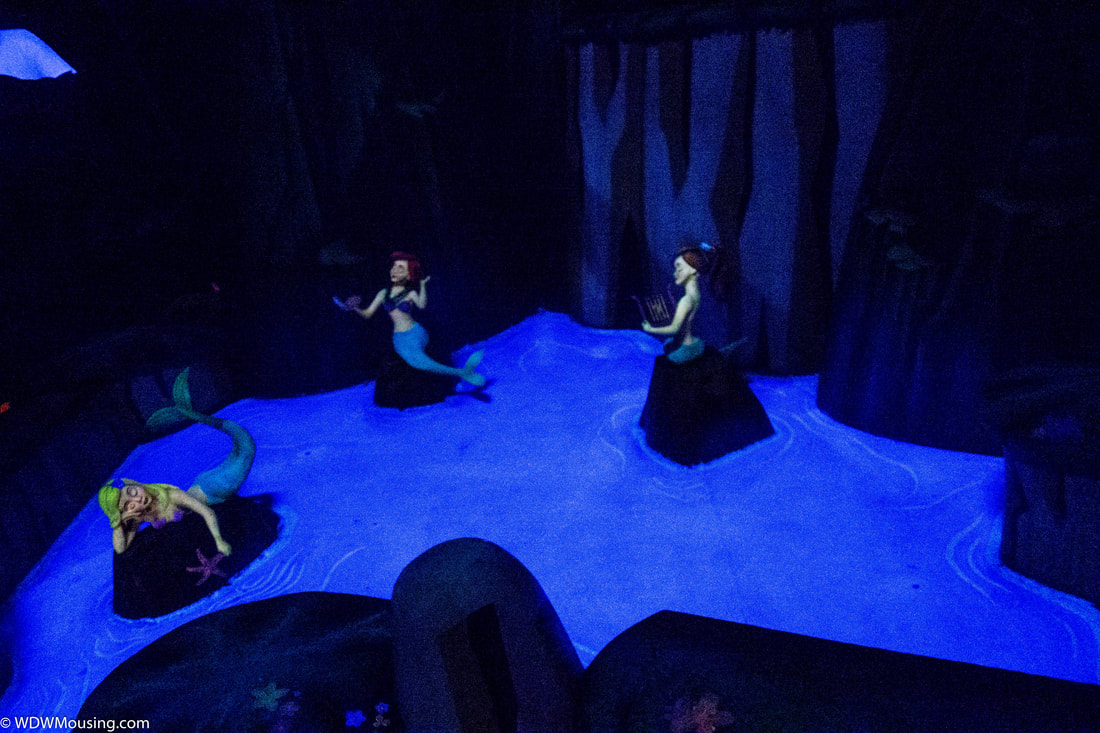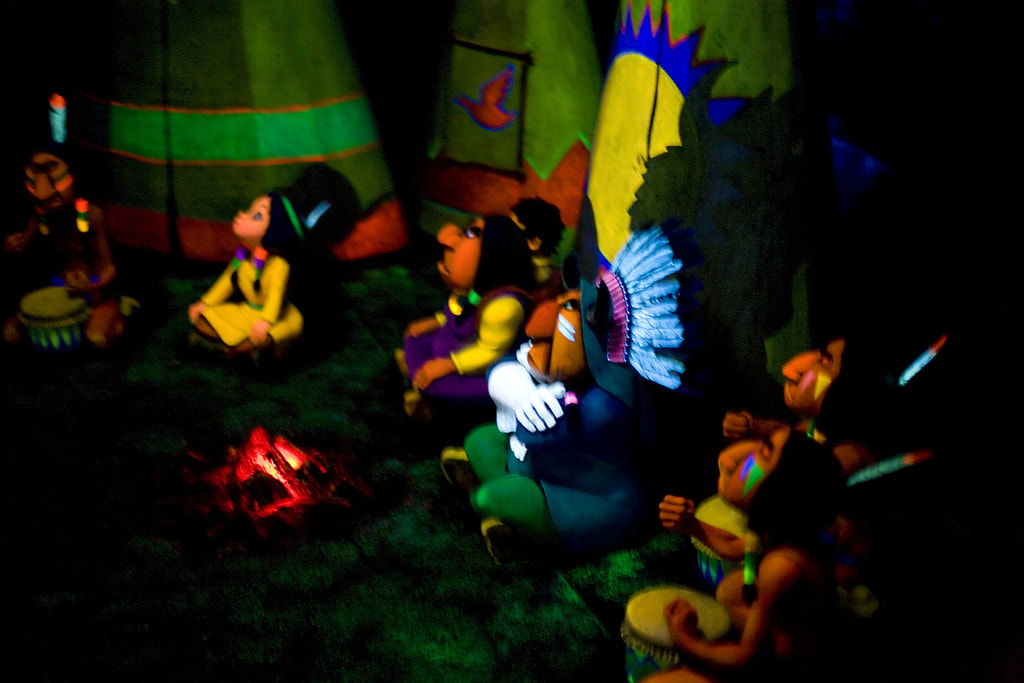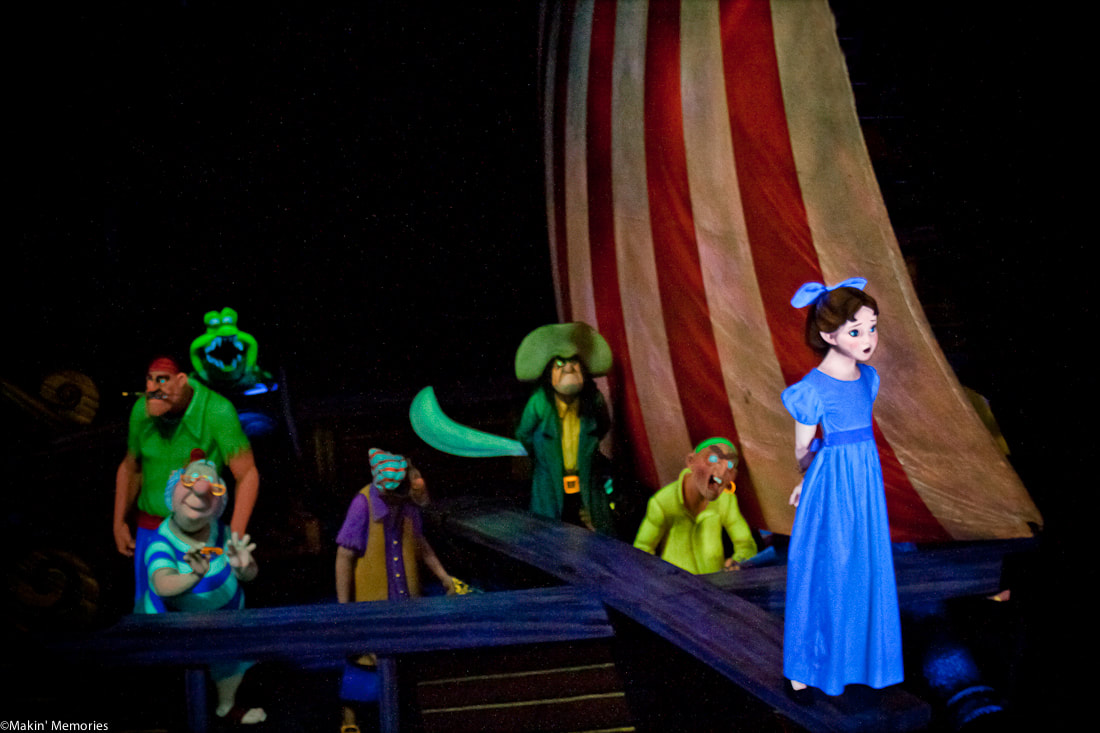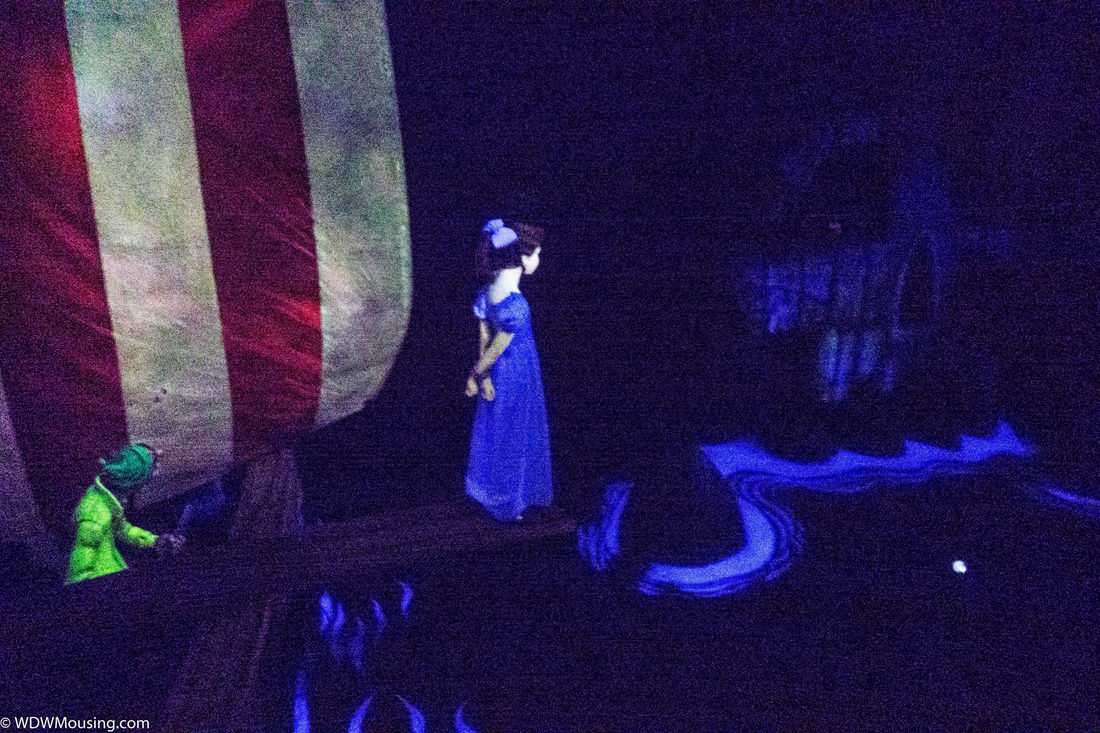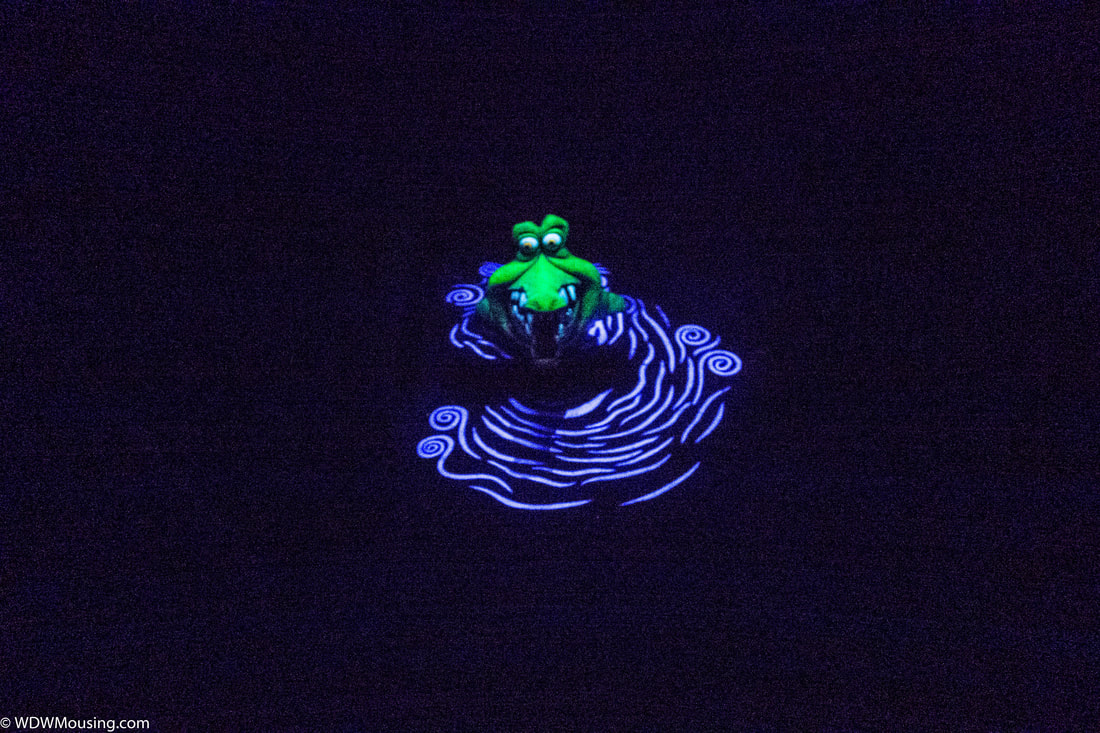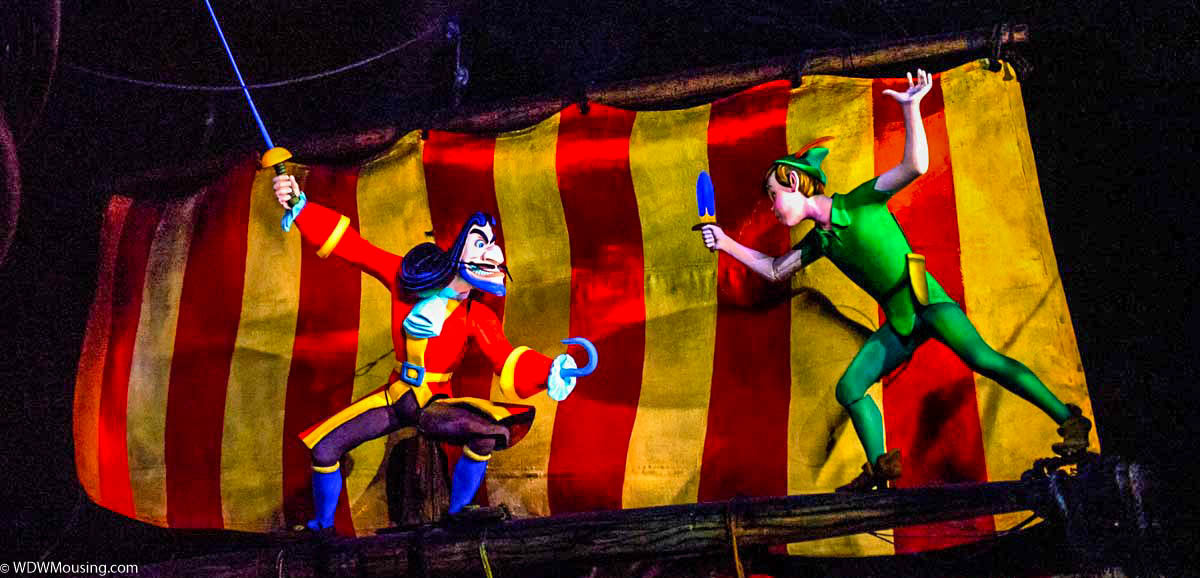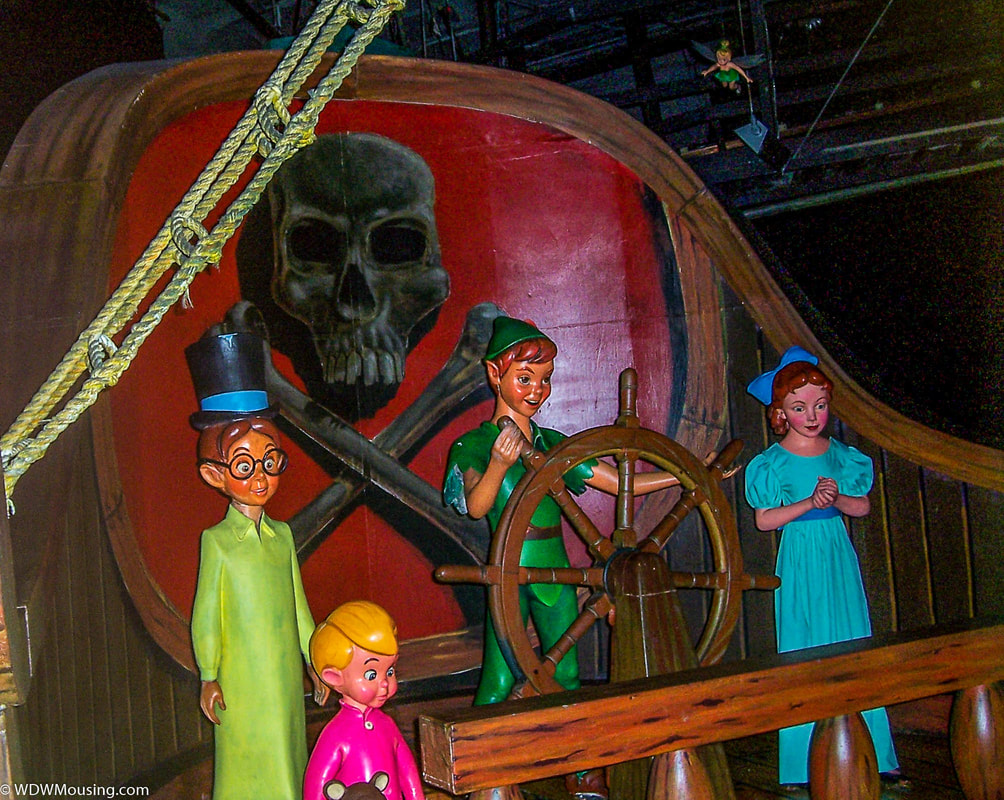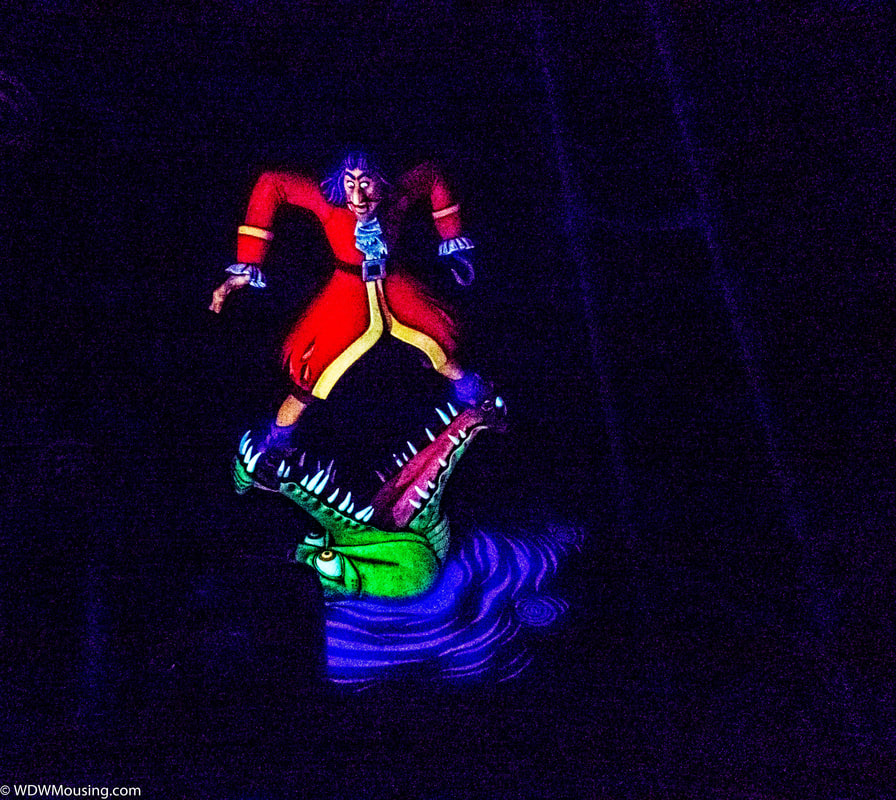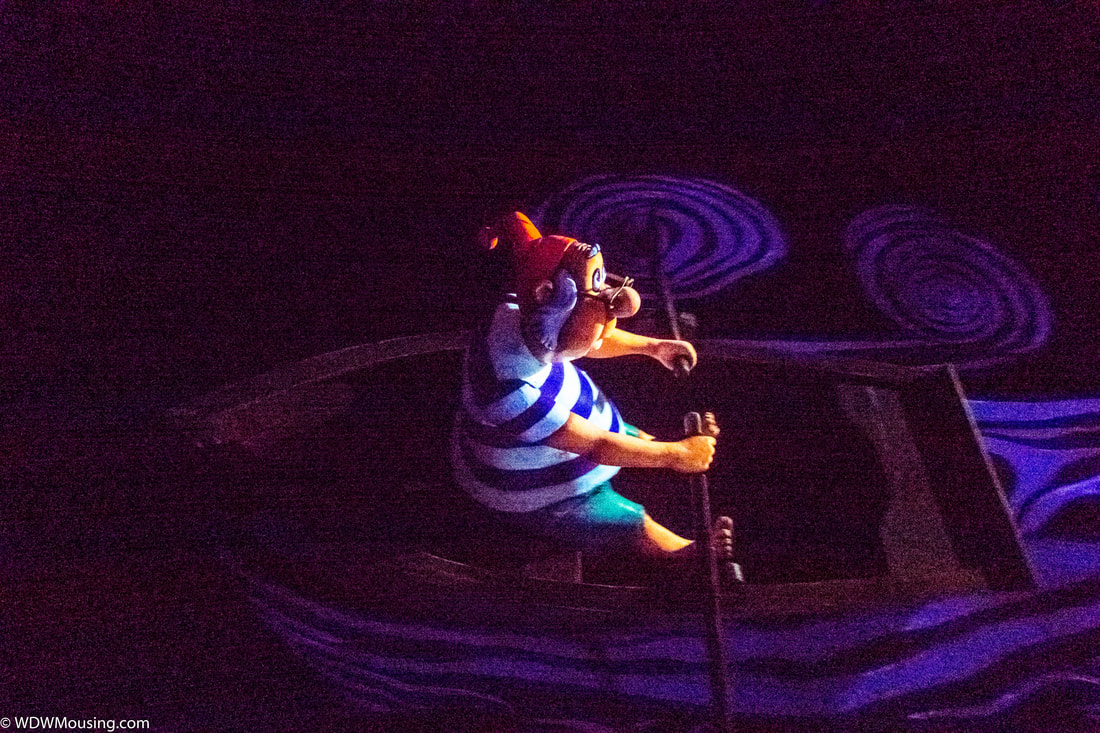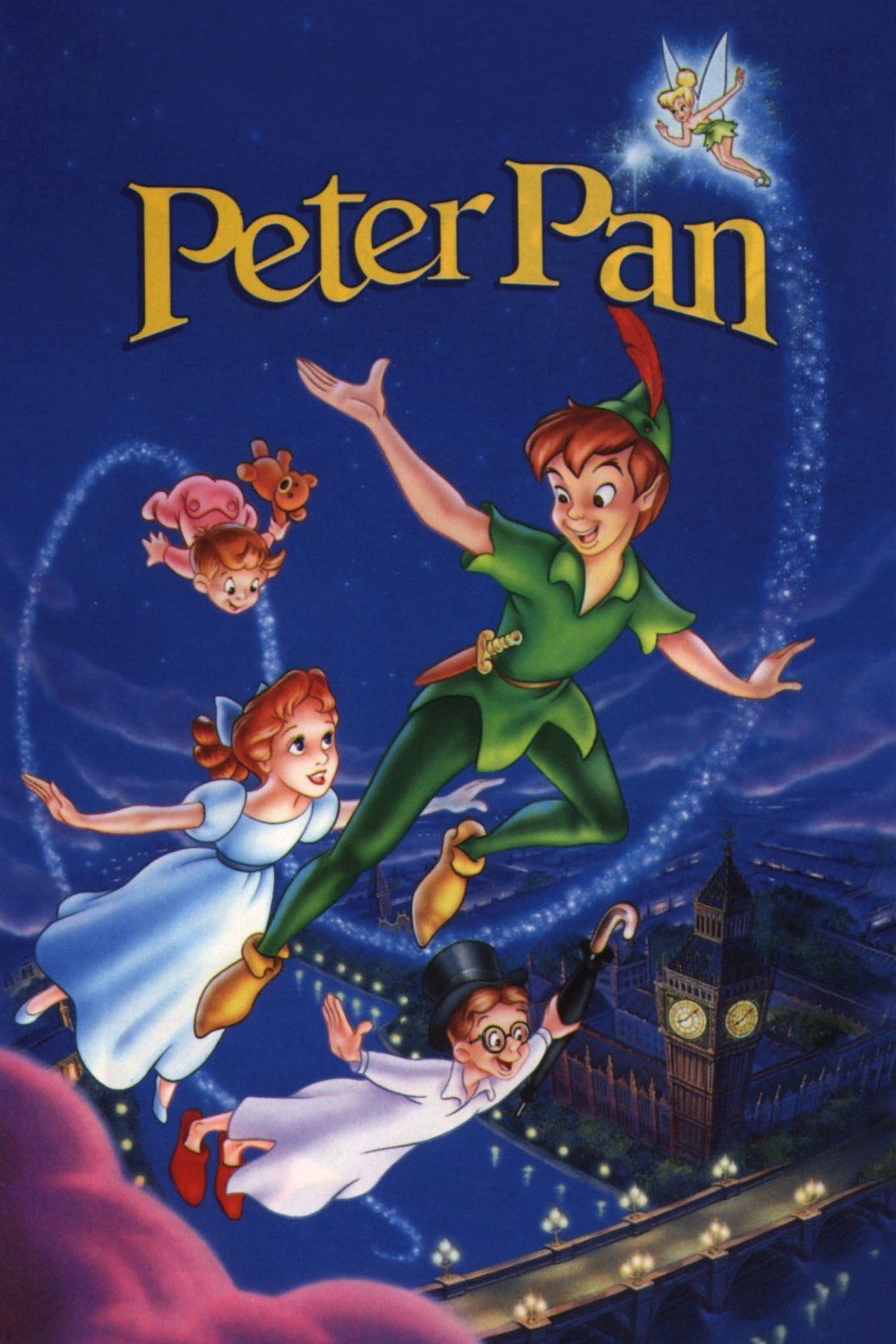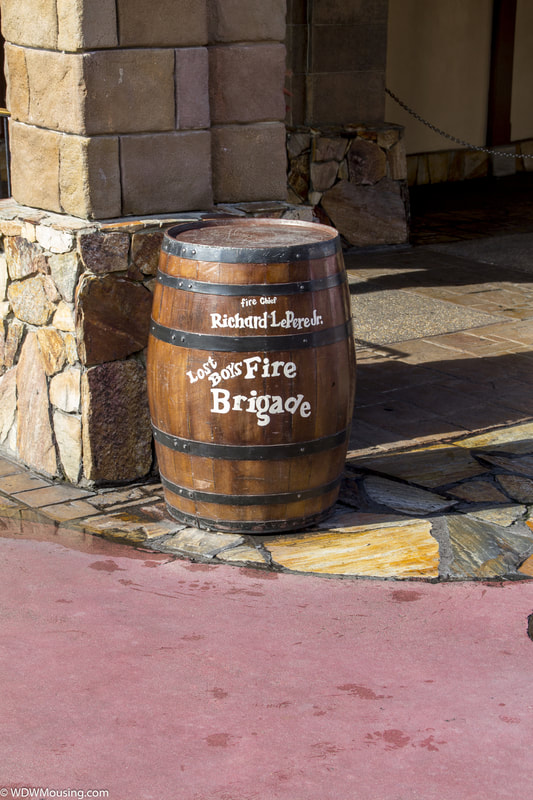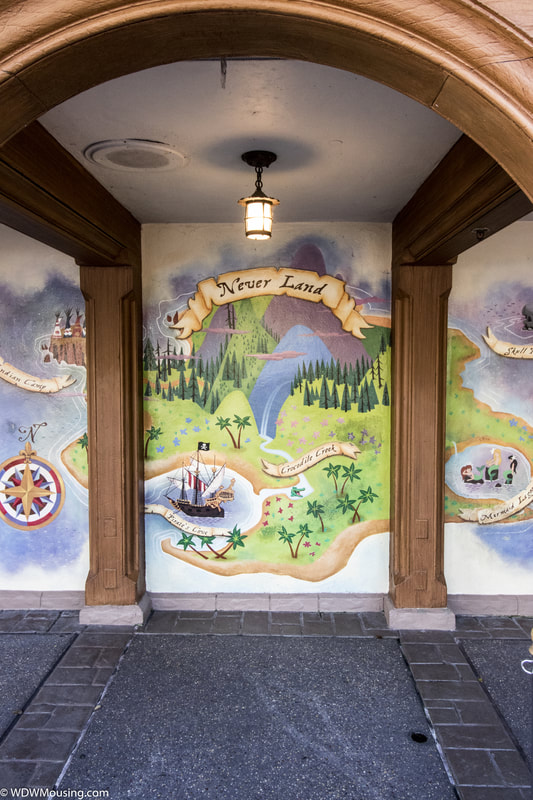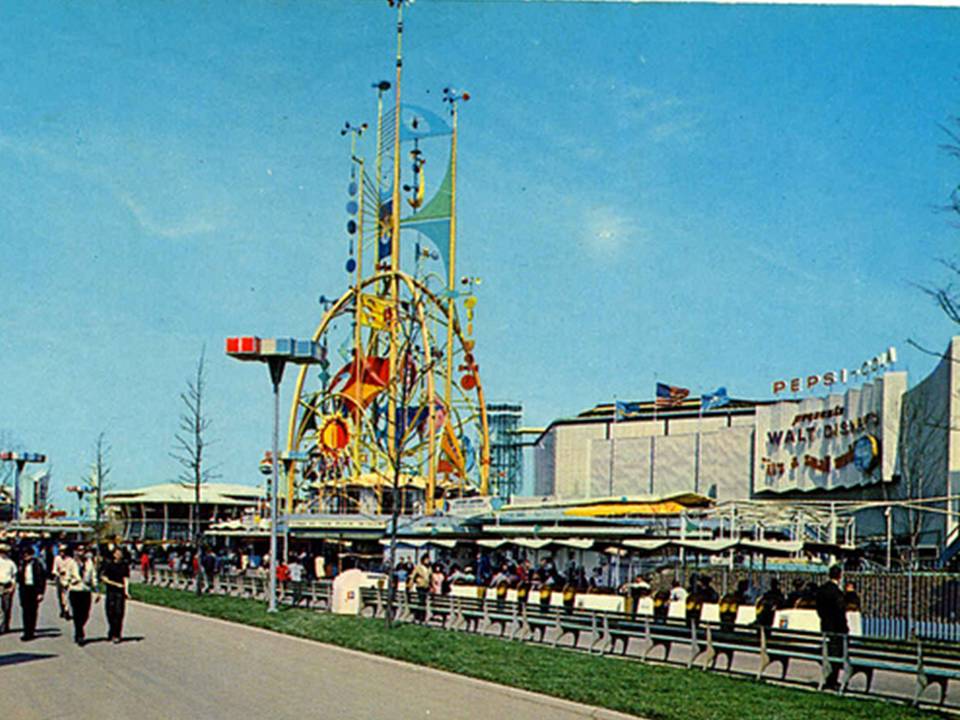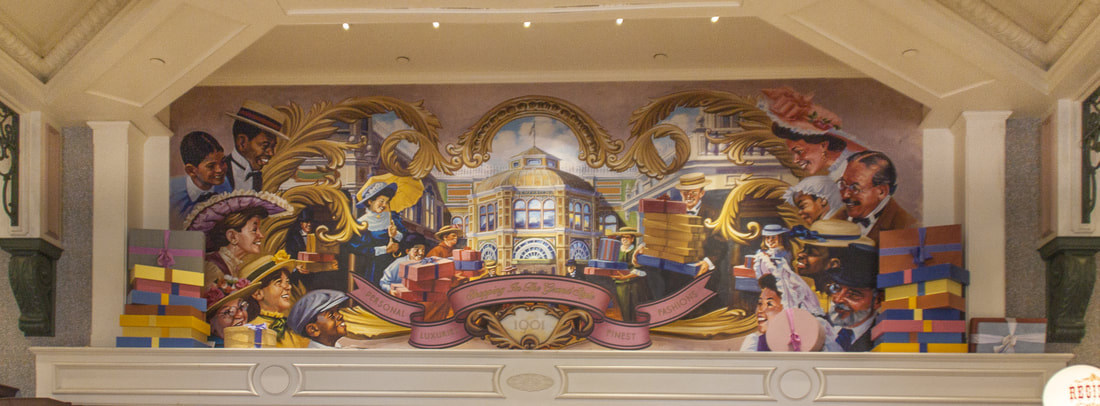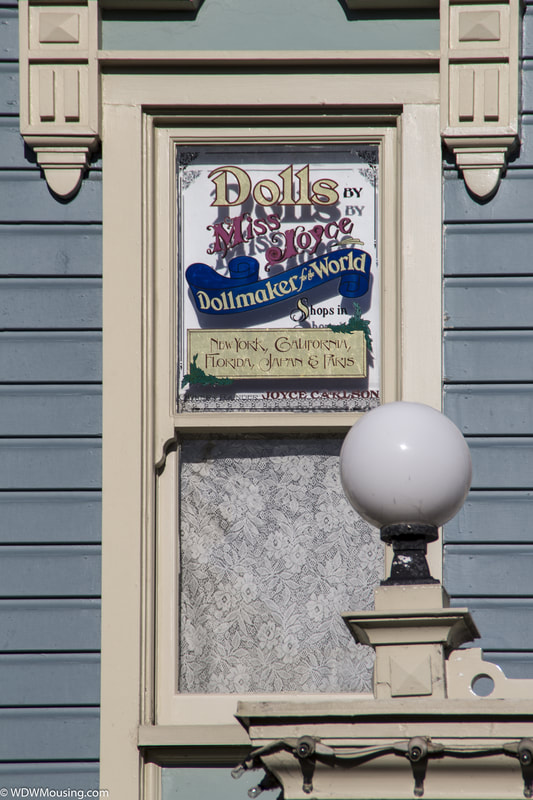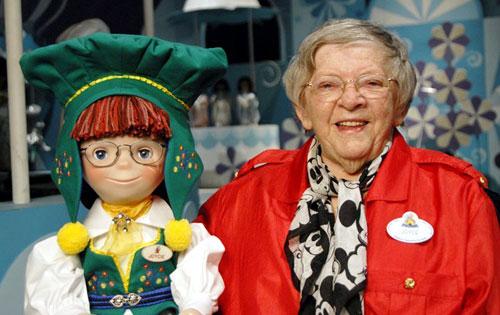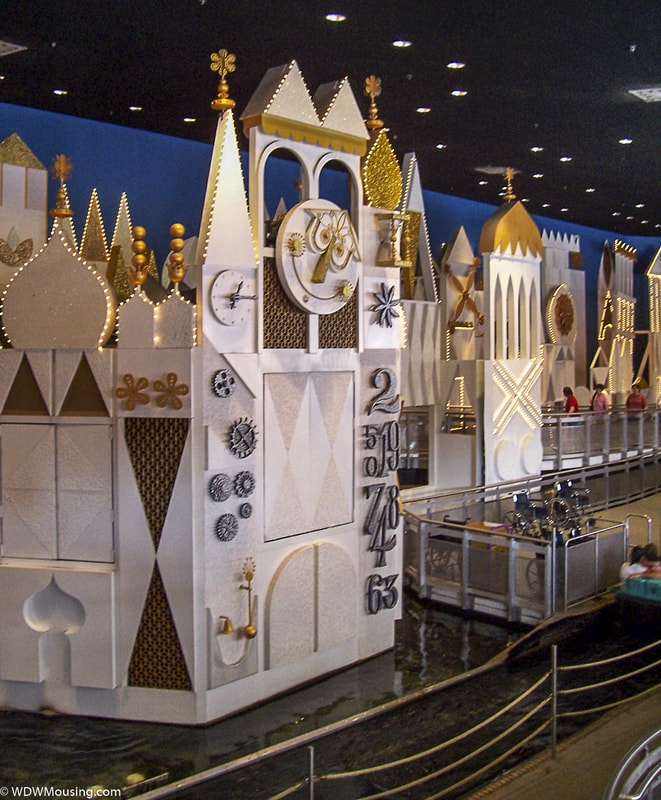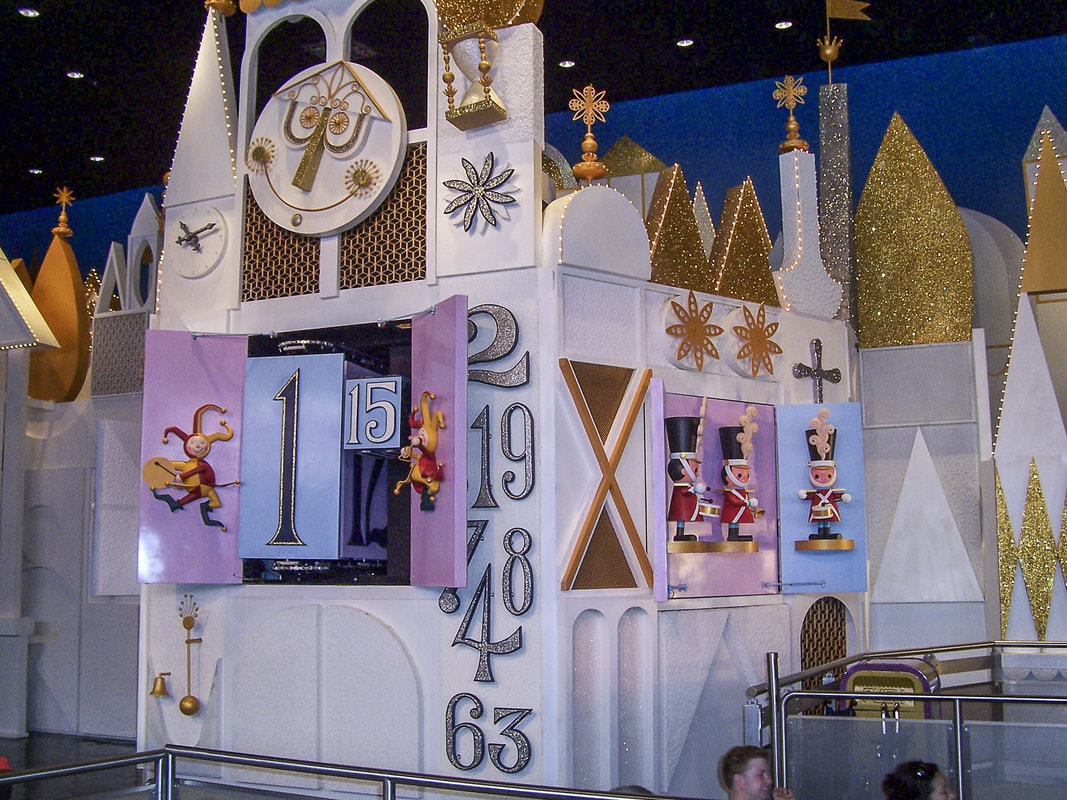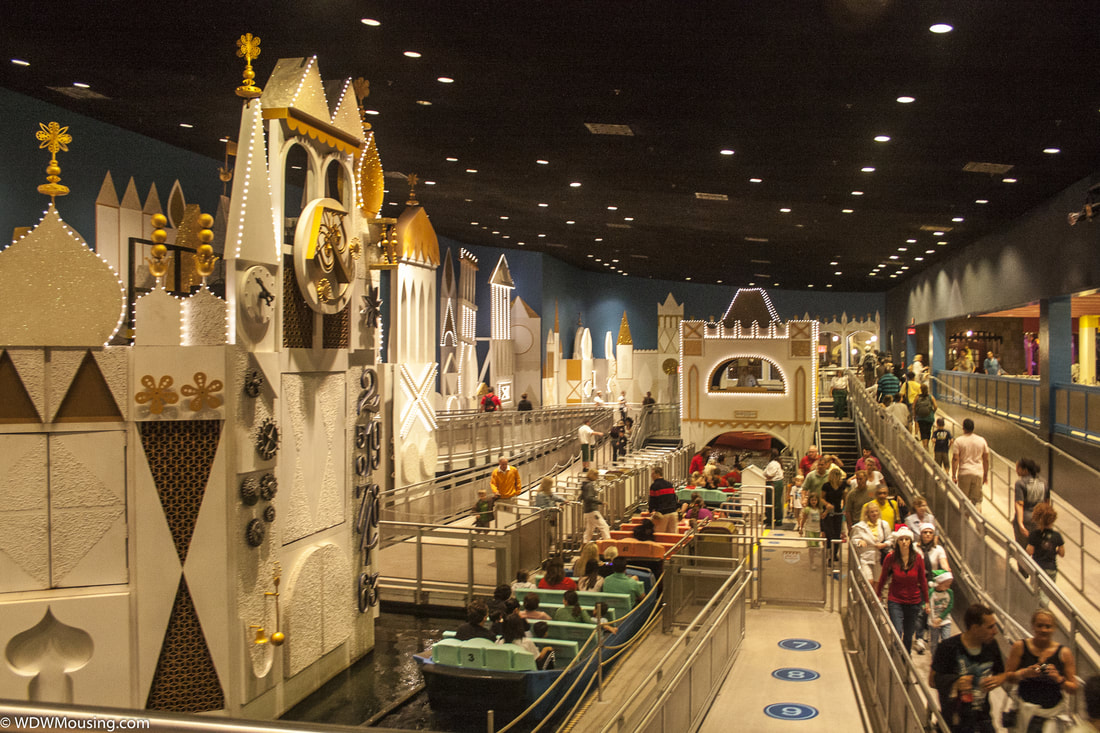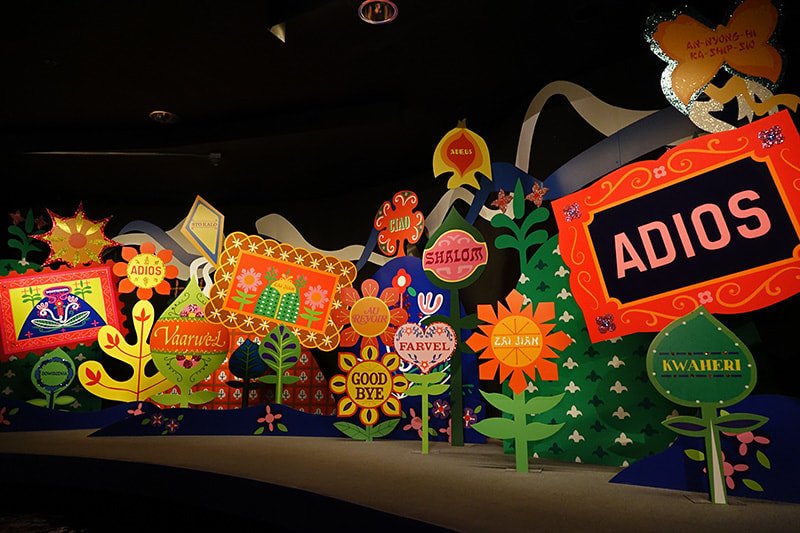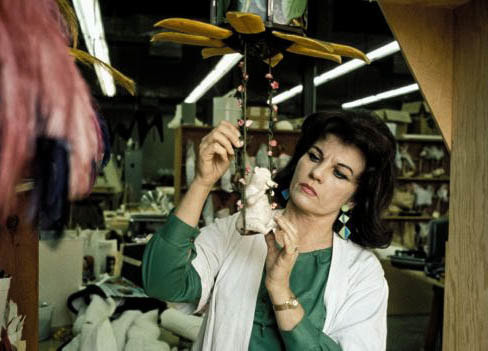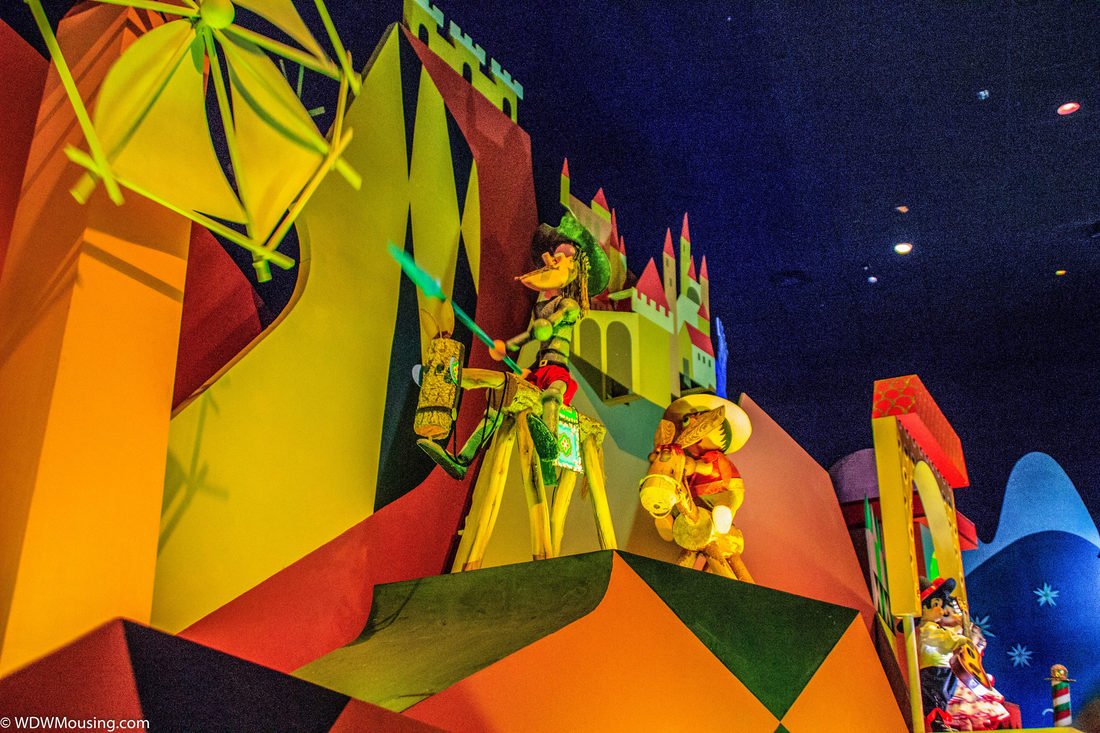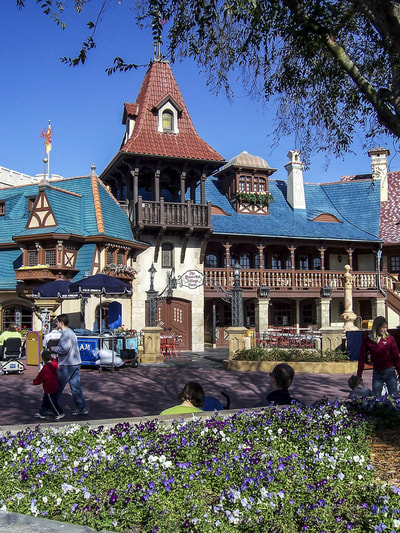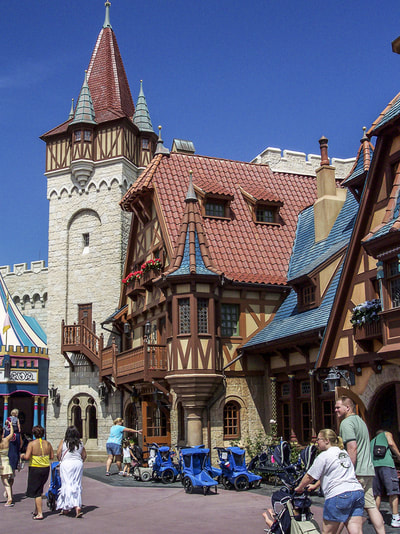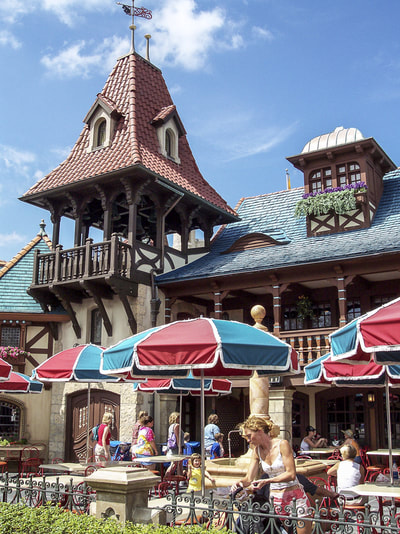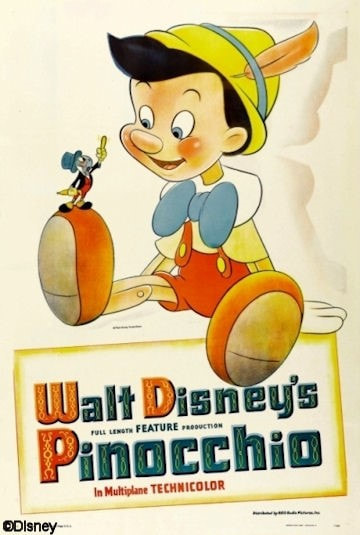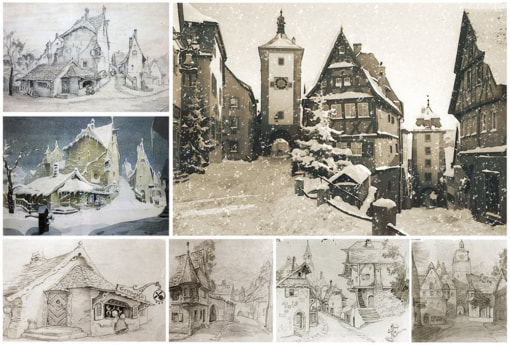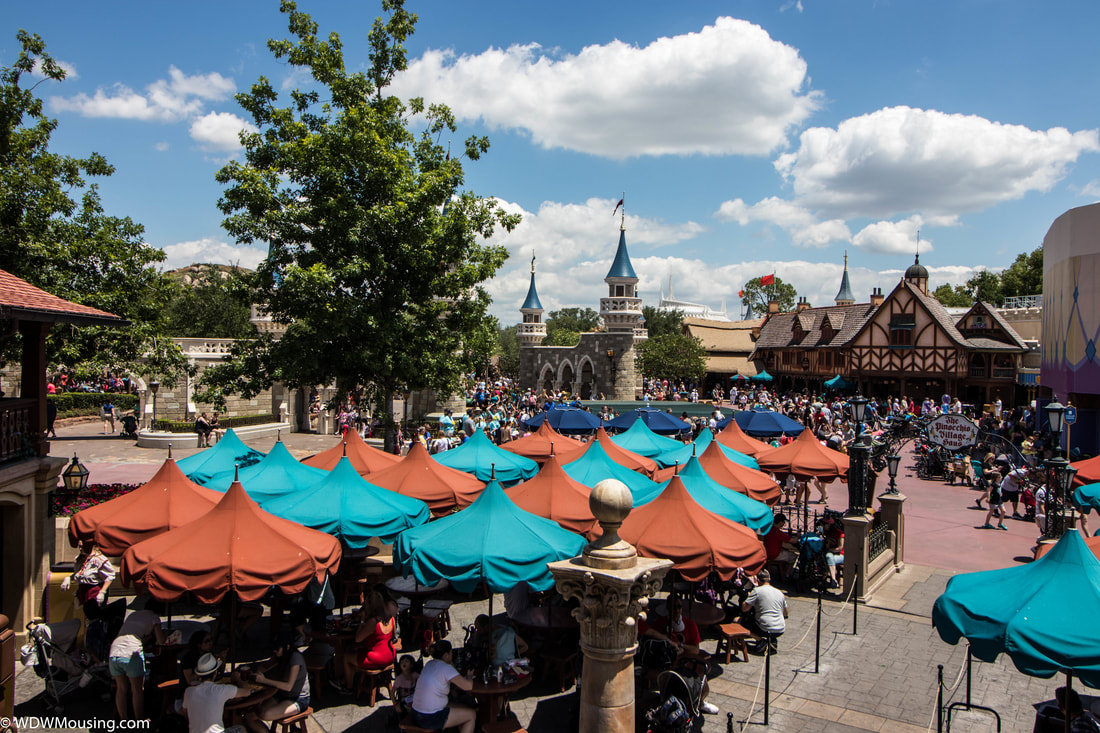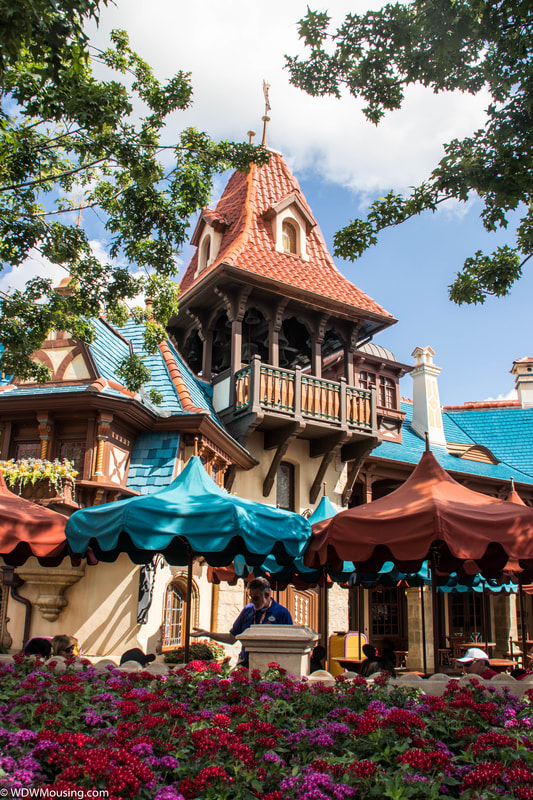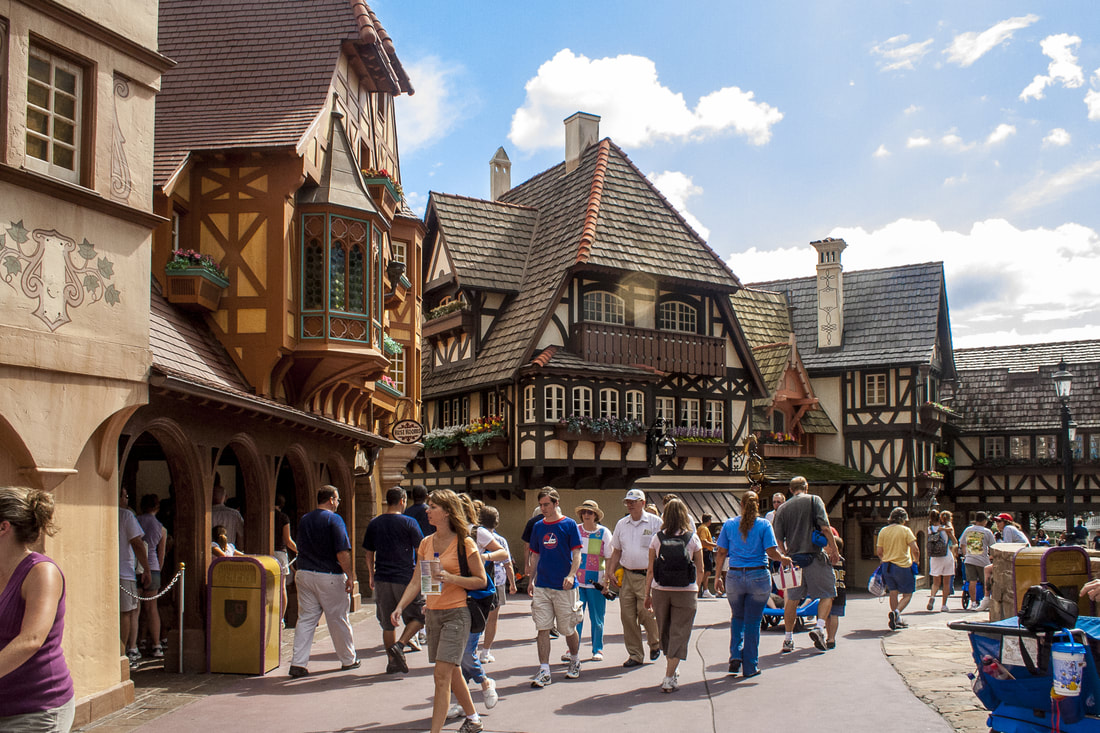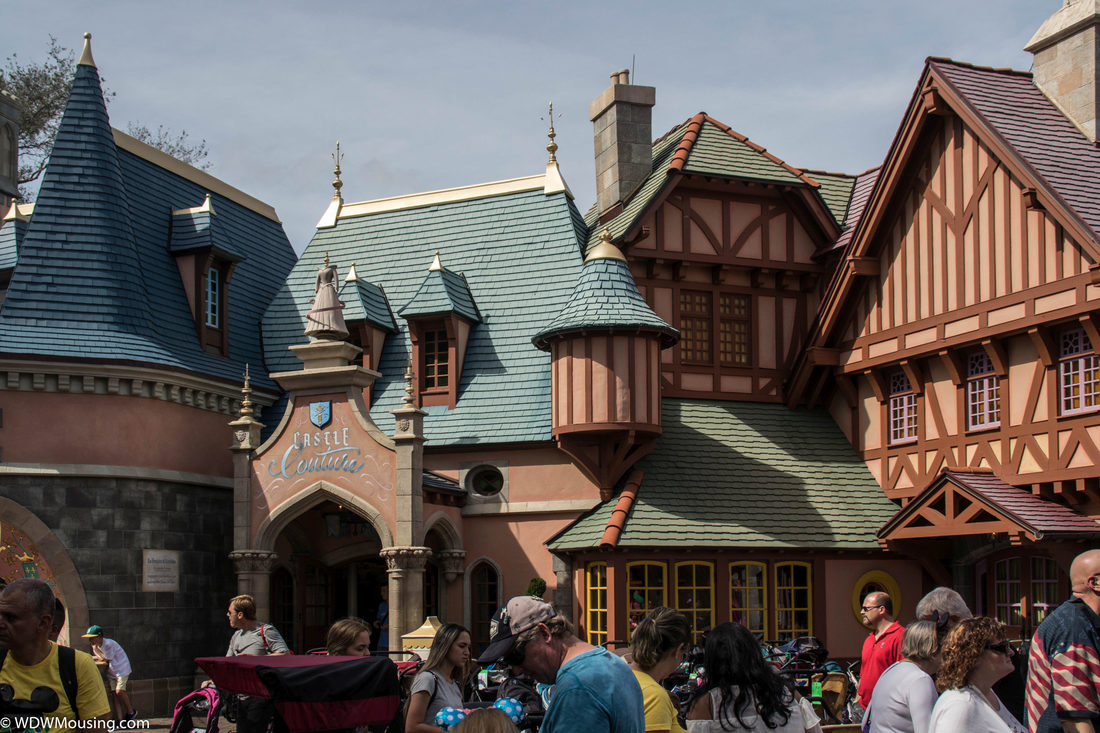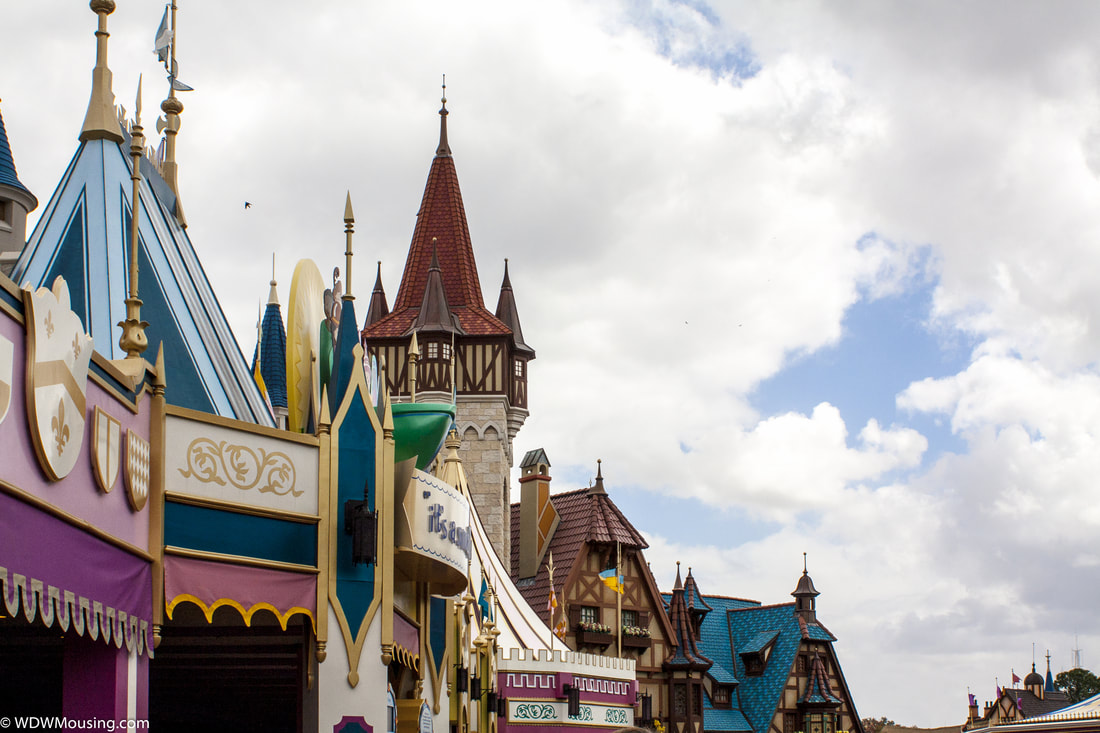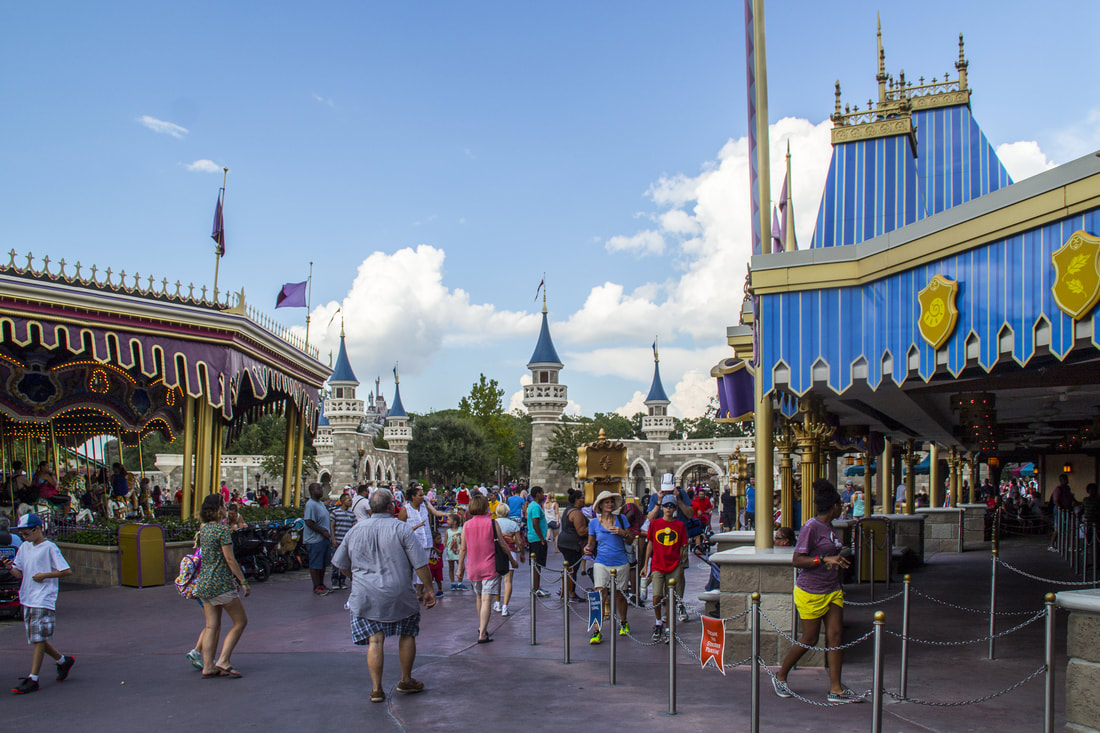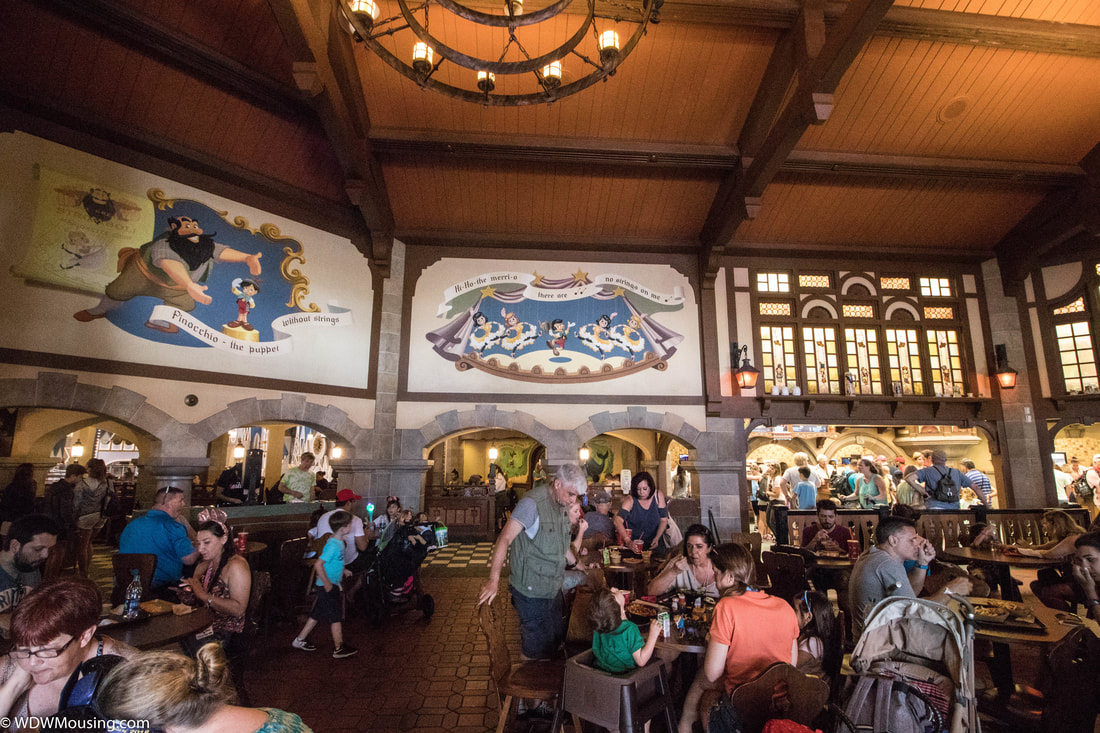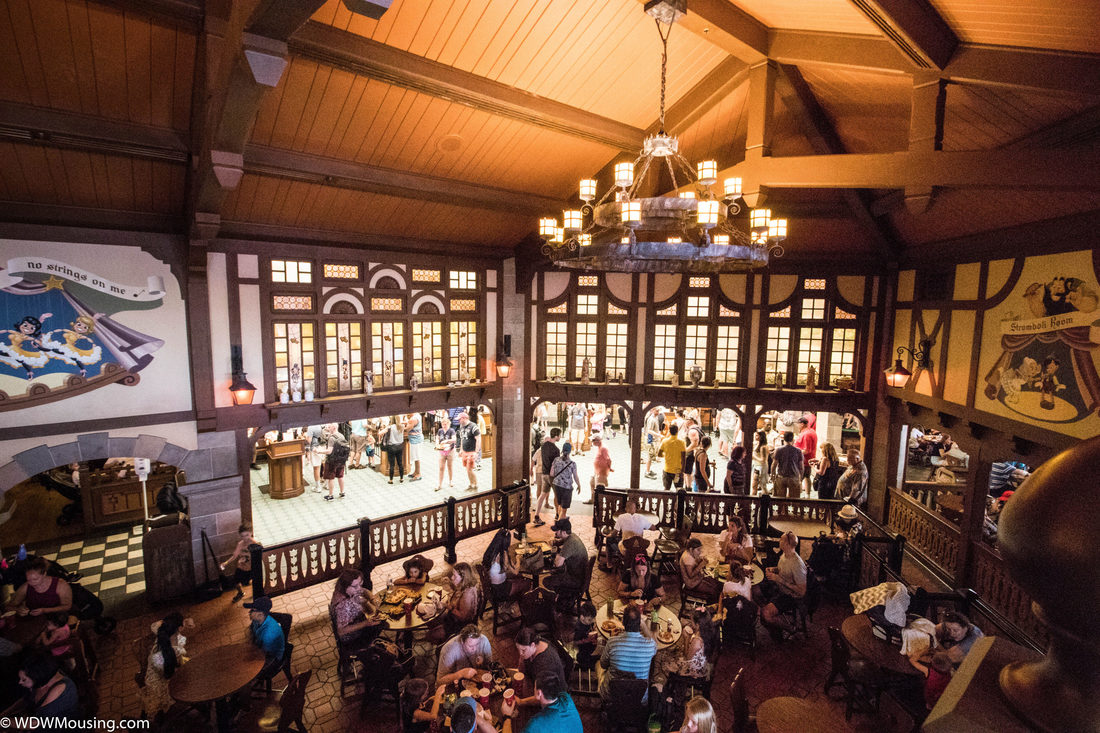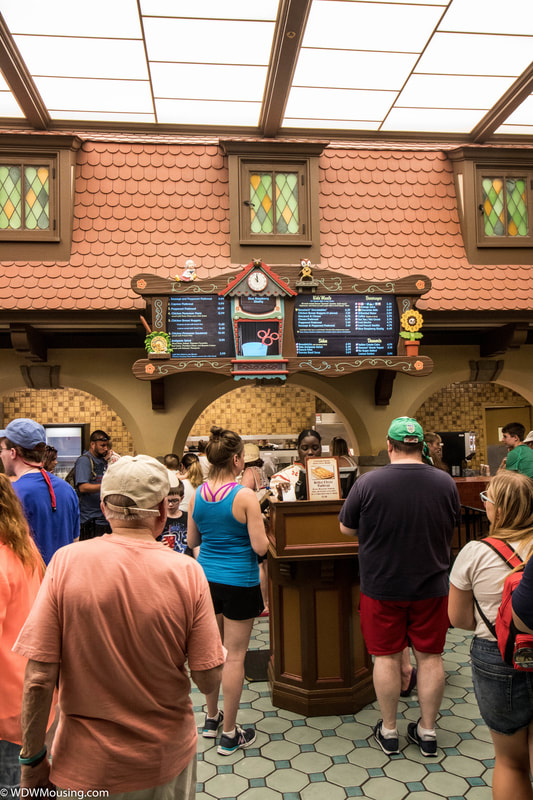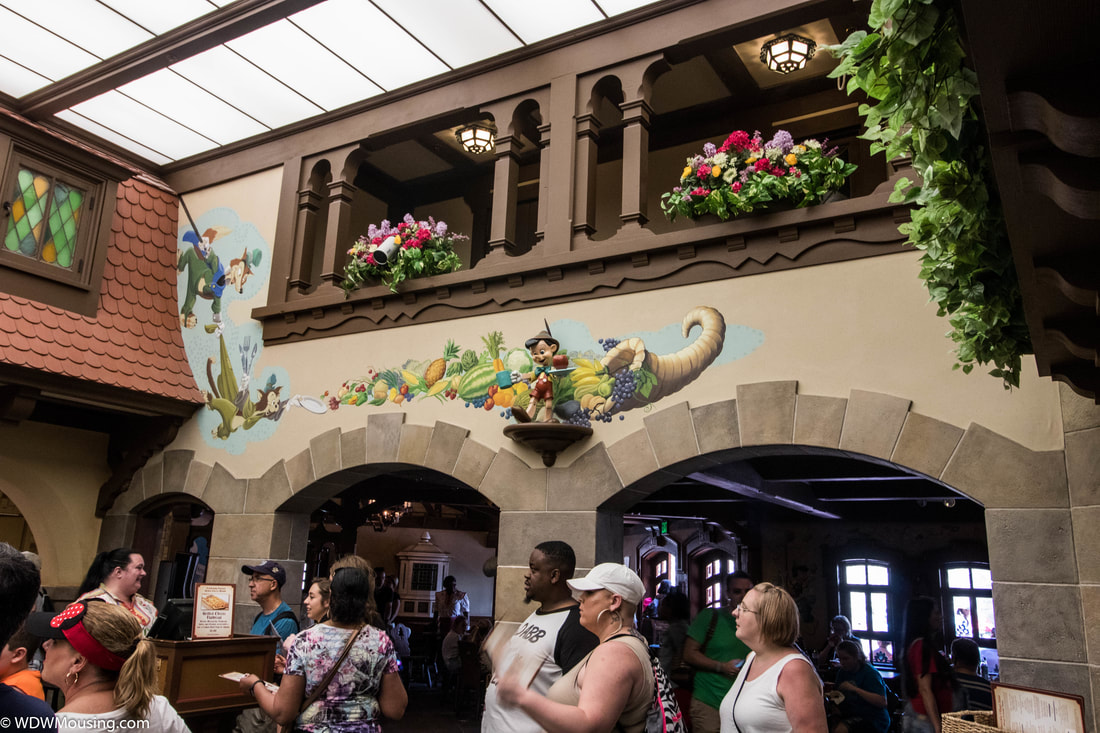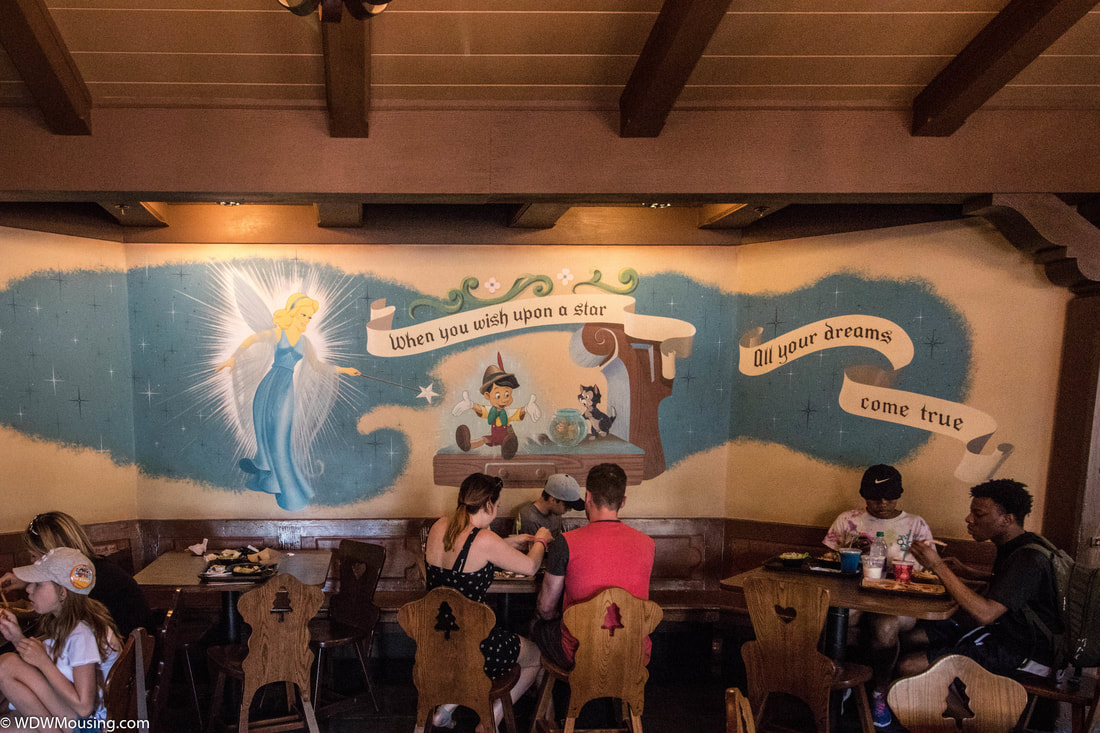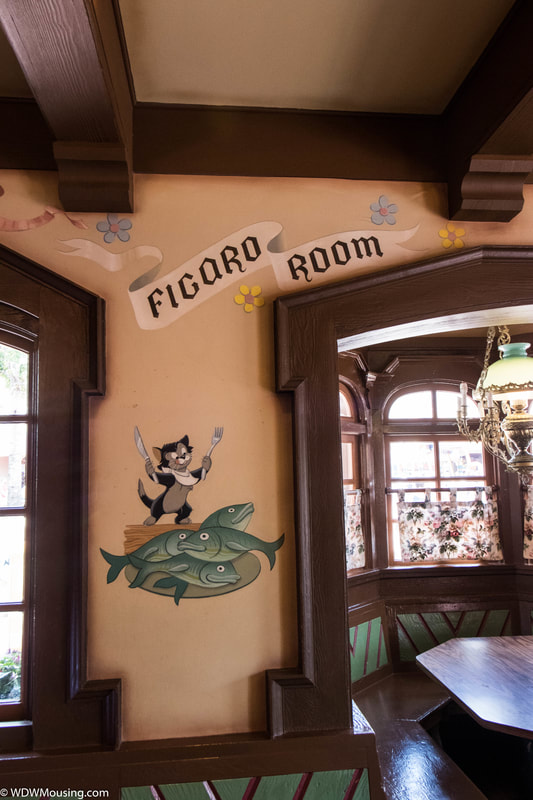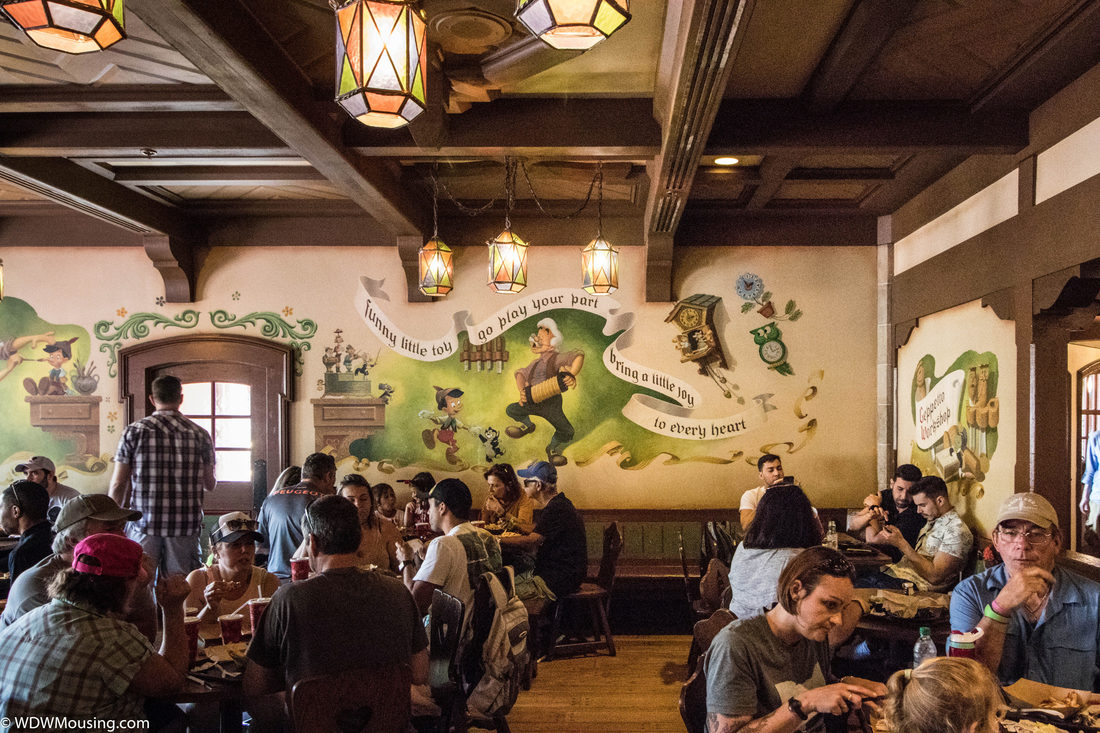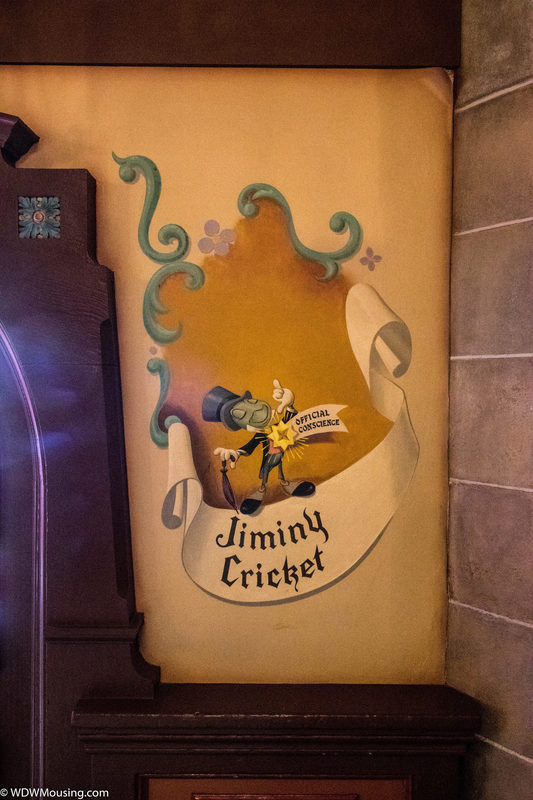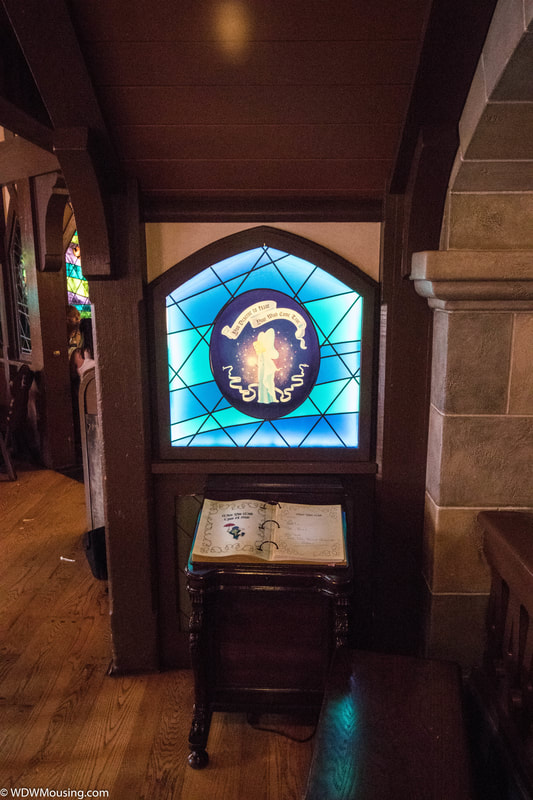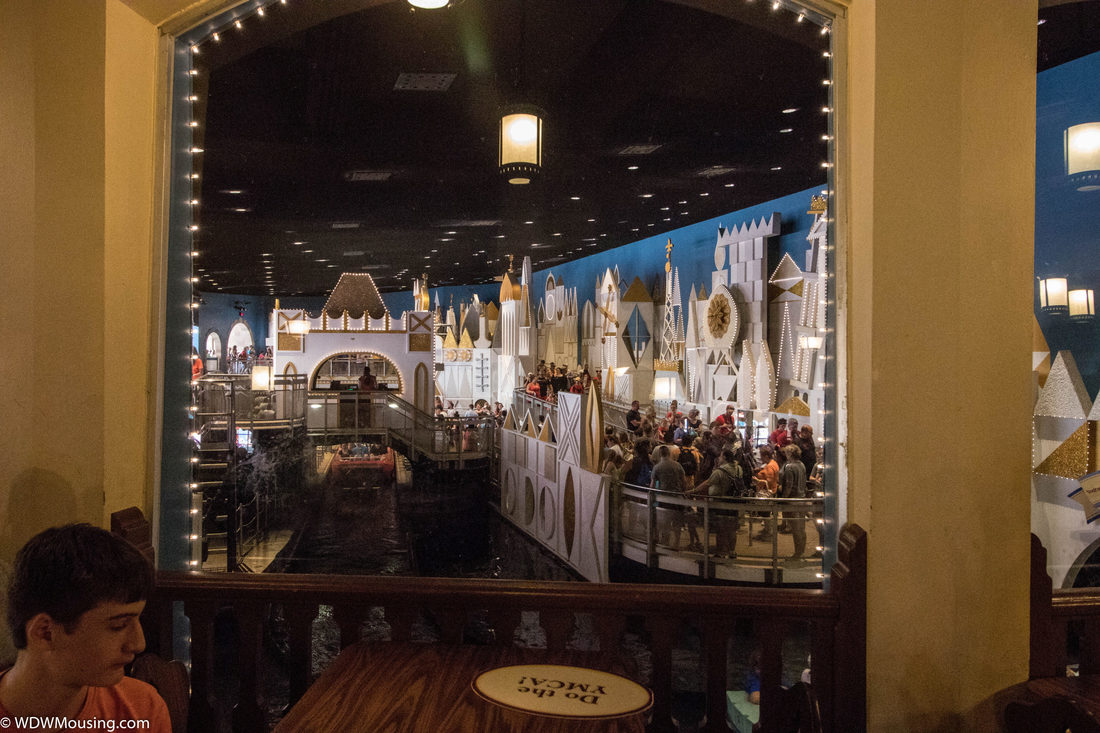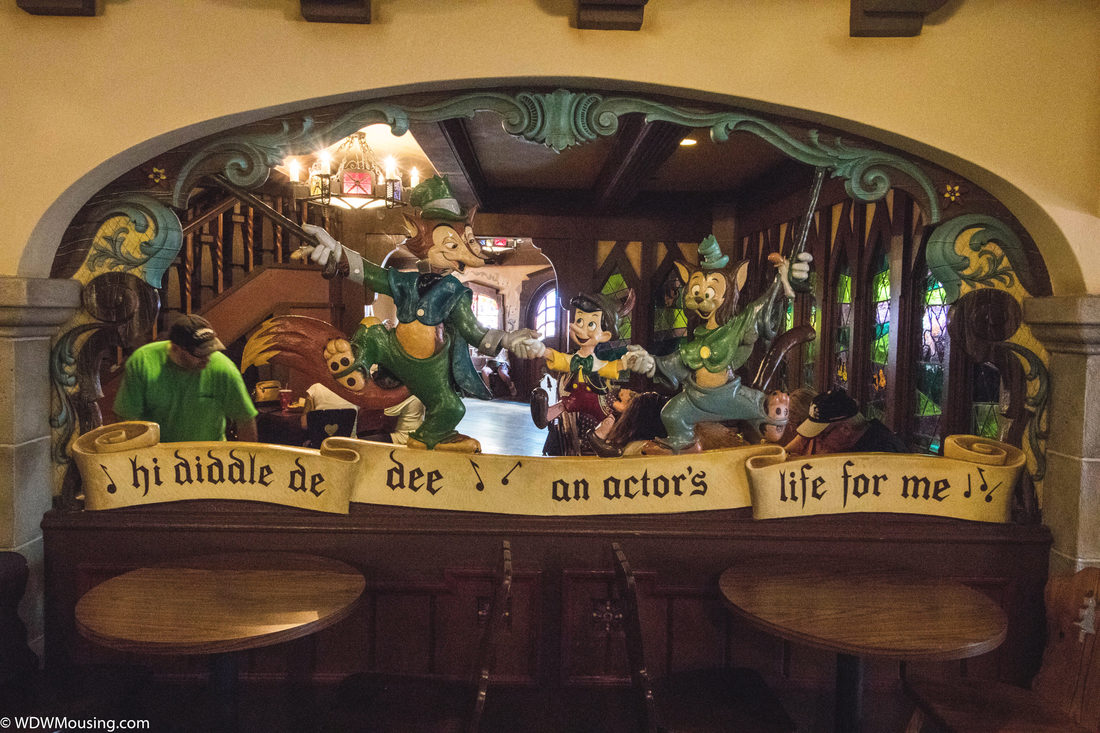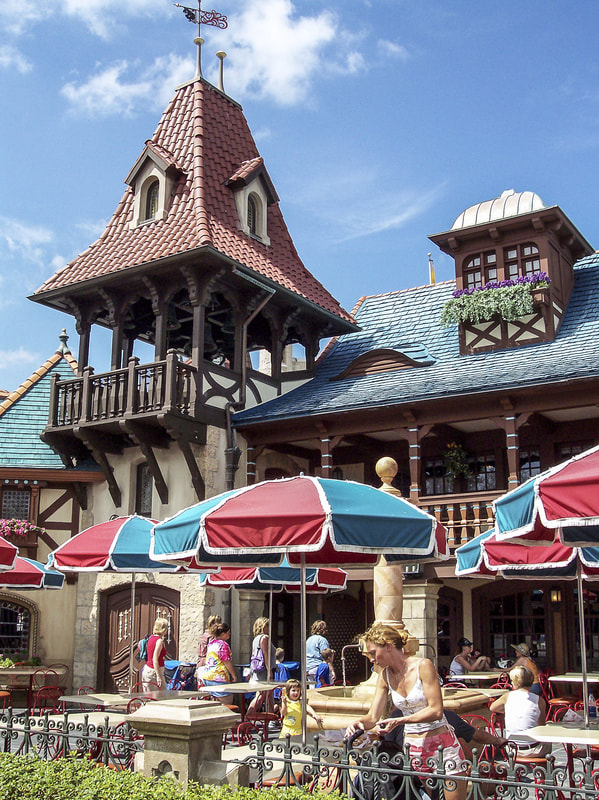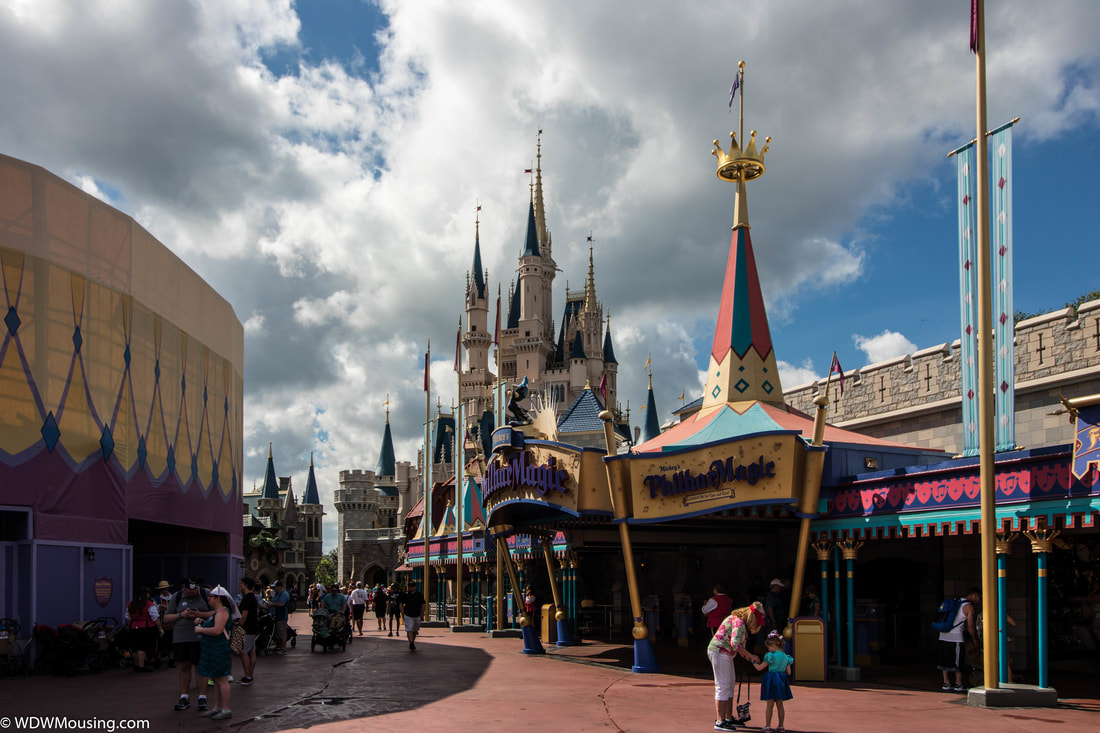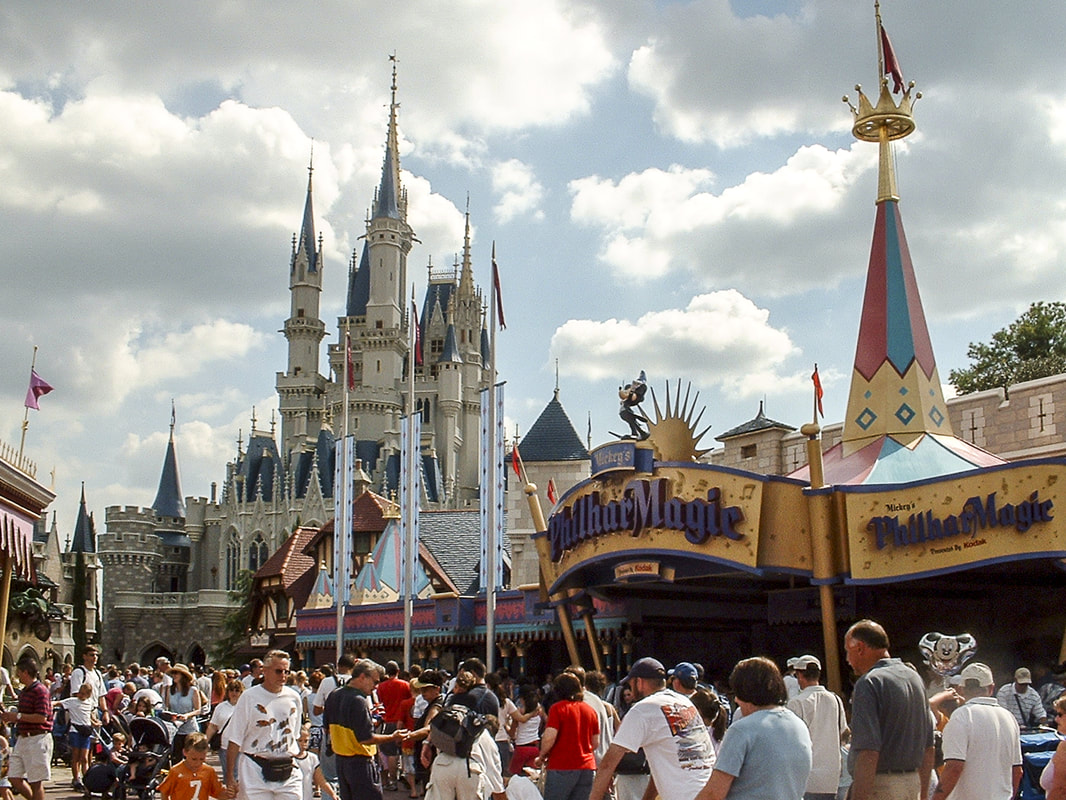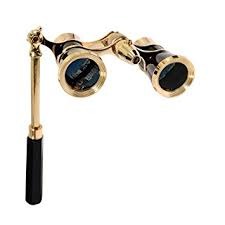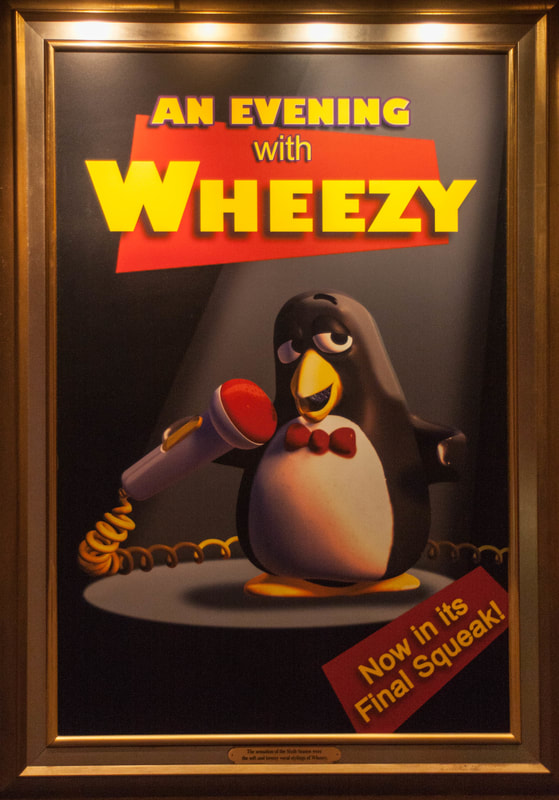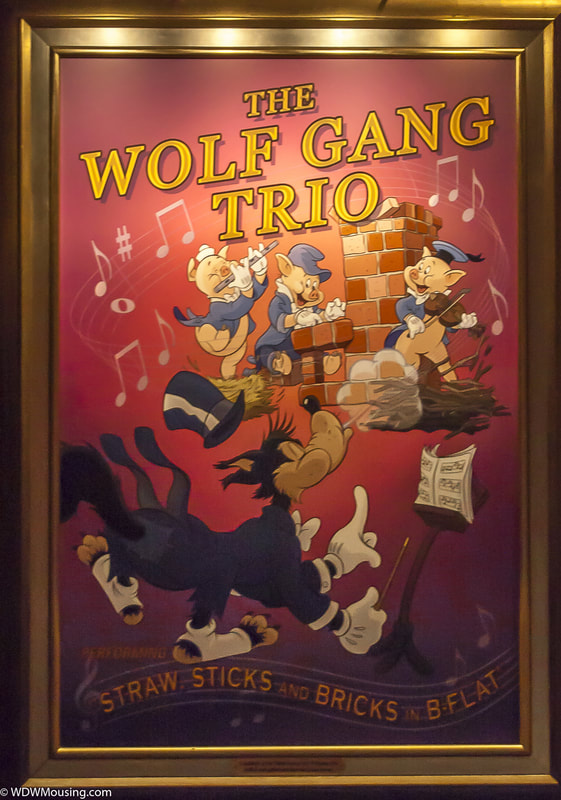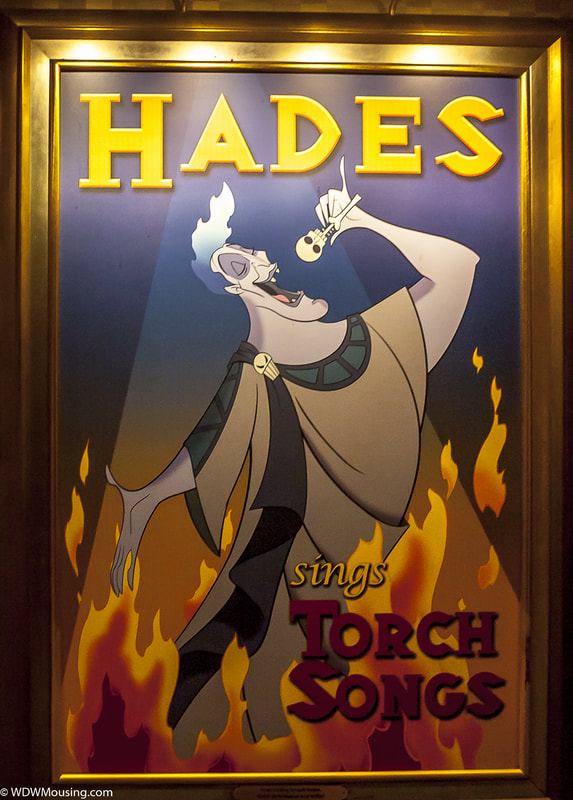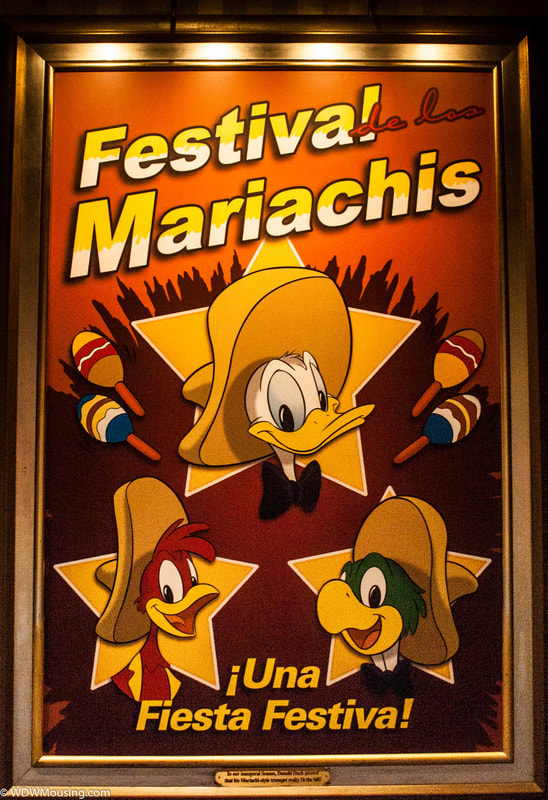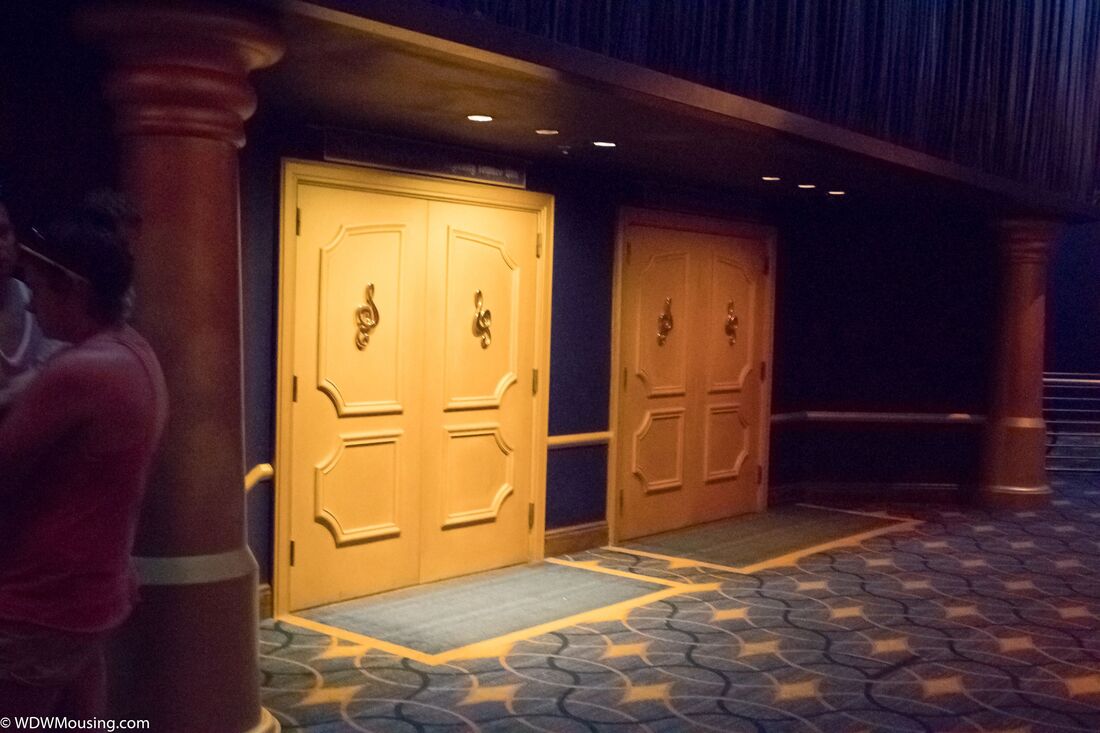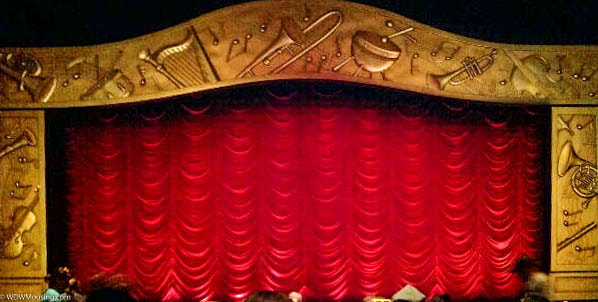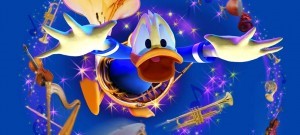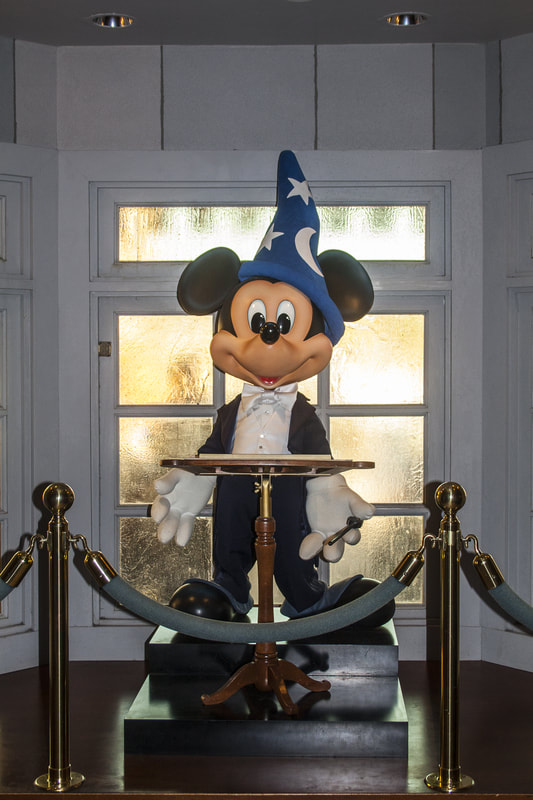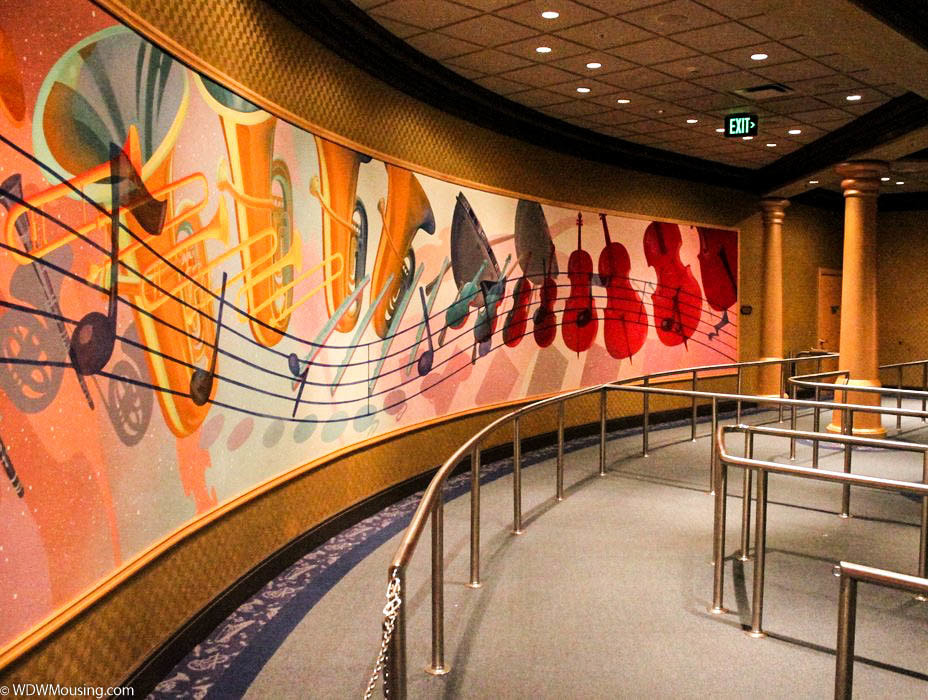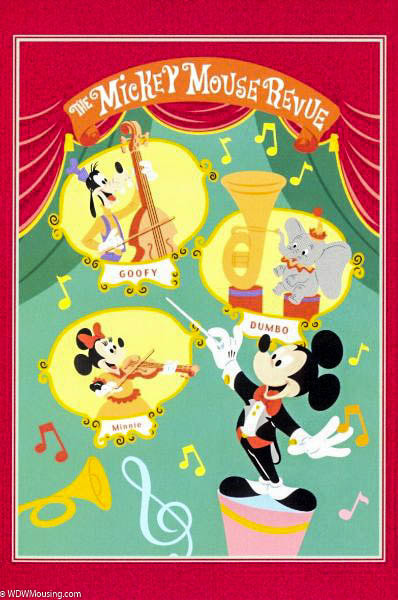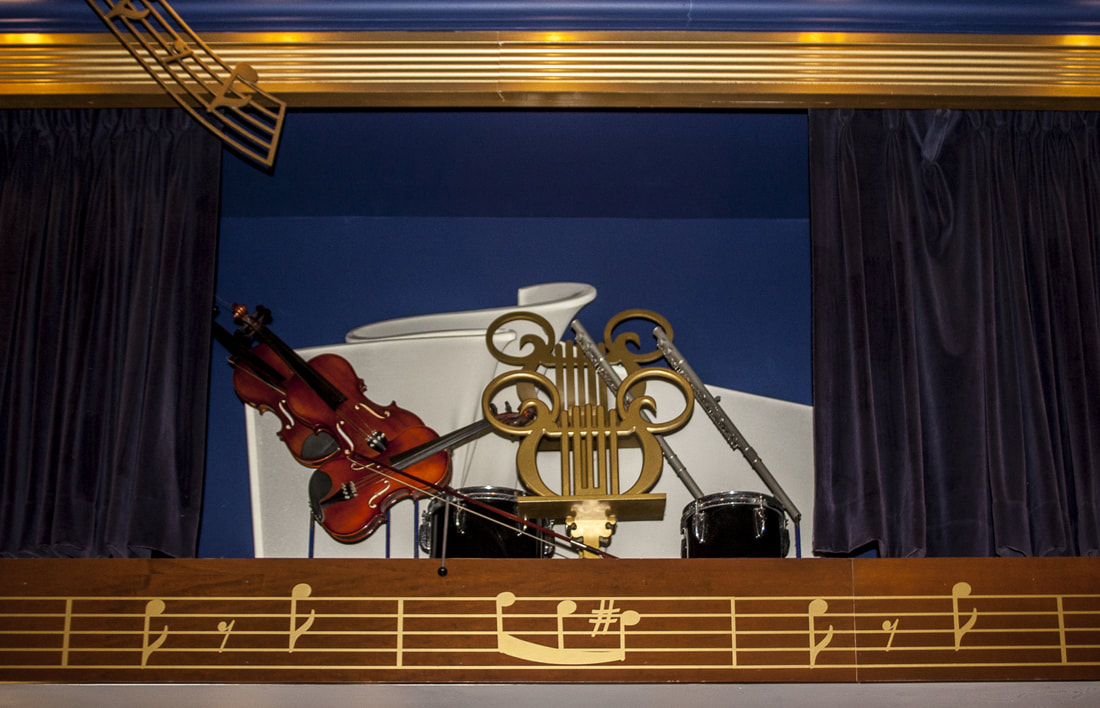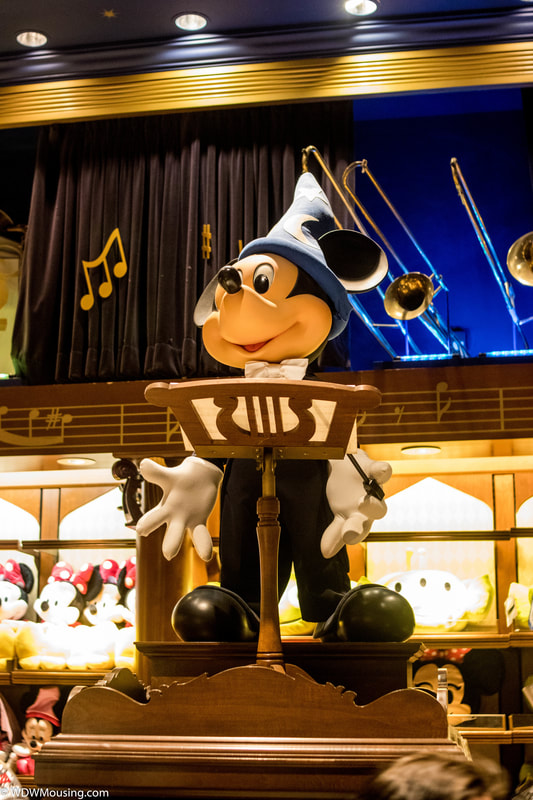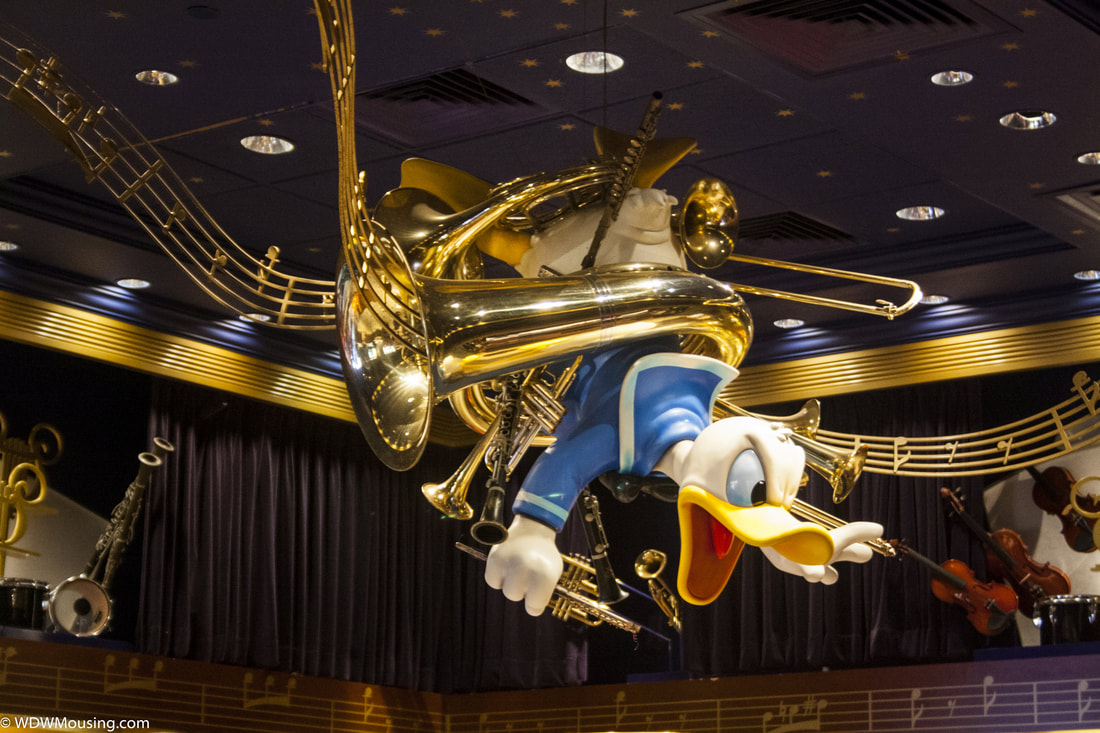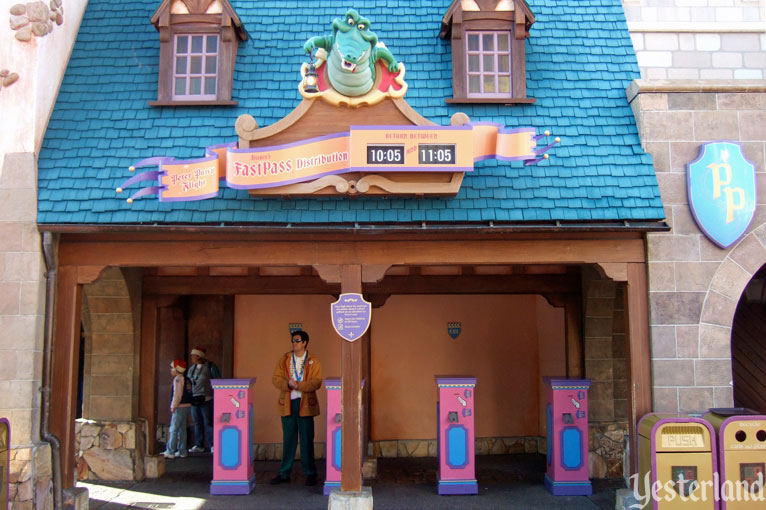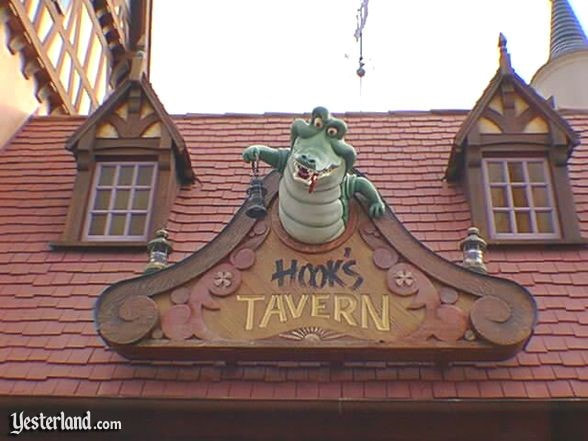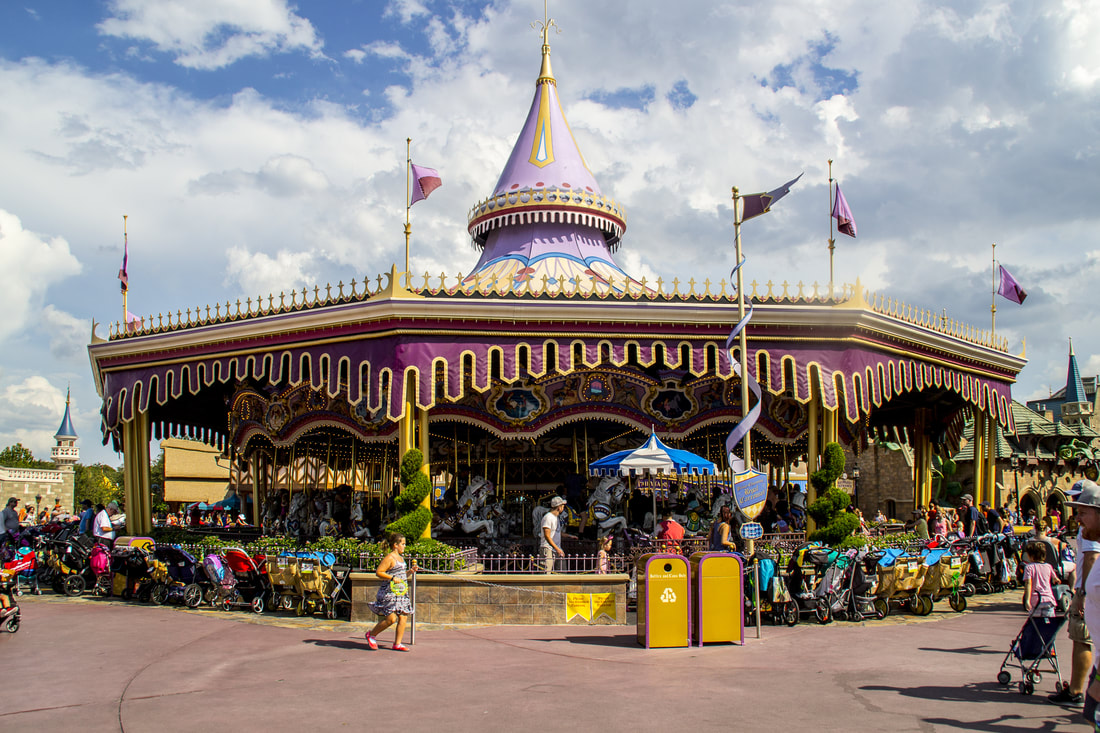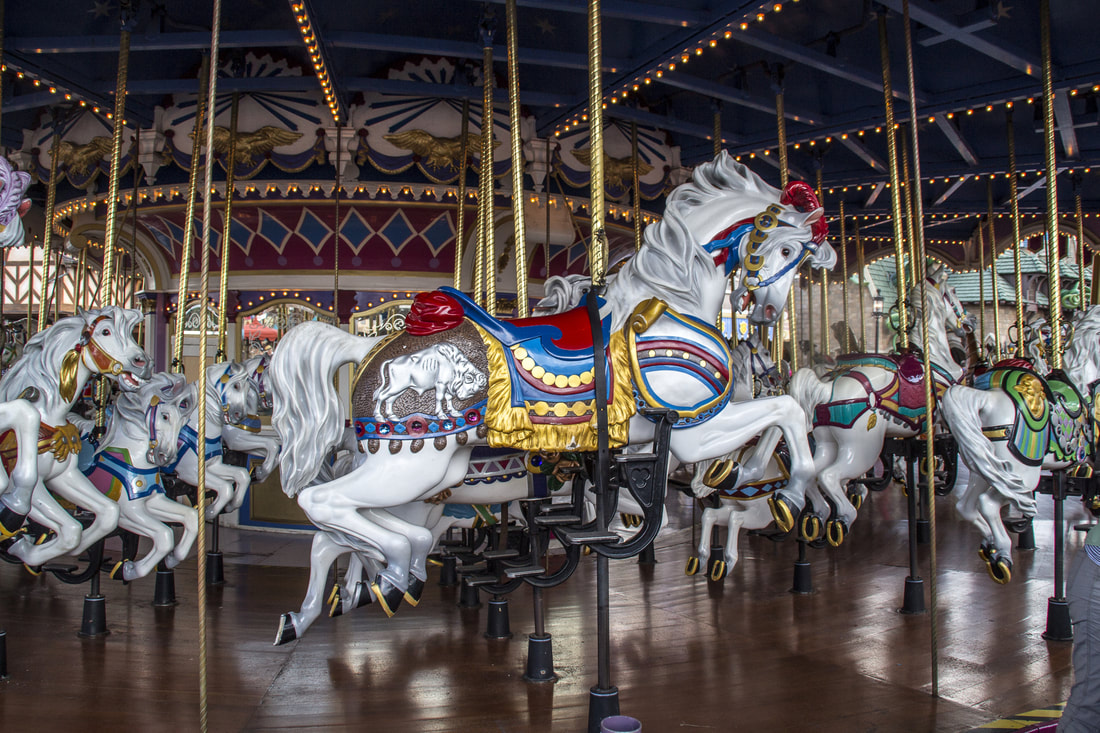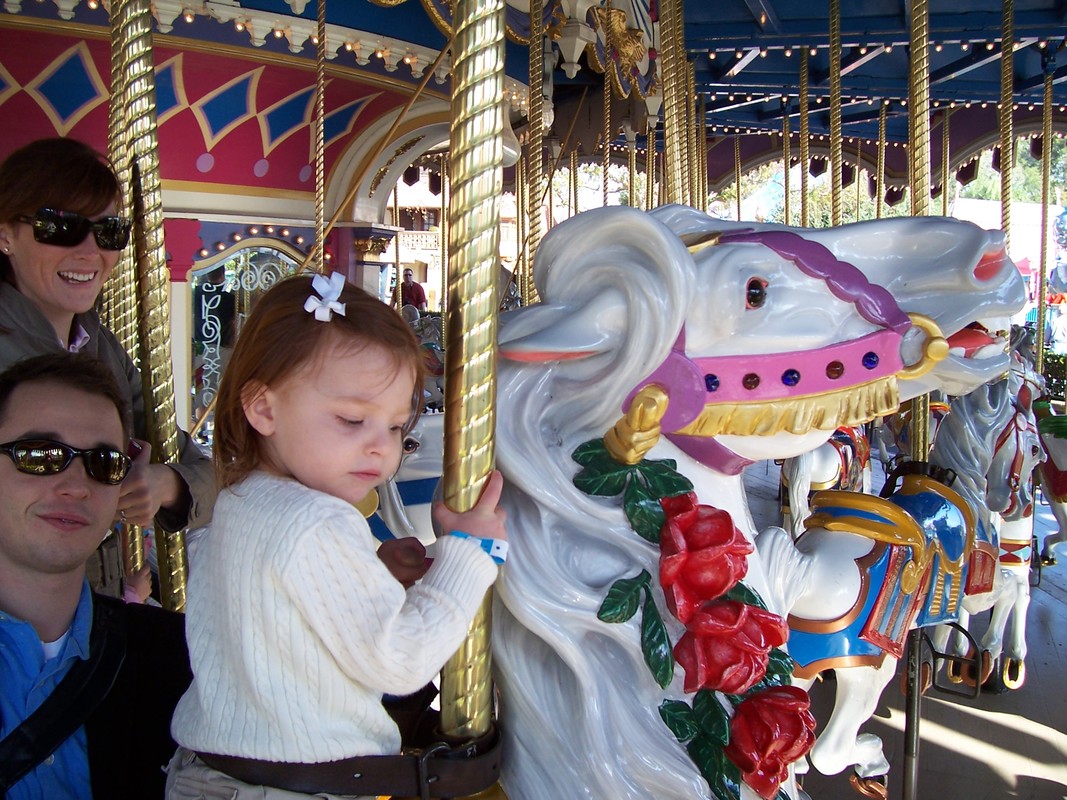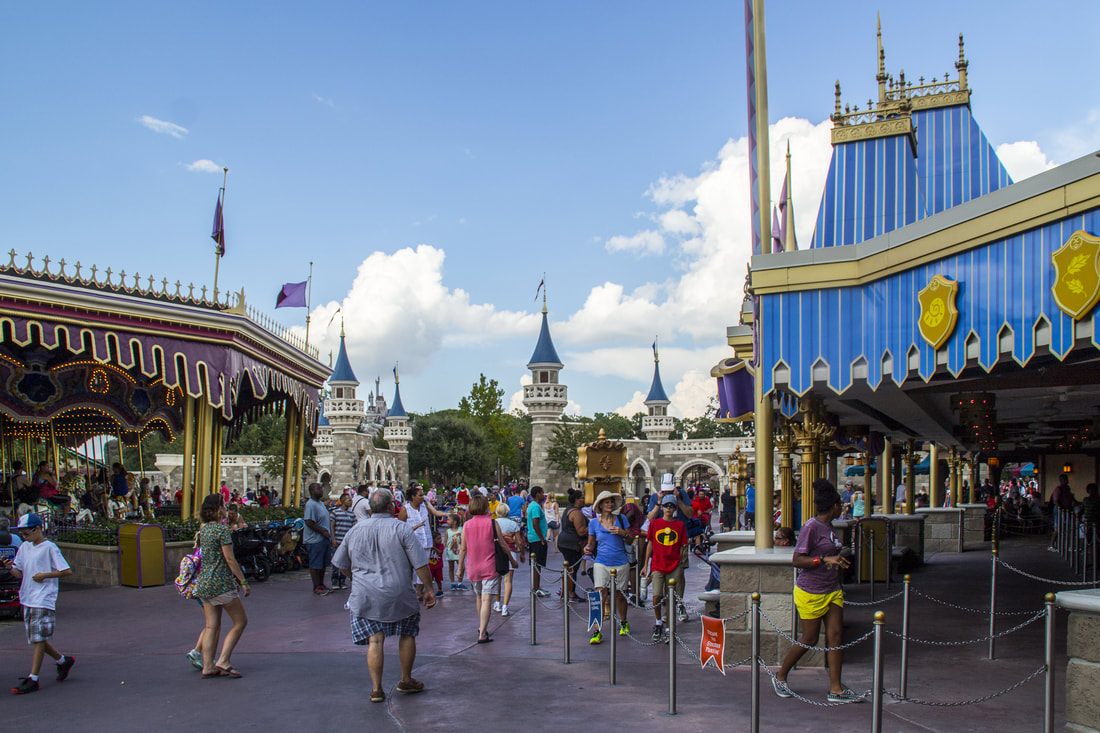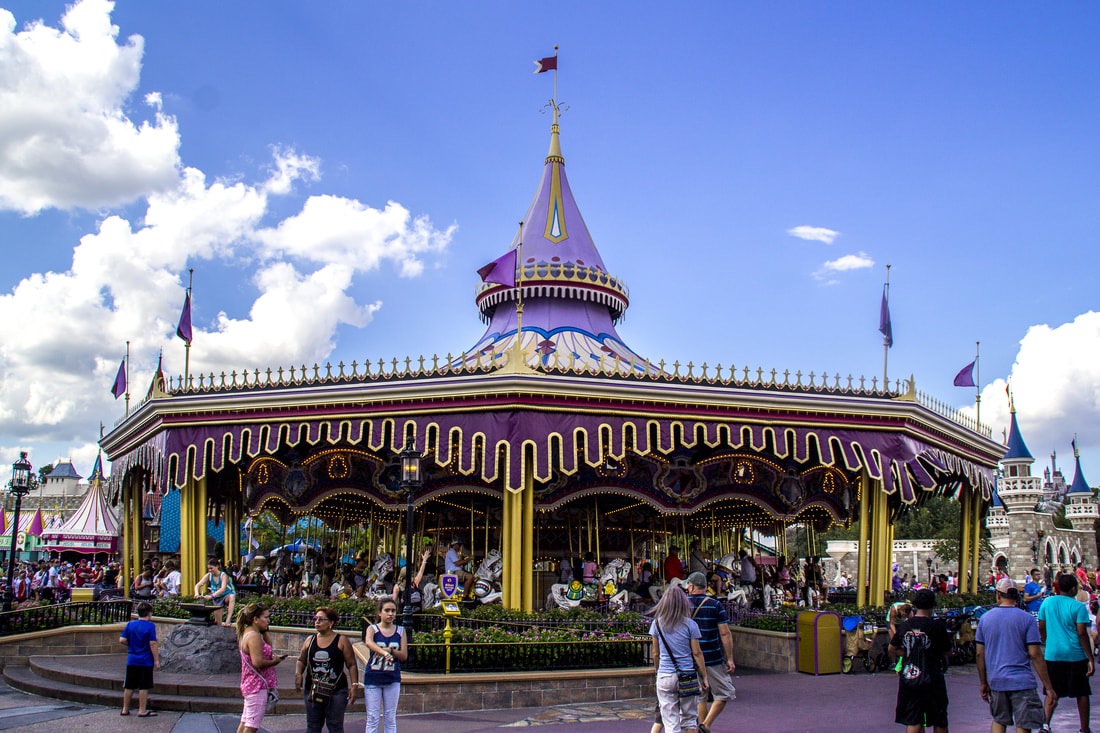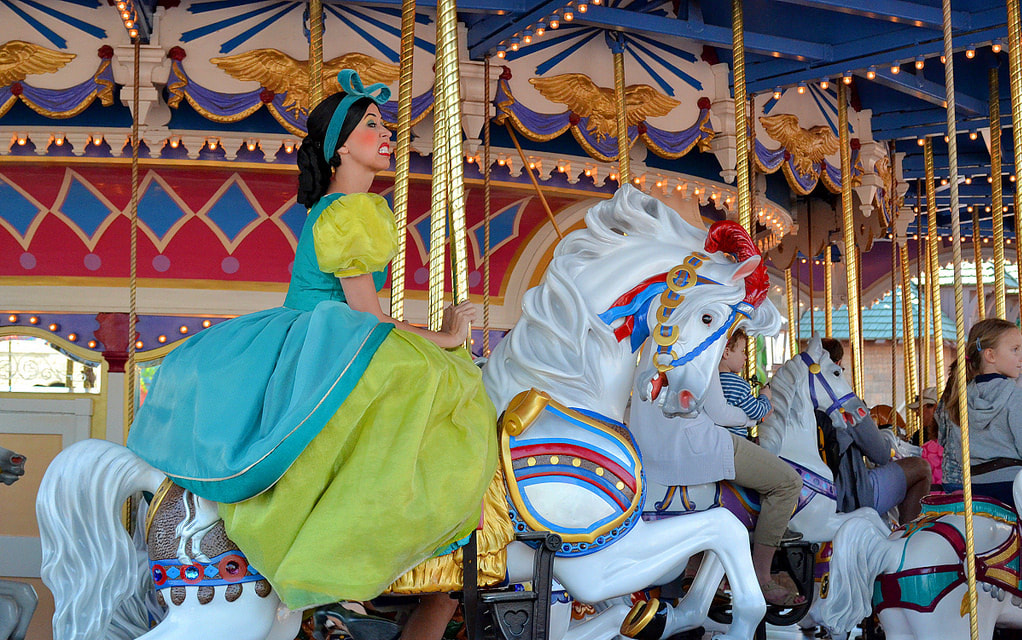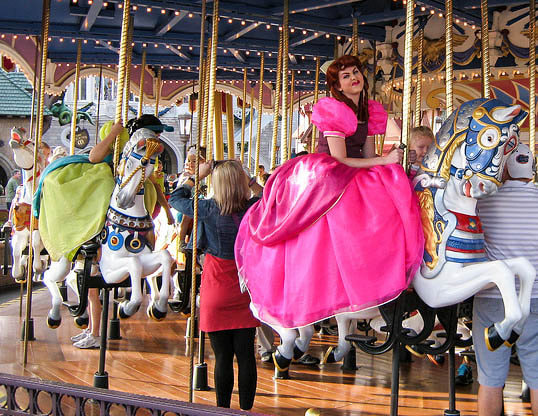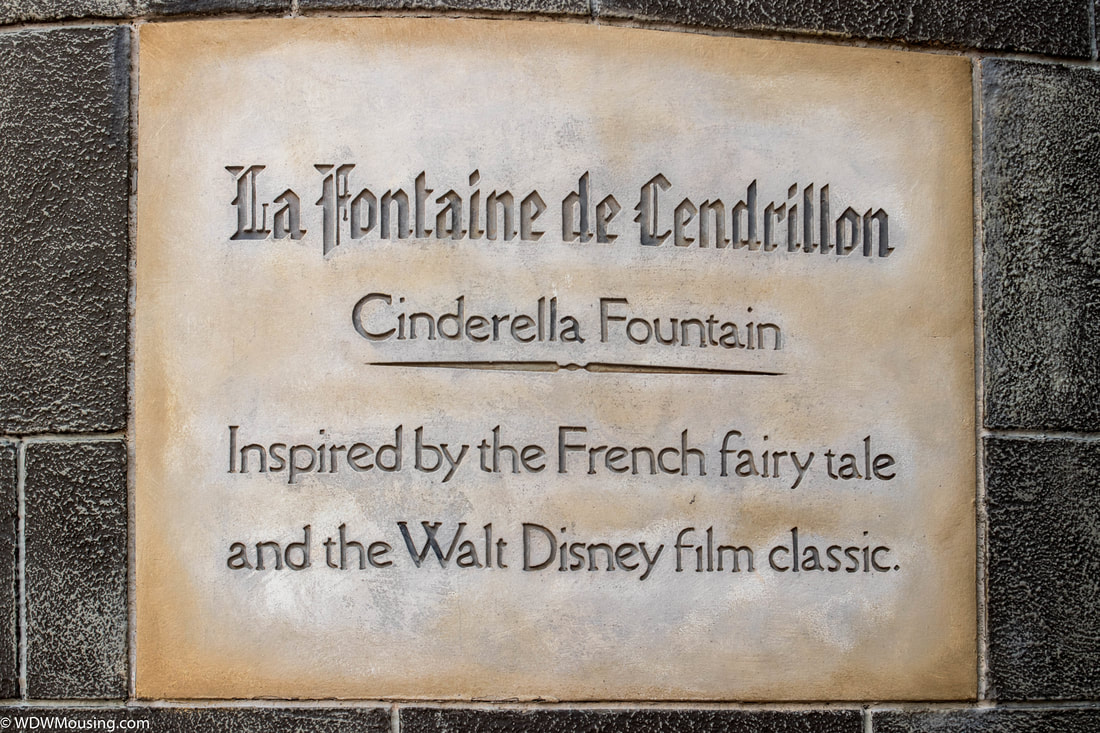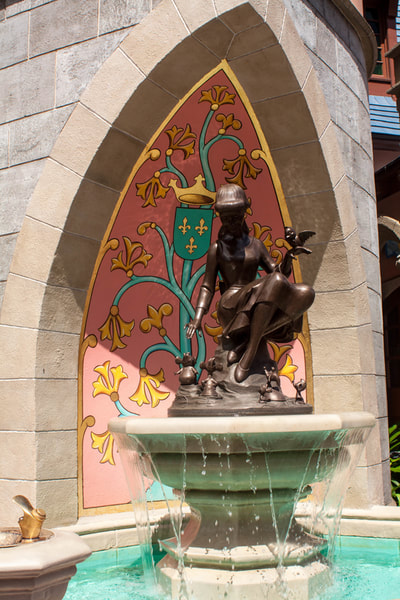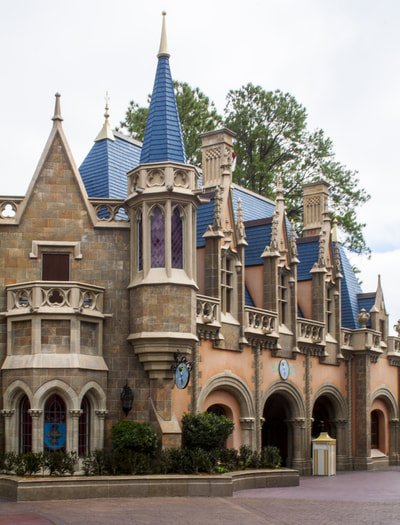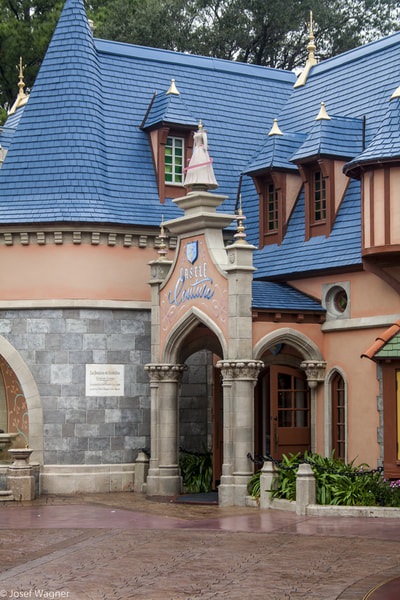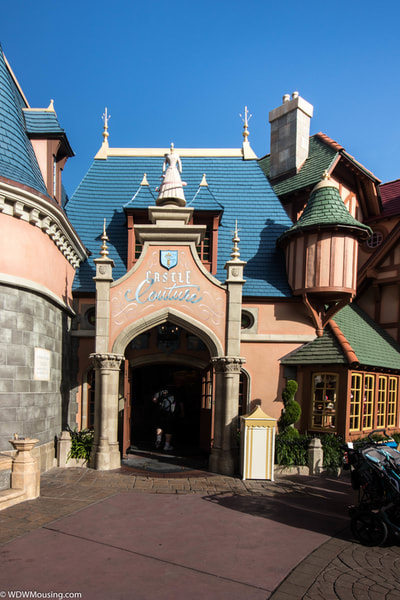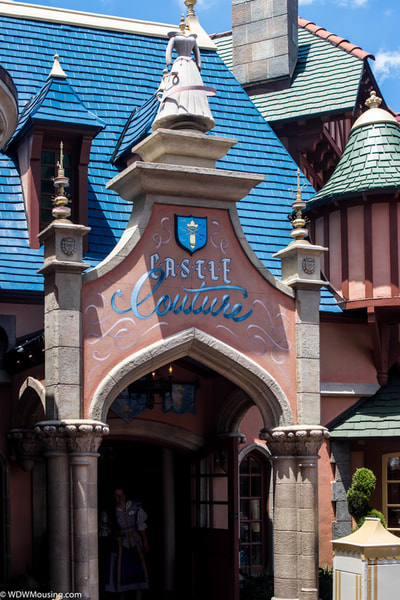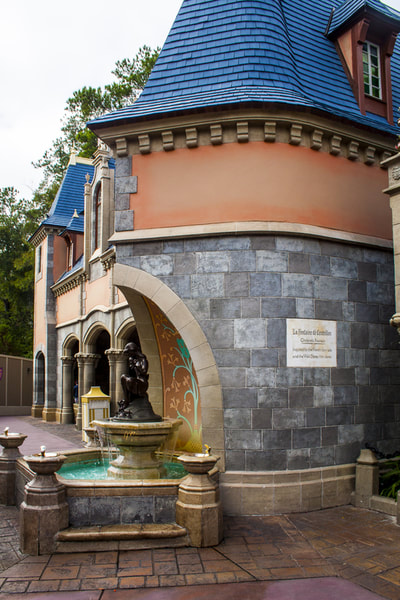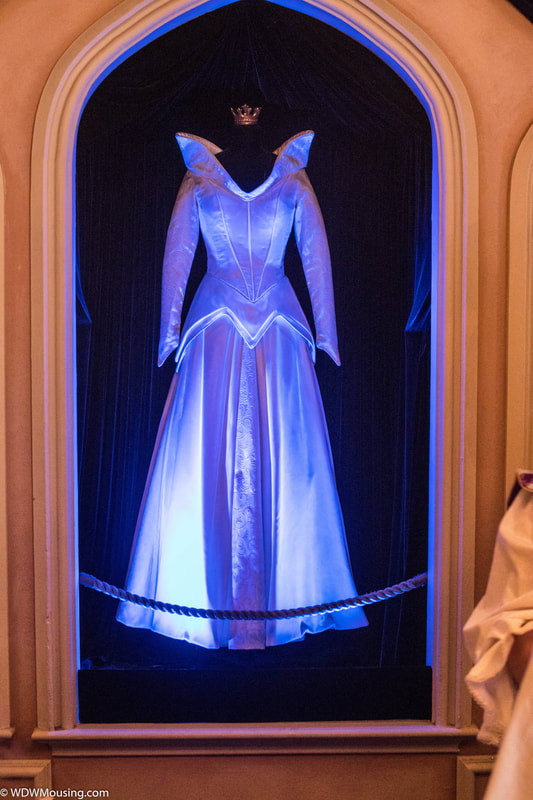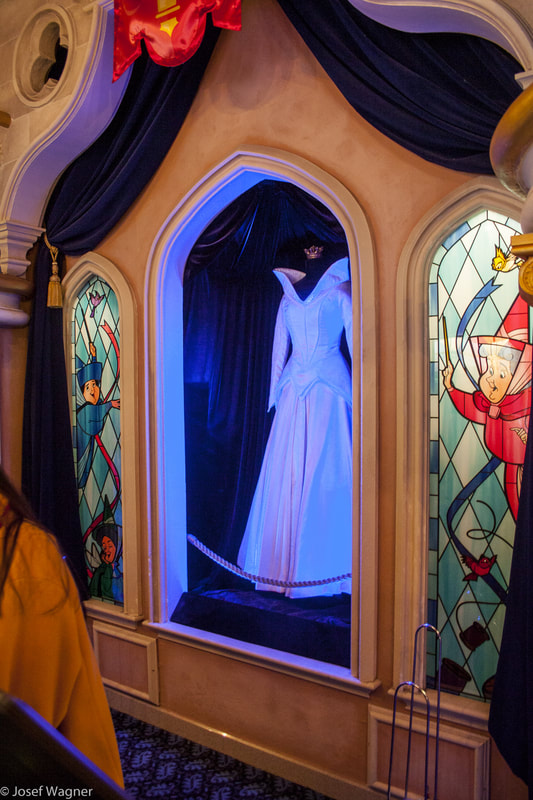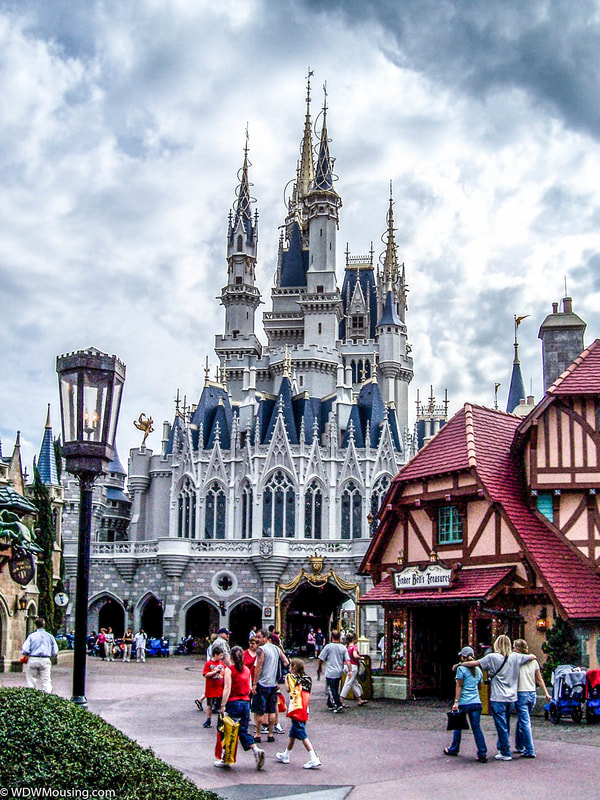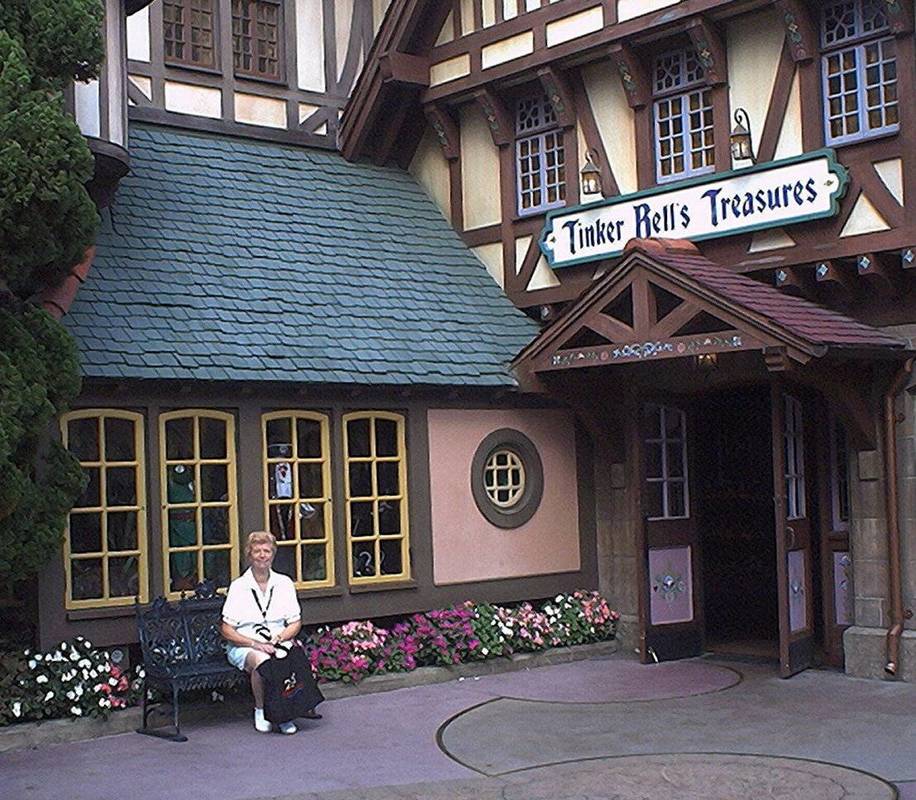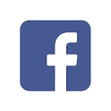Chapter 20 - Magic Kingdom - Fantasyland Part 1 updated 8/8/18
Chapter 19 finalized our travels through Liberty Square, we ended our tour at the Columbia House Restaurant. We’re now ready to embark onto Fantasyland. In this Chapter our pictorial tour will take us through the Classic Fantasyland where we’ll visit:
- Rapunzel’s Tower
- Peter Pan
- "it’s a small world"
- Pinocchio’s Village Haus
- Mickey’s Philharmagic
- Fantasy Faire
- Prince Charming's Regal Carrousel
- Castle Couture
- Tinker Bell's Treasures
As we leave the Columbia House in Liberty Square and go to the right under the overpass the theming suddenly changes to a quaint Bavarian Village appearance. We have enter Fantasyland.
|
Here is a land of imagination, hopes and dreams. In this timeless land of enchantment the age of chivalry, magic and make-believe are reborn and fairy tales come true. Fantasyland is dedicated to the young and the young at heart, to those who believe that when you wish upon a star your dreams do come true. — Walter E. Disney, July 17, 1955 Disneyland Opening Day Dedication Fantasyland sits in the shadow of Cinderella’s Castle. From almost all points in Fantasyland the Castle is visible. Fantasyland allows guests to escape reality and leave real life behind by entering a land of make-believe, fairy tales and magic. This is where the imagination can run free, by flying above London with Peter Pan, attend an Unbirthday party, swim under the sea with a mermaid, meet Princes and Princesses, travel through the Hundred Acre Woods, and soar over Fantasyland on an elephant. There are many surprising experiences in Fantasyland, a land filled with many hidden secrets and details scattered throughout. |
In Fantasyland you can relive your childhood memories or experience them through the classic attractions like Peter Pan’s Flight, Dumbo the Flying Elephant, the Mad Tea Party, “it’s a small world”, and Prince Charming Regal Carrousel.
History of Fantasyland The original plans for Walt Disney World’s Fantasyland was to replace the Disneyland dark rides (Snow White’s Adventures, Peter Pan’s Flight, and Mr. Toad’s Wild Ride) with new attractions based on different Disney movies. The Imagineers proposed three new attractions based on Sleeping Beauty, the Legend of Sleepy Hollow, Mary Poppins themes. But due to the additional cost involved it was eventually decided by Roy O. Disney to recreate the Disneyland dark rides in the Magic Kingdom. Fantasyland opened along with the rest of the Magic Kingdom on October 1, 1971. Fantasyland took its inspiration from the Disney movies themselves. The opening day attractions in Fantasyland were: Dumbo the Flying Elephant, the Mad Tea Party, Snow White’s Adventures, Mr. Toad’s Wild Ride, Cinderella’s Golden Carrousel, the Mickey Mouse Revue, "it's a small world" and the Skyway to Tomorrowland. Shortly followed, Peter Pan's Flight and the 20,000 Leagues under the Sea: Submarine Voyage. This gave Fantasyland an amazing ten attractions by late 1971. The Magic Kingdom’s Fantasyland theming took on a European village appearance where many of the Disney Fairy Tale stories were originally written. |
Fantasyland Timeline
The Disney Blog put together an excellent interactive Timeline of Fantasyland which begins in 1965, when Walt Disney announced to the world that a Disney theme park would be built here in Central Florida. It then continues through construction, the opening day of Magic Kingdom Park, and the many changes the land has undergone over the park’s 40+-years history.
Link to the Timeline:
Link to the Timeline:
The Music of Fantasyland
The music of Fantasyland is derives mainly from the various Disney fantasy movies. There isn’t one continuous music loop for the entire land, but each area has its own.
Music in the Bavarian Village Area (Peter Pan, it’s a small world, Pinocchio’s Village Haus)
The music found here has a very Bavarian feel. Although the original story of Pinocchio was written in an Italian setting, the setting Walt Disney used in the movie was Bavarian. Because of this, this area of Fantasyland has lots of timber-framed cottages that would be common in a German village.
The music starts in the Peter Pan’s Flight and it’s a small world corridor then continues through Pinocchio’s Village Haus and to were Snow White’s Scary Adventures used to be.
The tale of Snow White is a German tale, so the Imagineers chose to put Bavarian folk-style music in this area.
Music in the Bavarian Village Area (Peter Pan, it’s a small world, Pinocchio’s Village Haus)
The music found here has a very Bavarian feel. Although the original story of Pinocchio was written in an Italian setting, the setting Walt Disney used in the movie was Bavarian. Because of this, this area of Fantasyland has lots of timber-framed cottages that would be common in a German village.
The music starts in the Peter Pan’s Flight and it’s a small world corridor then continues through Pinocchio’s Village Haus and to were Snow White’s Scary Adventures used to be.
The tale of Snow White is a German tale, so the Imagineers chose to put Bavarian folk-style music in this area.
Reference Sources:
- https://en.wikipedia.org/wiki/Fantasyland
- https://www.disneytips.com/7-hidden-secrets-in-fantasyland-in-walt-disney-world/?utm_source=Mickey+Tips&utm_campaign=7c6b3c6a45-MT+Email&utm_medium=email&utm_term=0_9bf0730414-7c6b3c6a45-307144285
- https://www.disneytips.com/10-things-youll-love-fantasyland-walt-disney-worlds-magic-kingdom/?utm_source=Mickey+Tips&utm_campaign=a9ef0f6ef7-MT+Email&utm_medium=email&utm_term=0_9bf0730414-a9ef0f6ef7-307144285
- http://www.mickeytips.com/10-disney-quotes-start-day-right/?utm_source=Mickey+Tips&utm_campaign=5638565bfb-MT+Email&utm_medium=email&utm_term=0_9bf0730414-5638565bfb-307144285
- https://blog.touringplans.com/2014/10/26/magic-kingdom-atmousephere-music-fantasyland/
“Here we go!”
A phrase that brings the feeling as though we are in the middle of Fantasyland and about to experience a magical flight.
So let’s get our tour of Fantasyland started.
So let’s get our tour of Fantasyland started.
Tangled Tower
As guests enter Fantasyland from Liberty Square, to their left they’ll notice a little rest area and a tower rising above it.
It’s Rapunzel’s tower from the movie “Tangled” which towers above the area that formerly served as stroller parking across from the Peter Pan’s Flight and ‘it’s a small world’. The theming in the rest area is quite detailed, with Rapunzel’s tower and the lanterns from the film.
It’s Rapunzel’s tower from the movie “Tangled” which towers above the area that formerly served as stroller parking across from the Peter Pan’s Flight and ‘it’s a small world’. The theming in the rest area is quite detailed, with Rapunzel’s tower and the lanterns from the film.
Some Disney Fans may remember that this area used to be where the Fantasyland Skyway ride had been.
he concept wasn’t new. In 2011 the tower was at Epcot, as part of "The Flower & Garden Festival". It was added to the Magic Kingdom as part of the Fantasyland expansion in 2013.
The new rest area is themed with posters of several characters from the “Tangled” movie.
|
Some of the theming include horse shoes prints near Rapunzel’s tower If you look down, you may notice horse shoe prints in the pavement near Rapunzel’s tower. If you look closely, you can make out “Maximus” engraved on some of the horse shoes. |
Those who have seen Disney’s Tangled movie know that Maximus the horse had a fetish for red, juicy apples. Evidence of this can be found near the Tangled themed bathrooms. A sack of spilled apples just around the corner from the restrooms! Pascal, a chameleon, is a true and loyal friend to Rapunzel in Disney’s “Tangled’ movie. Hidden Pascal’s and friends can be found hiding throughout the Magic Kingdom Fantasyland’s Tangled-themed pavilion. |
Rapunzel Lantern Picture
Every evening around 5 pm head over to Rapunzel’s Tower for a photo opportunity to hold one of the beautiful lanterns. These are replicas of the lanterns used in the film “Tangled,”
More on the Tangled Area:
- http://blog.touringplans.com/2014/07/05/hidden-details-magic-kingdom/
- http://www.couponingtodisney.com/5-things-people-dont-notice-in-the-magic-kingdom/
- http://disney.wikia.com/wiki/Rapunzel%27s_Tower
- https://disneyparks.disney.go.com/blog/2013/03/disney-parks-after-dark-rapunzels-new-view-at-magic-kingdom-park/
- https://disneyways.com/2012/12/13/solving-the-mystery-surrounding-the-rapunzel-tower-in-new-fantasyland/
- https://www.fillmypassport.com/100-disney-world-secrets-hidden-mickeys/
Peter Pan’s Flight
As guests enter Fantasyland one of the first attraction they will encounter is Peter Pan’s Flight.
Peter Pan’s Flight is one of the classic attractions in operation on Walt Disney World’s Opening Day on October 1, 1971. Even with some upgrades and refurbishments, it remains mostly the same as when it had opened and is still very popular.
The ride is based on the story and Disney movie of Peter Pan. It’s a trip to Neverland where we never have to grow up. This is what Imagineers wanted Fantasyland to be, a whole Land, to create as close to a Neverland experience as we could ever hope to get. In Peter Pan the imagineers really did an amazing job of bringing this concept to life. That’s way it’s still one of the most popular attractions in the Magic Kingdom.
Peter Pan’s Flight is so popular with Guests that it is currently operating at 5 different Disney Parks around the world —Disneyland California, Walt Disney World, Tokyo Disneyland, Disneyland Paris and Shanghai Disneyland.
This ride is very simple, there are no fancy high tech animatronics and many of the effects on the ride come from the glow in the dark paint along the walls. As guest aboard ships they are taken off to a magical world flying over many different scenes from the Peter Pan story and movie.
Note: When the ride first opened in Disneyland, Peter Pan wasn’t included in the attraction. The theme for the attraction was that guests were supposed to be experiencing the attraction through Peter Pan’s eyes. He was added to the attraction because guests didn’t fully accept this concept, questioning where he was and why he wasn’t in the attraction. Now we get to see Peter throughout the attraction.
The ride is based on the story and Disney movie of Peter Pan. It’s a trip to Neverland where we never have to grow up. This is what Imagineers wanted Fantasyland to be, a whole Land, to create as close to a Neverland experience as we could ever hope to get. In Peter Pan the imagineers really did an amazing job of bringing this concept to life. That’s way it’s still one of the most popular attractions in the Magic Kingdom.
Peter Pan’s Flight is so popular with Guests that it is currently operating at 5 different Disney Parks around the world —Disneyland California, Walt Disney World, Tokyo Disneyland, Disneyland Paris and Shanghai Disneyland.
This ride is very simple, there are no fancy high tech animatronics and many of the effects on the ride come from the glow in the dark paint along the walls. As guest aboard ships they are taken off to a magical world flying over many different scenes from the Peter Pan story and movie.
Note: When the ride first opened in Disneyland, Peter Pan wasn’t included in the attraction. The theme for the attraction was that guests were supposed to be experiencing the attraction through Peter Pan’s eyes. He was added to the attraction because guests didn’t fully accept this concept, questioning where he was and why he wasn’t in the attraction. Now we get to see Peter throughout the attraction.
Backstory of Peter Pan
Peter Pan is a fictional character created by Scottish novelist J. M. Barrie. It’s about a free-spirited and mischievous young boy who can fly and never grows up, Peter Pan spends his never-ending childhood having adventures on the mythical island of Neverland as the leader of the Lost Boys, interacting with fairies, pirates, mermaids, Native Americans, and occasionally ordinary children from the world outside Neverland.
Peter Pan is a fictional character created by Scottish novelist J. M. Barrie. It’s about a free-spirited and mischievous young boy who can fly and never grows up, Peter Pan spends his never-ending childhood having adventures on the mythical island of Neverland as the leader of the Lost Boys, interacting with fairies, pirates, mermaids, Native Americans, and occasionally ordinary children from the world outside Neverland.
The Queue
In 2014, when the New Fantasyland expansion was occurring at Magic Kingdom, upgrades were also being made to the Peter Pan attraction.
The queue to Peter Pan’s Flight was also had an impressive enhancement. Because the wait for getting on this attraction was usually long, Disney wanted to give guests a little bit better wait experience while they are in line. Now Guests enter an interactive queue which take them through a corridor of bright and interactive murals. Then Guests enter the Darlings’ home, where they see photos of the family hanging on the walls, Big Ben against the night sky through the windows, Nana’s doghouse outside and even the children’s nursery. The Imagineers have put in an amazing amount of detail, such as, Wendy’s beautiful canopied bed, a calendar on the wall from 1904 with December 27th circled, blocks on the bed that spell “Peter Pan” and blocks on the floor just like in the first scene from the 1953 Disney Peter Pan movie.
There are also interactive elements with shadows and reactions to the shadows. As well as other little games to play with and be marveled with.
The queue to Peter Pan’s Flight was also had an impressive enhancement. Because the wait for getting on this attraction was usually long, Disney wanted to give guests a little bit better wait experience while they are in line. Now Guests enter an interactive queue which take them through a corridor of bright and interactive murals. Then Guests enter the Darlings’ home, where they see photos of the family hanging on the walls, Big Ben against the night sky through the windows, Nana’s doghouse outside and even the children’s nursery. The Imagineers have put in an amazing amount of detail, such as, Wendy’s beautiful canopied bed, a calendar on the wall from 1904 with December 27th circled, blocks on the bed that spell “Peter Pan” and blocks on the floor just like in the first scene from the 1953 Disney Peter Pan movie.
There are also interactive elements with shadows and reactions to the shadows. As well as other little games to play with and be marveled with.
As we’ve mentioned many times in these Chapters, look around at the décor and details, it is really an immersive experience before you even get on the ride itself.
Here is the Disney Blogs introduction to the New Interactive Peter Pan Flight Queue in 2015:
Here is the Disney Blogs introduction to the New Interactive Peter Pan Flight Queue in 2015:
|
Background Story of the New Interactive Peter Pan Queue told by the Imagineers:
|
Video of the Peter Pan's Flight FULL Interactive Queue w/ Tinker Bell & Shadow Effects; Attraction Ride Through:
|
Now on to the Flight:
Guests board brilliantly-colored galleon and with just a sprinkle of pixie dust get ready to set off on a journey to Neverland with Peter Pan.
Notes:
Guests board brilliantly-colored galleon and with just a sprinkle of pixie dust get ready to set off on a journey to Neverland with Peter Pan.
Notes:
- The Galleons run on an Omni-mover system which is very popular across many of the Disney attractions. (Haunted Mansion – Chapter 19)
- The system is continually moving, this allows guest to loaded and unloaded while they are still moving, using moving ramps. This makes the process much easier and more efficient, and typically quicker.
- The was developed by Imagineers Roger Broggie and Bert Brundage, but the term was coined by Imagineer Bob Gurr.
- Walt Disney’s original Imagineer, Roger Broggie built everything from steam locomotives to electronic robots that could sing and dance. (One of the Walt Disney Railroad locomotives bears his name – see Chapter 3 - Gateway and Train Station)
|
Peter Pan’s Flight Attraction
|
As the galleons continue over Neverland, guests can see the Mermaid Lagoon, the Lost Boy's Camp, and Tiger Lilly's tribe far below.
Note: Does the red haired Mermaid look familiar? During a refurbishing In the mid 1990s, because of the increased popularity after the release of the Little Mermaid animation film, the Imagineers changed one of the mermaids to look like Ariel.
The next scene guests enter brings them up close to Captain Hook's ship, where they discover that Hook has taken Wendy, Michael, John and the Lost Boys captive.
In the water, the Tik-Tok Crocodile can be seen trying to eat Hook, as the captain calls out for Mr. Smee, who is nearby in a row boat.
The final scene in the attraction depicts Peter flying the Darling children back to London aboard Captain Hook's ship.
Guests then arrive back at the loading area and exit the attraction.
Guests then arrive back at the loading area and exit the attraction.
|
Note: Guests have just flown through scenes from the 1953 Disney Peter Pan feature film. Transcript of the Magic Kingdom Peter Pan’s Flight
(Loading area.) WENDY For your safety, remember to stay seated with your hands, arms, feet, and legs inside the pirate ship. And do watch your children. See you in Neverland! (Ride begins.) PETER PAN And off we go! Off to Neverland! (Nana barks. Ships fly over London, and then over Neverland.) CAPTAIN HOOK Fire, Mr. Smee! (Wendy and Lost Boys are captured. Captain Hook and Peter Pan sword fight.) Now I’ve got you, Peter Pan! Better speak up, Peter Pan! (Peter takes control of the ship and sends Captain Hook overboard to Tick Tock Croc.) Help me, Mr. Smee! Help me! MR. SMEE I’m comin’, Cap’n! |
|
Peter Pan’s Flight Facts:
References:
|
it’s a small world
Just across from Peter Pan’s flight is one of the most iconic attraction, ”it’s a small world”.
Just about everyone is familiar, if not with the attraction, definitely with its theme song.
Just about everyone is familiar, if not with the attraction, definitely with its theme song.
So to get you in the mood for this next section, you can play it for background that just about everyone in the world has at least heard about if they haven’t experienced.
“it’s a small world” opened on October 1, 1971 at the Magic Kingdom's Fantasyland, but its debut was at the 1964 New York World’s Fair. The attraction was created by Disney for the UNICEF pavilion at the fair and sponsored by Pepsi.
Since it was so popular at the New York World’s Fair, after the Fair it was brought back to Disneyland and became a permanent attraction, then it continued to be part of all of the Disney theme parks around the world!
NOTE: The attraction was created in Burbank, California and then shipped across the country to the New York World’s Fair.
Since it was so popular at the New York World’s Fair, after the Fair it was brought back to Disneyland and became a permanent attraction, then it continued to be part of all of the Disney theme parks around the world!
NOTE: The attraction was created in Burbank, California and then shipped across the country to the New York World’s Fair.
The name for this distinctive attraction was originally going to be “Children of the World”, it was changed to “it’s a small world” to better fit the theme. The name in lower case was the way the attraction was trademarked. It is to convey smallness. The name was all lower case, even when it was at the World's Fair in 1964. (The trademark name also includes the “quotation marks”)
Design
Walt asked Mary Blair to provide support to his work for the UNICEF “it’s a small world” Attraction for the 1964 World’s Fair. Mary Blair created the geometric façade, landscape and color schemes for the attraction. The dolls throughout the attraction Mary Blair took from her Hallmark Disney cards illustrations.
Walt asked Mary Blair to provide support to his work for the UNICEF “it’s a small world” Attraction for the 1964 World’s Fair. Mary Blair created the geometric façade, landscape and color schemes for the attraction. The dolls throughout the attraction Mary Blair took from her Hallmark Disney cards illustrations.
|
Note: Mary Blair contributed to the design of many exhibits, attractions, and murals for the theme parks in California and Florida, including the fanciful murals in the Grand Canyon Concourse at Walt Disney World’s Contemporary Resort Hotel
Many of the scenes and characters for “it’s a small world” were designed by Marc Davis. (Remember Marc Davis from the Haunted Mansion – Chapter 17 and Pirates of the Caribbean – Chapter 11) Imagineer Alice Davis designed the outfits of the dolls themselves, drawing heavy inspiration from Blair’s artwork. Alice researched, designed, and supervised the creation of more than 150 highly detailed costumes for the Audio-Animatronics® children of the world. Note: Alice Davis, who was married to Disney Legend Marc Davis, she enjoyed a fashionable Disney career of her own, designing and dressing animated figures for Disney attractions such as “it’s a small world”, Carousel of Progress, and Pirates of the Caribbean. |
Joyce Carlson created the dolls and costumes for ‘it’s a small world”. Each doll’s face is identical in appearance and shape. There are about 300 dolls representing 6 different continents.
Note: We have come across Joyce before. First in the mural in the Emporium (see Chapter 6 Main St. USA), then a window over the emporium (which states “Miss Joyce, Doll maker for the World’) and now in it’s a small world.
Note: We have come across Joyce before. First in the mural in the Emporium (see Chapter 6 Main St. USA), then a window over the emporium (which states “Miss Joyce, Doll maker for the World’) and now in it’s a small world.
There is also a tribute to Joyce in the Eiffel Tower scene in Disneyland, a slightly different looking doll with large glasses is hanging from the underside of the Tower.
Theme Song
The Sherman Brothers penned the song that accompanies guests sailing through the countries of “it’s a small world”. The song is performed English, Italian, Japanese, Spanish, and Swedish.
The title song for the attraction that will get stuck in your head for hours after you hear it.
Lyrics
“It’s a world of laughter, a world of tears. It’s a world of hopes and a world of fears. There’s so much that we share that it’s time we’re aware. It’s a small world after all.”
The Sherman brothers were some of Walt Disney’s favorite cast members. Walt worked closely with Sherman brothers to create many tunes and songs for movies, attractions, shows, etc.
The Ride
The boat system used for the attraction was considered to be very effective in moving the boats through the ride in controlling the speeds. The boat system technology used to transport guests through the ride proved so efficient that it was implemented on many other Disney rides, including Pirates of the Caribbean and Gran Fiesta in Epcot’s Mexico.
A Trip around the World
The background layouts for “it’s a small world” were created by Mary Blair. With the use of color and lively images it make this attraction instantly recognized around the world.
Guests will notice the white-and gold-painted clock in the loading area and every quarter hour it will put on a show.
“It’s a small world” takes guests on a voyage through rooms representing 29 different countries and areas of the world.
Below is a slide show tour of the attraction.
Below is a slide show tour of the attraction.
|
|
|
|
|
|
Note:
- Dallas McKennon does the voice of the laughing hyenas in "it's a small world". He also did voices for several Disney Attractions, such as the Big Thunder Mountain Railroad safety spiel (Chapter 12), Ben Franklin in Epcot's The American Adventure, the toucan named Clyde in the Enchanted Tiki Room preshow (Chapter 10), and Zeke in Country Bear Jamboree (Chapter 14).
|
In the very last scene of the attraction are colorful signs announcing the Good Bye in many languages.
And recently added an electronic sign personalizes the ride by displaying your name. The attraction utilize the Magic Bands to personalize the experience. The technology in the band allows the system to pick up the information to display. It only displays the first name. Now if you haven't had enough of 'it's a small world", here a video of the attraction: |
|
Same additional “it’s a small world” facts:
|
https://disneyparks.disney.go.com/blog/2018/03/recognizing-women-of-the-disneyland-resort-leota-toombs-thomas/
|
- The dolls sing in Swedish, Japanese, Spanish, and Italian, along with English, in the Disneyland and Walt Disney World versions of the ride. Disneyland Paris includes French, German, and Arabic verses, while Hong Kong Disneyland has verses in Cantonese, Korean, Mandarin, and Tagalog.
- Arrow Development Walt Disney admired Arrow's work, and hired the company to help design and build the ride systems for many of Disney's original and early rides including the Tea Cups, carousel, Mr. Toad's Wild Ride and Snow White's Adventures.
And if that's not enough, we have References:
- http://www.mickeytips.com/8-of-the-best-kept-secrets-at-disneys-magic-kingdom-in-walt-disney-world/?utm_source=Mickey+Tips&utm_campaign=29617757fe-MT+Email&utm_medium=email&utm_term=0_9bf0730414-29617757fe-307144285
- http://www.disneylists.com/2016/07/8-facts-secrets-small-world-disneys-magic-kingdom-park/?utm_source=DisneyList.com+Update&utm_campaign=eb68d41b3a-DisneyLists_com_Update_1_6_18&utm_medium=email&utm_term=0_e09735652c-eb68d41b3a-283624153
- http://www.frontierlandstation.com/disney-ride-secrets-small-world/
- http://www.disneydispatch.com/content/columns/disney-pi/2012/1-history-of-wdw/
- https://en.wikipedia.org/wiki/It%27s_a_Small_World
- https://www.quora.com/Disneyland-Why-is-its-a-small-world-always-lower-case-and-in-quotation-marks-even-in-park-maps-and-publicity-materials
The Pinocchio Village Haus is located right next to “it’s a small world”. It is a counter service restaurant which specializes in Italian food including, pizza, spaghetti and sandwiches.
For the current Pinocchio Village Haus menu:
https://disneyworld.disney.go.com/en_CA/dining/magic-kingdom/pinocchio-village-haus/menus/
To keep in the right mood, let’s listen to the music loop played at the Pinocchio Village Haus:
https://disneyworld.disney.go.com/en_CA/dining/magic-kingdom/pinocchio-village-haus/menus/
To keep in the right mood, let’s listen to the music loop played at the Pinocchio Village Haus:

Backstory
The Pinocchio Village Haus restaurant, themed to resemble a Bavarian Alpine village, is based on the Walt Disney's 1940 animated hit film, Pinocchio.
The original story of Pinocchio was written by Carlo Collodi of Italy. His story tells of a woodcarver named Geppetto who carves a marionette and dreams that someday his creation will become a real boy. The name "Pinocchio" means "pine eye" in Italian.
"The Adventures of Pinocchio" was brought to Walt's attention in 1937, during the making of "Snow White and the Seven Dwarfs." Walt read the book and immediately knew he wanted to animate the story. Bambi was to be the studio's second animated movie, but the book was proving difficult to adapt to film and would require more time than expected. The project was put on temporary hold. This opened up a spot for Pinocchio.
After Walt read some of the early drafts, he wasn’t satisfied so had staff rethink the storyline and characters.
One of the first changes came to Pinocchio himself.
The Pinocchio Village Haus restaurant, themed to resemble a Bavarian Alpine village, is based on the Walt Disney's 1940 animated hit film, Pinocchio.
The original story of Pinocchio was written by Carlo Collodi of Italy. His story tells of a woodcarver named Geppetto who carves a marionette and dreams that someday his creation will become a real boy. The name "Pinocchio" means "pine eye" in Italian.
"The Adventures of Pinocchio" was brought to Walt's attention in 1937, during the making of "Snow White and the Seven Dwarfs." Walt read the book and immediately knew he wanted to animate the story. Bambi was to be the studio's second animated movie, but the book was proving difficult to adapt to film and would require more time than expected. The project was put on temporary hold. This opened up a spot for Pinocchio.
After Walt read some of the early drafts, he wasn’t satisfied so had staff rethink the storyline and characters.
One of the first changes came to Pinocchio himself.

The revised character looked much more like a real boy. His arms and legs were more a puppet-like appearance with angular dimensions and joints at the elbows and knees. His personality was also reconsidered and Pinocchio emerged as an innocent, naïve, and caring individual.
Jiminy Cricket also went through an alteration. In Collodi's version, Jiminy was a minor character and far more cricket-like in appearance. He was known only as The Talking Cricket. Ward Kimball altered Jiminy’s appearance to resemble a small, dapper man. Ward would later say, "The only thing that makes him a cricket is because we call him one."
Jiminy Cricket also went through an alteration. In Collodi's version, Jiminy was a minor character and far more cricket-like in appearance. He was known only as The Talking Cricket. Ward Kimball altered Jiminy’s appearance to resemble a small, dapper man. Ward would later say, "The only thing that makes him a cricket is because we call him one."
|
Note: Ward Kimball was one of Walt Disney's team of animators, known as Disney's Nine Old Men. Disney's Nine Old Men were Walt Disney Productions core animators, who created some of Disney's most famous animated cartoons, from Snow White and the Seven Dwarfs onward to The Rescuers
"Pinocchio" was released on February 7, 1940 to positive reviews. "When You Wish Upon a Star" became a major hit and won an Academy Award for Best Original Score. The melody has since become the theme song for The Walt Disney Company. |
Architecture
The original story is written by an Italian author, Carlo Collodi, and takes place in Tuscan area of Italy, However the animated film and restaurant resemble a medieval Bavarian building.
The reason for this is that Walt Disney wanted his animated feature to have the same artistic approach that reflected the old world storybook illustrations done by the German artists that had made Snow White and the Seven Dwarfs such a success.
Artist Gustaf Tenggren was responsible for the designing the film with an Alpine town appearance. The Germanic influences include not only the architectural detail in the streets but also the carved interior of Gepetto’s workshop. The character of Gepetto is German as are the toys, clocks and music boxes he carves. Even actor Christian Rub who voices Gepetto was German.
The original story is written by an Italian author, Carlo Collodi, and takes place in Tuscan area of Italy, However the animated film and restaurant resemble a medieval Bavarian building.
The reason for this is that Walt Disney wanted his animated feature to have the same artistic approach that reflected the old world storybook illustrations done by the German artists that had made Snow White and the Seven Dwarfs such a success.
Artist Gustaf Tenggren was responsible for the designing the film with an Alpine town appearance. The Germanic influences include not only the architectural detail in the streets but also the carved interior of Gepetto’s workshop. The character of Gepetto is German as are the toys, clocks and music boxes he carves. Even actor Christian Rub who voices Gepetto was German.
Tenggren’s creativeness for the buildings, signs, streets, and surroundings in the final film came from the drawings he had done of a Bavarian town called Rothenburg ob der Tauber. Gepetto’s house in the film bares a close resemblance to a gastehaus (hotel) in Rothenburg.
Note: Gustaf Tenggren was a chief illustrator for The Walt Disney Company in the late 1930s. He was involved in creating the background scenes for several animated feature films such as Snow White and the Seven Dwarfs, Fantasia, Bambi and Pinocchio.
To give the Pinocchio Restaurant the appearance of a village the Imagineers designed the exterior to look like several buildings. This can be seen in the slight changes in architecture from one "building" to the next and the different colored roofing tiles and shingles.
Outside of the Pinocchio Village Haus is the village square, which is marked by a fountain. Fountains or Wells were often found in the middle of medieval towns and would be the place for the locals would gather to exchange News, gossip, trade, and obtain fresh water. (See Chapter 16 – Liberty Square we discuss town centers in the early American times).
The area has numerous tables and chairs for outdoor dining.
To give the Pinocchio Restaurant the appearance of a village the Imagineers designed the exterior to look like several buildings. This can be seen in the slight changes in architecture from one "building" to the next and the different colored roofing tiles and shingles.
Outside of the Pinocchio Village Haus is the village square, which is marked by a fountain. Fountains or Wells were often found in the middle of medieval towns and would be the place for the locals would gather to exchange News, gossip, trade, and obtain fresh water. (See Chapter 16 – Liberty Square we discuss town centers in the early American times).
The area has numerous tables and chairs for outdoor dining.
|
Overlooking the town square is a bell tower at The Pinocchio Village Haus it can be heard every quarter hour. When building the Haus, Imagineer John Hench had located an old rusting, dented bell that was able to match the tone used in the film. Unfortunately, after the bell was shipped from California to Florida, workmen cleaned off the rust and hammered out the dents and the bell no longer had its same tone. An audio electronic track is substituted.
|
Fantasyland is a make-believe place. So it’s supposed to represent a picturesque European village that incorporates a number of different regions, all surrounded and protected as in Medieval times by the walls of a Castle, Cinderella’s Castle. Examples of this are Mickey's PhilharMagic, Peter Pan, and "it's a small world" feature canopies with a medieval tournament/tent look, while Castle Couture, Sir Mickey's, and Seven Dwarf's mine are designed to reflect an English Tudor look.
Interior
Throughout the restaurant's seating area guests will find murals telling the tale of Pinocchio, from Pinocchio's creation, the visit of the Blue Fairy in Geppetto's workshop, to his brief encounter with Honest John the Fox and Gideon the Cat, to his time performing in Stromboli's puppet show, and then Pinocchio's escape from Monstro, a fierce whale.
These murals and images depicts characters from the 1940 animated feature Pinocchio.
As guest enter the restaurant, they are in the largest dining area called Stromboli Room. The room has an appearance of theater. Around the room are long, stained glass windows featuring marionettes on strings and the narrow small balcony up above the seating area which is meant to represent a catwalk of a theater. A large fresco on the wall reads, “Stromboli presents Pinocchio the string-less puppet” just like a poster for the show.
Throughout the restaurant's seating area guests will find murals telling the tale of Pinocchio, from Pinocchio's creation, the visit of the Blue Fairy in Geppetto's workshop, to his brief encounter with Honest John the Fox and Gideon the Cat, to his time performing in Stromboli's puppet show, and then Pinocchio's escape from Monstro, a fierce whale.
These murals and images depicts characters from the 1940 animated feature Pinocchio.
As guest enter the restaurant, they are in the largest dining area called Stromboli Room. The room has an appearance of theater. Around the room are long, stained glass windows featuring marionettes on strings and the narrow small balcony up above the seating area which is meant to represent a catwalk of a theater. A large fresco on the wall reads, “Stromboli presents Pinocchio the string-less puppet” just like a poster for the show.
Each of the other dining rooms are homages tributes to the different characters from Pinocchio:
|
Tucked deep in the Jiminy Cricket Room, guests will find the Blue Fairy’s Wishing Book. (Look for the soft blue glow of The Blue Fairy window. This hidden touch of magic is not well known, but offers an extra special wish experience for Disney guests. Guests can write their wish into the Book and the Blue Fairy will do her best to grant the wish.
And Monstro (near the window overlooking the Small World oceans where he roamed). Perhaps the most sought after dining area can be found in the Monstro Room. This is because several of the tables in this section of the restaurant sit beside windows that overlook the "it's a small world" loading area |
J. Worthington Foulfellow (Honest John) and Gideon have not been forgotten and can be seen in this beautiful woodcarving.
|
And interesting place is upstairs on the outside balcony. When the weather is nice, this is the perfect spot to enjoy a meal and watch the crowds below. Cast Members
The Cast Members wear unique costumes Pinocchio Village Haus that match the theming in the area and sometimes they will have puppets to entertain the children. References:
|
Mickey’s PhilharMagic
Across from Pinocchio’s Village Haus and adjacent to Peter Pan's Flight is the Fantasyland Theater featuring Mickey’s PhilharMagic.

Mickey’s Philharmagic officially opening in 2003, the 4D show was collaboration between the Walt Disney Imagineers and The Walt Disney Feature Animation department. The plot for Mickey's PhilharMagic is a 4D show, which follows Donald Duck in his quest to recover Mickey's Sorcerer Hat.
Some of the characters included in the attraction's film include those from "Aladdin," "The Lion King," "Peter Pan," "Fantasia," "Beauty and the Beast" and many more!
This is the very first time that Mickey Mouse has ever appeared in 3D for any performance.
History
The creation of Mickey's PhilharMagic began in the early 2000s when Walt Disney Imagineering and the Walt Disney Feature Animation Division teamed up to create a new attraction. The two divisions had previously worked together to create Fantasmic for Disney's Hollywood Studios.
Walt Disney Imagineering created the attraction's storyline and chose the featured characters, then turned the project over to Walt Disney Feature Animation. The characters were chosen so that that they would represent of mixture of classic Disney animation.
Producer George Scribner stated: “Music is an important element. Our goal was to convey the storyline through music and not have to rely on dialog, thus making the production more universal in scope”.
Note: Imagineer George Scribner is an animator, director and producer who worked on such films as Oliver & Company, The Prince and the Pauper (featuring Mickey Mouse) and The Lion King.
The film, Mickey’s PhilharMagic, took over three years to complete, largely because many characters had to be re-rendered in 3D.
Many of the artists who worked on the characters in their original films contributed to both the storyline and animation process of Philharmagic. For instance, Disney animator Glen Keane returned to render Ariel in 3D, while Nik Ranieri, the supervising animator of Lumiere in Beauty and the Beast, re-rendered the candelabra. Disney also tried to use the character's original voice actors as much as possible. Archival recordings of Clarence Nash (the original voice of Donald Duck) were used in the new film. Donald Duck, the film’s main character was chosen because he showed his emotional extremes quickly.
The show replaced the Legend of the Lion King in the Fantasyland Theater, which had closed on February 23, 2002 and On October 3, 2003 Mickey's PhilharMagic officially opened. From 2003 until 2012 Mickey's Philharmagic was sponsored by Kodak.
Some of the characters included in the attraction's film include those from "Aladdin," "The Lion King," "Peter Pan," "Fantasia," "Beauty and the Beast" and many more!
This is the very first time that Mickey Mouse has ever appeared in 3D for any performance.
History
The creation of Mickey's PhilharMagic began in the early 2000s when Walt Disney Imagineering and the Walt Disney Feature Animation Division teamed up to create a new attraction. The two divisions had previously worked together to create Fantasmic for Disney's Hollywood Studios.
Walt Disney Imagineering created the attraction's storyline and chose the featured characters, then turned the project over to Walt Disney Feature Animation. The characters were chosen so that that they would represent of mixture of classic Disney animation.
Producer George Scribner stated: “Music is an important element. Our goal was to convey the storyline through music and not have to rely on dialog, thus making the production more universal in scope”.
Note: Imagineer George Scribner is an animator, director and producer who worked on such films as Oliver & Company, The Prince and the Pauper (featuring Mickey Mouse) and The Lion King.
The film, Mickey’s PhilharMagic, took over three years to complete, largely because many characters had to be re-rendered in 3D.
Many of the artists who worked on the characters in their original films contributed to both the storyline and animation process of Philharmagic. For instance, Disney animator Glen Keane returned to render Ariel in 3D, while Nik Ranieri, the supervising animator of Lumiere in Beauty and the Beast, re-rendered the candelabra. Disney also tried to use the character's original voice actors as much as possible. Archival recordings of Clarence Nash (the original voice of Donald Duck) were used in the new film. Donald Duck, the film’s main character was chosen because he showed his emotional extremes quickly.
The show replaced the Legend of the Lion King in the Fantasyland Theater, which had closed on February 23, 2002 and On October 3, 2003 Mickey's PhilharMagic officially opened. From 2003 until 2012 Mickey's Philharmagic was sponsored by Kodak.
Several other Shows were featured in the Fantasyland Theater. (Note: We will describe these in more detail later in this Chapter)
- From opening day in 1971 to 1980 the Mickey Mouse Revue was presented, it showcased Mickey as the conductor and his famous pals. (The Three Caballeros scene from that attraction is now part of the boat ride at Mexico)
- In 1987 to 1993, a film called “Magic Journeys” took over the location. “Magic Journeys” looked at the world through the eyes of a child.
- Then from 1994 – 2002 there was a puppet show rendition of “Legend of the Lion King”.
- Finally in 2003, Mickey’s PhilharMagic took over.
Queue
|
As guests enter the Theater Lobby, a sign advertises Mickey's concert. Mickey Mouse is going to be performing with his PhilharMagic Orchestra at the Fantasyland Concert Hall. As guests enter the concert hall, classic Disney music can be heard overhead. Painted along the right wall are large musical notes and staffs. As guests continue along, they can see posters for various other acts that have performed (or will be performing) at the concert hall. These posters feature various Disney characters, and they usually include some sort of pun. The posters showcase: |
|
After moving through the queue and viewing the posters, guests pick up their "opera glasses" (which are really 3D glasses) and head into the waiting room.
The queue area leads to a royal blue and gold decorated waiting area that is certainly a grand sight.
Here Minnie tells guests when the show is about to start, and the theater doors "magically" open.
Inside is a beautiful gold proscenium stage decorated with musical instruments in relief.
The queue area leads to a royal blue and gold decorated waiting area that is certainly a grand sight.
Here Minnie tells guests when the show is about to start, and the theater doors "magically" open.
Inside is a beautiful gold proscenium stage decorated with musical instruments in relief.
The Show
- Upon entering the main theater, Goofy can be heard telling guests to be seated and to move to the end of their rows. As he walks unseen around the room, sound gags can be heard including: Goofy tripping and falling, stepping on a cat, and also getting electrocuted.
- Minnie Mouse then tells the guests to put on their "opera glasses" after reminding them that, as a courtesy to the attraction, there should not be eating, drinking, smoking or flash photography during the show.
- After this instruction, Minnie then realizes that Donald Duck has gone missing and goes to tell Mickey.
- Goofy, through a misunderstanding, then raises the curtain to reveal that the stage is empty, except for a conductor's podium and Donald, who is sleeping in a box.
- Mickey races onto the stage in a hurry, quickly telling Donald to unpack the instruments.
- Mickey leaves his Sorcerer’s Hat on the podium and then tells Donald, "It's show time...don't forget the orchestra, and don't touch my hat!”
- Donald then wakes up in a panic and scrambles to get the orchestra unpacked, including a grand piano, from the small box,
- Donald tries on the Sorcerer's hat, which causes the magical instruments to come to life and play an extremely unpleasant melody.
- Donald tells the instruments to "stop it" and the instruments stop, except for a small flute.
- Donald, enraged by the flute, throws it, and then tries to stomp on it. At this point the rest of the instruments revolt. As they continue to play the Mickey Mouse March, they attack and drag Donald down into a magical vortex.
- Donald loses the hat in the storm and passes through scenes from different Disney animated features while trying to retrieve the hat.
- After the whirlwind passes, Donald finds himself in a dark place.
- Lumière (from the Beauty and the Beast) lights a flame and begins to sing "Be Our Guest". The aroma of food, including an apple pie, fills the air.
- Donald sits at a table, as magical dishes of food parade around. One of these dishes has Mickey's hat sitting on it, although despite his best efforts, Donald cannot grab it.
- Rows of champagne bottles pop off their corks, quick blasts of wind blow. Lumière teeters on a tomato rolling towards the audience at the end of the song. After the bottles pop, the pile of food and dishes (with Lumiere on top) fall off the table, creating a big mess.
- The darkness comes back for a second.
- When the light returns, we find ourselves in Fantasia. The music from The Sorcerer's Apprentice plays as the Magic Brooms enter the room, splashing water everywhere (cleaning up the mess caused by the last scene). Just as Donald is about to grab the Sorcerer's Hat, a series of Magic Brooms splash both him and the audience with water. A broom smaller than Donald comes in, carrying a big bucket. Donald snatches the bucket away and laughs, but only gives it back when a gigantic broom comes in. The giant broom then throws its bucket of water (once again hitting the guests with water) which transports Donald into another movie.
- Donald finds himself under the sea with Ariel from the Disney movie "The Little Mermaid". Ariel picks up the Sorcerer's Hat and begins to sing "Part of Your World". Ariel shows the audience her treasure, which seems to be floating right in front of them. After briefly dancing with Ariel, Donald begins to chase after her. At the end of the song, an electric eel shocks Donald when he tries to kiss Ariel.
- Next, we fade to The Lion King, where Simba sings "I Just Can't Wait to Be King" amidst a menagerie of jungle animals rendered in the 3D paper cut-out style. As a pack of giraffes dance along, one of them can be seen wearing the Sorcerer's Hat. Donald climbs on top the animals, trying to get to the hat. The scene continues with Donald trapped as the African animals resume their song and dance. As the song ends, Simba, The scene ends with Donald and the animals falling into a cloud of magic smoke.
- Tinkerbell appears on screen, waving the audience over to Big Ben in London. Peter Pan can be seen on one of the clock hands, as Donald and the hat come falling onto the clock. His fall propels both Peter and himself into the sky, and Peter then begins to sing "You Can Fly”. Peter sprinkles pixie dust on the Donald's tail. As Donald, Peter and Tinkerbell fly off into the night; the view rises above to the clouds, once again changing the scene.
- Aladdin and Jasmine from the Disney movie Aladdin are shown flying on a magic carpet. As the two sing "A Whole New World", the Sorcerer's Hat falls onto their carpet.
- Donald, also on a magic carpet begins to chase them around Agrabah. At one point, the smell of Jasmine (the flower) fills the air. As Aladdin and Jasmine finish the song, Donald finally catches up.
- Just after Jasmine places the hat on Donald's head, Iago (also from Aladdin) flies by and knocks it off, as he laughs mockingly.
- Donald jumps off his carpet to try to catch the hat and falls back into the magical whirlwind vortex.
- Donald gets sucked inside, finding himself back onstage, still in the whirlwind. Mickey returns, puts on the hat and uses its powers to restore order.
- As Mickey finally conducts the orchestra, playing a reprise of the "Mickey Mouse March", the flute that Donald bullied earlier knocks the duck into a tuba.
- As a finale to the song, Donald is launched out of the tuba, and sent crashing into the rear wall of the theater. Guests can turn around and see his backside, as he struggles to get out of the wall. He struggles to free himself, but in doing so he falls out of guest's sight.
- Goofy then dismisses the audience, saying that he hoped they liked the show, and reminding them to return their opera glasses.
Not only do guests watch the show in 3D and listen to the fantastic music from Disney animated films, but 4D with special effects like scents and water “sprinkled’ throughout the performance.
Below is a Youtube video performance in 2D: (all rights belong to ©Disney)
Below is a Youtube video performance in 2D: (all rights belong to ©Disney)
The Music
Most of the tunes featured in the attraction are Disney Classics such as “I Just Can’t Wait to be King”, “Part of your World”, and “A Whole New World”. The opening and closing song is called the “Mickey Mouse March” from the television show “Mickey Mouse Club House”. Eighty musicians and singers were brought on to help create the music for the show including Alan Menken, who worked on the Little Mermaid, and Tim Rice, who wrote the lyrics for the Lion King and Aladdin.
But if you are just interested in the soundtrack: (all rights belong to ©Disney)
Most of the tunes featured in the attraction are Disney Classics such as “I Just Can’t Wait to be King”, “Part of your World”, and “A Whole New World”. The opening and closing song is called the “Mickey Mouse March” from the television show “Mickey Mouse Club House”. Eighty musicians and singers were brought on to help create the music for the show including Alan Menken, who worked on the Little Mermaid, and Tim Rice, who wrote the lyrics for the Lion King and Aladdin.
But if you are just interested in the soundtrack: (all rights belong to ©Disney)
Quite few famous people were involved in Mickey's PhilharMagic, here's the star filled Cast
Cast
Cast
- Wayne Allwine- Mickey Mouse (He also voiced Bill the Lizard in The Great Mouse Detective, Otto and a Weasel in Mickey's Christmas Carol.)
- Clarence Nash- Donald Duck (provided the voice for Donald for 50 years)
- Russi Taylor- Minnie Mouse (besides Minnie, she has also voiced Huey, Dewey, and Louie as well as Pebble Flintstone)
- Bill Farmer- Goofy (also the current voice of Pluto and Horace Horsecollar)
- Jerry Orbach- Lumière (starring role as NYPD Detective Lennie Briscoe on the long-running NBC crime drama Law & Order)
- Jodi Benson- Ariel (bubbly voice of "Barbie" in Toy Story 2 and Toy Story 3)
- Jason Weaver- Simba (an actor and singer best known for his role as Marcus Henderson on sitcom Smart Guy)
- Rowan Atkinson- Zazu (player in sitcoms like, Blackadder and Mr. Bean)
- Blayne Weaver- Peter Pan (and an American actor, voice actor, writer and director he has appeared in several TV movies and was also a guest star on several shows including ER, JAG, and Chicago Hope)
- Brad Kane- Aladdin (has appeared in many programs such as Law & Order, One Life to Live, Guiding Light, Search for Tomorrow, and Plaza Sésamo)
- Lea Salonga- Princess Jasmine (supplies the singing voices of two Disney Princesses, Jasmine and Mulan)
- Gilbert Gottfried- Iago (American stand-up comedian, actor and voice actor. Gottfried's persona as a comedian with an exaggerated shrill voice)
- Tony Anselmo (the current voice of Donald Duck) also recorded five lines for the attraction, including the line where Donald hums part of "Be Our Guest".
|
Some interesting Facts about Mickey's PhilharMagic
|
What played in the Fantasyland Theater over the years
Mickey Mouse Revue (1971 – 1980)
|
The Mickey Mouse Revue was an indoor audio-animatronic stage show. It was one of the three original opening day attractions in the Magic Kingdom's Fantasyland in 1971, and after closing in 1980.
The basic premise of the show was a musical concert, in which Mickey Mouse conducted an orchestra made up of various Disney characters. Pre-show Before the concert, guests were loaded into a theater featuring 8-minute film detailing the history Mickey's illustrious career and the use of sound in his films, from his debut in Steamboat Willie to his role in the feature Fantasia. The film ended with footage of Mickey and his friends dancing at Disneyland, and Mickey told the guests that it was time for the main show. Concert After a cast member recited the theater's safety spiel, the house curtains opened up to reveal maestro Mickey Mouse and an orchestra made up of various Disney characters. After Mickey gave his count-off, the orchestra performed a medley of Disney songs; they were "Heigh-Ho", "Whistle While You Work", "When You Wish Upon a Star" and "Hi-Diddle-Dee-Dee". After they finished, they were lowered into the orchestra pit as the theater went dark. A spotlight was projected onto the side curtains, depicting a silhouetted image of the Big Bad Wolf. Afterward, a side curtain opened up to reveal a scene from Three Little Pigs in which the pigs performed "Who's Afraid of the Big Bad Wolf?" The next act depicted scenes from Snow White and the Seven Dwarfs; the first depicted Snow White singing "I'm Wishing" to a group of forest animals, and the second featured the Seven Dwarfs performing "The Silly Song" in their cottage. |
On the far right of the stage, a scene from Alice in Wonderland appeared, depicting Alice singing "All in the Golden Afternoon" along with a garden of live flowers.
In the following act, The Three Caballeros appeared to sing their song, with Donald Duck on maracas, Jose Carioca on guitar, and Panchito firing his pistols. Throughout their act, the three disappeared and reappeared in various spots around the theater.
On the far left of the stage, a scene from Cinderella appeared, and the Fairy Godmother sang "Bibbidi-Bobbidi-Boo" while she magically turned Cinderella's rags into a sparkling ballgown. After the scene faded out, a spotlight appeared on the side curtains, depicting Cinderella and her Prince Charming waltzing to "So This is Love".
For the grand finale, Br'er Rabbit, Br'er Fox and Br'er Bear appeared to sing "Zip-A-Dee-Doo-Dah", while Mickey and the orchestra rose from their pit. As they played, characters from the previous acts reappeared to join in the song, and the side curtains parted to reveal a bright, sunny field. Once the performance concluded, the performers solemnly sang the "Mickey Mouse Alma Mater", while the lights faded until there was only a spotlight shining on Mickey, who turned toward the audience and took a bow.
Mickey thanked the audience for watching the show and bid farewell. The house curtains closed, and the cast member recited another spiel as the guests exited the theater.
Exit Music included “Casey Jr/The Work Song/Mickey Mouse March/You Can Fly/A Spoonful of Sugar"
In the following act, The Three Caballeros appeared to sing their song, with Donald Duck on maracas, Jose Carioca on guitar, and Panchito firing his pistols. Throughout their act, the three disappeared and reappeared in various spots around the theater.
On the far left of the stage, a scene from Cinderella appeared, and the Fairy Godmother sang "Bibbidi-Bobbidi-Boo" while she magically turned Cinderella's rags into a sparkling ballgown. After the scene faded out, a spotlight appeared on the side curtains, depicting Cinderella and her Prince Charming waltzing to "So This is Love".
For the grand finale, Br'er Rabbit, Br'er Fox and Br'er Bear appeared to sing "Zip-A-Dee-Doo-Dah", while Mickey and the orchestra rose from their pit. As they played, characters from the previous acts reappeared to join in the song, and the side curtains parted to reveal a bright, sunny field. Once the performance concluded, the performers solemnly sang the "Mickey Mouse Alma Mater", while the lights faded until there was only a spotlight shining on Mickey, who turned toward the audience and took a bow.
Mickey thanked the audience for watching the show and bid farewell. The house curtains closed, and the cast member recited another spiel as the guests exited the theater.
Exit Music included “Casey Jr/The Work Song/Mickey Mouse March/You Can Fly/A Spoonful of Sugar"
Short clip of Mickey Mouse Revue:
History
In a 1962 interview, Walt Disney talked about his new audio-animatronic technology using all of the Disney characters “Mickey Mouse Revue was the result. Contributing Disney Imagineers were John Hench, Bill Justice, and Wathel Rogers.
The original theater at Walt Disney World sat 500 park guests, but the pre-show area only had room for 300, a planning mistake.
The animatronic Mickey currently resides in the Walt Disney Archives, and was put on display at the D23 Expo in 2011.
The animatronics of Donald, Jose and Panchito were put on display at D23's Destination D: Walt Disney World 40th event. In 2015, the figures were redressed and placed into the finale of Epcot's Gran Fiesta Tour attraction following a refurbishment in December of that year.
In a 1962 interview, Walt Disney talked about his new audio-animatronic technology using all of the Disney characters “Mickey Mouse Revue was the result. Contributing Disney Imagineers were John Hench, Bill Justice, and Wathel Rogers.
The original theater at Walt Disney World sat 500 park guests, but the pre-show area only had room for 300, a planning mistake.
The animatronic Mickey currently resides in the Walt Disney Archives, and was put on display at the D23 Expo in 2011.
The animatronics of Donald, Jose and Panchito were put on display at D23's Destination D: Walt Disney World 40th event. In 2015, the figures were redressed and placed into the finale of Epcot's Gran Fiesta Tour attraction following a refurbishment in December of that year.
After a short hiatus (of 7 years), the theater was again used for,
Magic Journeys (1987 – 1993)
|
Magic Journeys was a 3D film created by WED Enterprises and sponsored by Kodak.
History On October 1, 1982, Magic Journeys premiered as one of the opening-day attractions at the Journey Into Imagination pavilion in Walt Disney World's EPCOT Center. It was directed by Murray Lerner and featured a song composed by Robert and Richard Sherman. A preshow presentation, anchored by another Sherman Brothers song, "Makin' Memories", played before the film during its EPCOT Center run. In early 1986, the film was removed from EPCOT Center in order to make way for a new 3-D film, Captain EO. In December 1987, Magic Journeys returned to Walt Disney World at the Fantasyland Theater, where it was paired with the 1953 3-D short Working for Peanuts. Plot Magic Journeys looked at the world through the eyes of a child. The film started with children running through a meadow and looking at clouds. Someone blew on a dandelion and the seeds then flew away, turning into stars and then turned into the sun. Next the kids were seen flying a kite at the beach. The kite then turned into a bird, a fish, a school of fish, a flock of birds, bird wings, a Pegasus, a horse and then finally into a merry-go-round. While the children rode the carousel, they began reaching for a brass ring spinning next to the carousel; the carousel spins around the moon and bats fly out past the riders. The moon becomes a witch, a mask, an Olmec head, and more until turning into a cat. A boy reaches out to the cat and it turns into the Sphinx, which turns into a lion jumping through a hoop in the circus. Trapeze artists and acrobats fly through the air and several clowns amuse the children. |
Below is a video clip from Magic Journeys:
The third attraction to utilize the Fantasyland Theater was:
The Legend of The Lion King (1994 – 2002)
The Legend of The Lion King Show at Magic Kingdom was a stage performance retelling the story of the film using life size puppets.
Legend of The Lion King
This show featured what Disney describes as “Disney Humanimals” which are “larger-than-life figures that look just like their animated film counterparts”. The Mufasa Disney Humanimal measured seven feet long from tail to tip, six feet tall, and was perched upon an 18-foot Pride Rock that rose from below the stage. The stage for show was 125-feet wide and was bigger than the seating area in order to permit the use of giant sets. The attraction closed on February 23, 2002 to be replaced by Mickey's PhilharMagic.
Below is a video clip from The Lion King Show:
Legend of The Lion King
This show featured what Disney describes as “Disney Humanimals” which are “larger-than-life figures that look just like their animated film counterparts”. The Mufasa Disney Humanimal measured seven feet long from tail to tip, six feet tall, and was perched upon an 18-foot Pride Rock that rose from below the stage. The stage for show was 125-feet wide and was bigger than the seating area in order to permit the use of giant sets. The attraction closed on February 23, 2002 to be replaced by Mickey's PhilharMagic.
Below is a video clip from The Lion King Show:
Fantasy Faire
Fantasy Faire is located at the exit of Mickey’s PhilharMagic Theater.
Guests can get custom embroidered Mickey Ears and lot of more Fantasyland merchandise including themed clothing, plush toys, huge assortment of hats, pins and much more.
Fantasy Faire is located at the exit of Mickey’s PhilharMagic Theater.
Guests can get custom embroidered Mickey Ears and lot of more Fantasyland merchandise including themed clothing, plush toys, huge assortment of hats, pins and much more.
Fantasy Faire’s theme is an extension of Mickey’s Philharmagic. There is a tribute to Mickey Mouse in his role as conductor and Donald is seen bursting through the ceiling entangled in musical instruments.
Troubadour Tavern
|
During opening day in 1971 there was a counter service restaurant called the Troubadour Tavern in Fantasyland, which become Hook’s Tavern in 1993.
|
In 1999 the former site of Hook’s Tavern became the FASTPASS distribution area for Peter Pan’s Flight—complete with the recycled Tick-Tock the Crocodile.
|
The high-tech FastPass+ kiosk system replaced the paper Fastpass in early 2014.
Prince Charming’s Regal Carrousel
Located in a central point of Fantasyland near Mickey’s Philharmagic is Prince Charming's Regal Carrousel
The vibrant painted carrousel has 90 wood-carved ornate white horses are painted with embellishments of 23 carat gold leaf, silver, and bronze and an intricately carved chariot. Basking in the magical glow of the carousel’s 2,300 shimmering lights, the horses are decorated in golden helmets, decorative shields and flowing flower garlands and feathers, each magnificent steed is unique.
The vibrant painted carrousel has 90 wood-carved ornate white horses are painted with embellishments of 23 carat gold leaf, silver, and bronze and an intricately carved chariot. Basking in the magical glow of the carousel’s 2,300 shimmering lights, the horses are decorated in golden helmets, decorative shields and flowing flower garlands and feathers, each magnificent steed is unique.
|
One Nobel horse has a regal detail which directly links it to Cinderella herself. The princess’s horse features a golden ribbon tied to its tail.
Surrounding the carrousel are 18 hand painted illustrations that tell the story of Cinderella. Birds”. The background music takes on the feel of a classic carrousel. Disney music has been arranged for a carrousel organ. Disney tunes like “Someday My Prince Will Come,” “Heigh-Ho,” “Be Our Guest,” "Hakuna Matata," "Heigh Ho," "Feed the Birds” and “Chim-Chim-Cher-ee” can be heard. |
History
Legend has it that Walt Disney was inspired to include a carrousel in his park after taking his daughters to the merry-go-round at LA's Griffith Park.
The carrousel was built by Italian woodcarvers in 1917 and featured at Olympic Park in Maplewood, New Jersey. The carrousel was originally built by The Philadelphia Toboggan Company in 1917. It was originally known as "The Liberty Carousel". In 1967 the Walt Disney Company purchased it.
It was shipped to California, where the horses were stripped and each given a unique design. Disney also added the 23 karat gold leaf, silver, and bronze to each of the horses and added scenes from Cinderella's story. The carrousel was in place when the Magic Kingdom opened in 1971.
Legend has it that Walt Disney was inspired to include a carrousel in his park after taking his daughters to the merry-go-round at LA's Griffith Park.
The carrousel was built by Italian woodcarvers in 1917 and featured at Olympic Park in Maplewood, New Jersey. The carrousel was originally built by The Philadelphia Toboggan Company in 1917. It was originally known as "The Liberty Carousel". In 1967 the Walt Disney Company purchased it.
It was shipped to California, where the horses were stripped and each given a unique design. Disney also added the 23 karat gold leaf, silver, and bronze to each of the horses and added scenes from Cinderella's story. The carrousel was in place when the Magic Kingdom opened in 1971.
Backstory
The carrousel was originally called Cinderella's Golden Carrousel. It was called Cinderella’s carousel, because the white horses refer to the white horses that pulled Cinderella’s pumpkin coach.
In 2010 with the New Fantasyland expansion Disney Imagineers felt it was time to spotlight Prince Charming's role in the Cinderella legend. Disney officially changed the name of this attraction and gave it a unique backstory for the first time. Cinderella’s Golden Carrousel became Prince Charming Regal Carrousel and the Imagineers accompanied it with this tale:
“Following their fairy-tale romance and happily-ever-after wedding, Cinderella and Prince Charming took up residence in Cinderella’s Castle. With peace throughout the kingdom, Prince Charming had time to practice for jousting tournaments. In the countryside near the castle, he built a training device of carved horses, on which he could practice the art of ring-spearing, a tournament event in which a knight rides his horse full speed, lance in hand, toward a small ring hanging from a tree limb, with the object of spearing the ring. This event was known by various names throughout the lands, but generally came to be called ‘carrousel.’
The carrousel device drew the attention of the villagers, who wanted to take a turn on this amazing spinning contraption. So Prince Charming had a second carrousel constructed closer to the Castle, where everyone could take a spin on this wondrous invention. Instead of a working knight’s training device, however, this new carrousel is more befitting its regal location in the Castle Courtyard – its rustic training horses replaced with ornately decorated prancing steeds adorned with golden helmets and shields, flower garlands, feathers and other festoons. Prince Charming invites one and all to test their horsemanship skills and to enjoy their own happy ending.”
The carrousel was originally called Cinderella's Golden Carrousel. It was called Cinderella’s carousel, because the white horses refer to the white horses that pulled Cinderella’s pumpkin coach.
In 2010 with the New Fantasyland expansion Disney Imagineers felt it was time to spotlight Prince Charming's role in the Cinderella legend. Disney officially changed the name of this attraction and gave it a unique backstory for the first time. Cinderella’s Golden Carrousel became Prince Charming Regal Carrousel and the Imagineers accompanied it with this tale:
“Following their fairy-tale romance and happily-ever-after wedding, Cinderella and Prince Charming took up residence in Cinderella’s Castle. With peace throughout the kingdom, Prince Charming had time to practice for jousting tournaments. In the countryside near the castle, he built a training device of carved horses, on which he could practice the art of ring-spearing, a tournament event in which a knight rides his horse full speed, lance in hand, toward a small ring hanging from a tree limb, with the object of spearing the ring. This event was known by various names throughout the lands, but generally came to be called ‘carrousel.’
The carrousel device drew the attention of the villagers, who wanted to take a turn on this amazing spinning contraption. So Prince Charming had a second carrousel constructed closer to the Castle, where everyone could take a spin on this wondrous invention. Instead of a working knight’s training device, however, this new carrousel is more befitting its regal location in the Castle Courtyard – its rustic training horses replaced with ornately decorated prancing steeds adorned with golden helmets and shields, flower garlands, feathers and other festoons. Prince Charming invites one and all to test their horsemanship skills and to enjoy their own happy ending.”
If you're not careful you may end up riding with Cinderella's Evil Step-Sisters.
Looking for more:
- https://en.wikipedia.org/wiki/Prince_Charming_Regal_Carrousel
- https://disneyworld.disney.go.com/attractions/magic-kingdom/prince-charming-regal-carrousel/
- https://www.disneyfanatic.com/8-sensational-facts-prince-charming-regal-carrousel-magic-kingdom/
- https://www.mouseplanet.com/guide/350/Walt-Disney-World/Magic-Kingdom/Fantasyland/Prince-Charming-Regal-Carrousel
- http://www.wdwinfo.com/wdwinfo/guides/magickingdom/fan-carousel.htm
- https://en.wikipedia.org/wiki/Prince_Charming_Regal_Carrousel
- https://disneyworld.disney.go.com/attractions/magic-kingdom/prince-charming-regal-carrousel/
- http://www.themagicinpixels.com/2017/03/cinderellas-golden-carrousel-now-prince-charmings-regal-carrousel/
Castle Couture
|
Located in Cinderella Castle is Bibbidi Bobbidi Boutique. Bibbidi Bobbidi Boutique is an enchanted beauty salon that offers magical makeovers for young princesses and knights. (See Chapter 8 or follow this link for more information) Located across from Cinderella Castle in Fantasyland is Castle Couture. Look for Cinderella’s fountain and the store is right behind it. |
|
This is the home of the royal dressmakers! Every Disney princess needs an elegant dress and of course, a portrait. The Castle Couture also takes family portraits. This shop is filled with princess themed merchandise. Behind the counter is Sleeping Beauty's dress which Flora and Meriweather repeatedly change from pink to blue. Castle Couture had replaced Tinker Bell's Treasures. |
Tinker Bell's Treasures
This shop had gone through several name changes and product changes throughout the years, but through the majority of the time it has had some tie in with Tinker Bell (Tinker Bell Toy Shop, Tinker Bell's Treasures). The importance of this the shop was the theming around Tinker Bell, so naturally you could find Tinker Bell hidden in the shop.
|
t first there was a desk drawer (similar to the one found in Peter Pan) that you could look inside and see Tink's light and here her chiming inside. However, after the first Tinker Bell film was released back in 2008, a new effect was added where guests could actually wake up Tinker Bell and for the first time you could see her in her physical form.
However, due to the popularity of the Peter Pan films, Tinker Bell was moved to her own meet and greet in The County Bounty over at Mickey's Toontown Fair, and then to the Town Square Theater, see Times Guide for current Meet & Greet times and locations. (More about Mickey’s Toontown Fair later) The theming of the shop would be changed in 2010 to go hand in hand with Bibbidi Bobbidi Boutique. And the name was changed to Castle Couture officially. Even though the theming of the shop has changed from Tinker Bell, you can still find some Tinker Bell details around the shop. |
- http://fromscreentotheme.com/CloserLookCastleCouture.aspx
- https://www.themeparktourist.com/features/20150106/29840/10-lesser-known-things-check-out-walt-disney-world-gift-shops-you-don-t-want
- http://land.allears.net/blogs/jackspence/2010/04/castle_couture.html
- https://disneyworld.disney.go.com/en_CA/shops/magic-kingdom/castle-couture/
- http://fromscreentotheme.com/CloserLookCastleCouture.aspx
Shops in Walt Disney World change constantly, so where possible we will try to give a historical trail of these changes. (Where possible).
End of Fantasyland Part 1
We’ve covered a lot of Fantasyland and there still a lot, lot more to tour. Since most of the attractions trace back to Disneyland and the opening of Magic Kingdom, enormous amount of history is connected. That’s way we’re again split this land into several parts.
Fantasyland Part 2 will tour the rest of the Classic attractions of Fantasyland:
Sir Mickey’s
Princesses Fairytale Hall
The Friar’s Nook
Storybook Treats
The Many Adventures of Winne the Pooh
Hundred Acre Goods
Mad Tea Party
Cheshire Cafe
Then proceed to go down memory lane and revisit:
What once was:
Snow White
Mr. Toad
20,000 Leagues under the Sea
Fantasyland Skyway
Mickey’s Toontown Fair
Fantasyland Part 2 will tour the rest of the Classic attractions of Fantasyland:
Sir Mickey’s
Princesses Fairytale Hall
The Friar’s Nook
Storybook Treats
The Many Adventures of Winne the Pooh
Hundred Acre Goods
Mad Tea Party
Cheshire Cafe
Then proceed to go down memory lane and revisit:
What once was:
Snow White
Mr. Toad
20,000 Leagues under the Sea
Fantasyland Skyway
Mickey’s Toontown Fair
So stay tuned for Chapter 21 – Magic Kingdom – Fantasyland Part 2
|
Afterword:
WDWMousing.com is designed to be a tour of Walt Disney World through photos. We have been to Walt Disney World countless times over the past 25 years and accumulated a magnitude of photos in that time. This website is an intention to combine two of our favorite pastimes, Walt Disney World and photography, and provide an insightful pictorial tour. While doing so, we've done an extensive research of the internet and literary sources for background information on each area and atrraction. The information is available, but most bits and pieces are scattered all over. WDWMousing doesn't intend to rewrite the stories, legends or data, but to try and collect it into one location with reference and links to the original articles and authors. And giving rightful credit. We've stumbled through quite a bit of mis-information, most of which came to life by fans because the origins were lost, forgotten or no one seems to remember. Over the past 25 years we've also lost most of the great Imagineers that helped develop, design and build the original concepts of Walt Disney World. So we believe it's extremely important to make sure that their efforts, intentions, details and creativity in making this Happiest Place on Earth isn't lost. So we ask for feedback, insights, and suggestions. Thank you WDWMousing |
|

